- Skip to main content
- Keyboard shortcuts for audio player

- LISTEN & FOLLOW
- Apple Podcasts
- Google Podcasts
- Amazon Music
Your support helps make our show possible and unlocks access to our sponsor-free feed.

How to plan your dream vacation
Sometimes you crave a vacation — but actually taking one feels out of reach. Maybe you're struggling to find the time or save up the money. Or maybe you just can't seem to launch those plans out of the group chat. Overcome that planning inertia and take the big trip of your dreams. Here's where to start your search, organize your logistics and enjoy yourself.

MARIELLE SEGARRA, HOST:
You're listening to LIFE KIT...
(SOUNDBITE OF MUSIC)
SEGARRA: ...From NPR.
Hey, everybody. It's Marielle. You remember the early part of the pandemic when the days of isolation stretched into months? At night, I would lay on the floor of my apartment with my eyes closed and listen to guided meditations, to try to take myself to a happier place. One time the prompt was something like, picture yourself doing something that brings you great joy. The first thing that popped into my head was an image of me wandering the cobblestone streets of some small European village, probably in France. The sun was shining, and every step I took was a feast for the eyes. Medieval houses, colorful flowers resting in vases on outdoor tables, patisseries with gorgeous pastries in the window, just waiting to be eaten.
I didn't realize until that moment just how much I missed traveling and how badly I wanted to look at something outside of my four walls or the blocks of my neighborhood. The next year, I took a three-week trip to the U.K. and France, and I ate those pastries and wandered until my feet hurt and filled a hole that had been growing inside of me.
Big trips can do that. Lale Arikoglu knows what I'm talking about. She's the articles director at Conde Nast Traveler.
LALE ARIKOGLU: On a really basic level, I think it's just being able to have a break from the crush of regular life, whether that's work or childcare or school, wherever it may be, you know, the opportunity to just take yourself out of your routine and be somewhere else and get to immerse yourself in that place to me is, like, the main draw of it.
SEGARRA: Now, when we talk about a big trip, that could mean different things depending on your travel style and your budget. You know, it might be a long road trip or an extended stay at a cottage in the woods or a multi-city tour on another continent. But it's typically something you save up for and plan months in advance. Lale has a big trip coming up. She's going to Peru.
ARIKOGLU: I've been waiting to do it for a long time. The reason to go there is for a friend's wedding. And now I'm building a trip around it, and it's going to be about ten days long with multi-stops, you know, having to choose multiple places to stay. And logistically, you know, it's actually taking some thought and some planning. One of the things that we're going to do when we're there is hike Machu Picchu. There's a group of us going. And Machu Picchu - it's a dream to see and experience.
SEGARRA: Now, it's easy to get bogged down in trip planning. And it might stop you from booking the thing entirely, but Lale says, do it. It's worth it.
On this episode of LIFE KIT, Lale shares her best tips on planning the big trip of your dreams. We'll talk about where to start your search, what logistical questions you should ask yourself and how to actually relax and enjoy yourself once you're there.
SEGARRA: Let's say I do want to take a big trip, right? I'm feeling that itch to travel, but...
ARIKOGLU: Right.
SEGARRA: ...I don't have a destination in mind yet or a duration. I'm really starting from scratch. Where does the planning start?
ARIKOGLU: When you start the planning, you've really got to think what you want to get out of the trip. You know, If you really just want to decompress and relax and rest, then you probably don't want to do some like multi-stop European city trip, right? You probably don't want to hike Machu Picchu. Perhaps it is that you're incredibly bored of your surroundings, and you need adventure and you need excitement. And therefore, you're going to be thinking of some really different destinations. It might be that you're traveling alone for the first time. You've decided to do a solo trip. You know, where is a place that might feel comfortable for you as a solo traveler, but still feels like it's taking you out of your comfort zone? So I think it's sitting with yourself and thinking, OK, what is, like, the goal here? That's takeaway one. Ask yourself what do you want to get from this? Set the mission of your trip.
It feels like another really important detail at the beginning is budget, right? Like, how much money do you realistically want to spend on this trip or can you afford to spend?
ARIKOGLU: And, you know, that's going to look different for everyone. If we're talking big trips, rarely are they spontaneous, right? You're planning for a long time. So that also allows you to save and finance for it. No, there's lots of great savings apps that can just, you know, that take a little bit of money out of your paycheck every few weeks, and you can kind of start, like, a travel fund that way. I think that's quite a nice way to do it. But I think, you know, you can do a big trip on a budget. It doesn't have to be, I think, a lavish, international trip. I mean, you know, we're going into spring and summer, there are so many incredible national parks to see, there are so many amazing, very diverse, different cities. There's, like, so much on your doorstep, so I think you can really argue, you don't have to cross continents to have a big trip. And so if that feels a more affordable way to get away for a couple of weeks, then, you know, look in your backyard.
SEGARRA: Right. I wonder, too, like, part of budget, besides money, is also time. Like, how much vacation time do you have? Do you have any tips for people who don't have that much vacation time?
ARIKOGLU: So I think if you look at the calendar and you look at where the holiday weekends fall, There are some tricks to being able to kind of, like, turn your limited number of vacation days into - kind of you can stretch it out if you bookend it with a holiday weekend or something like that. But on the flip side, it's also most expensive time to travel, right? There is an argument for choosing shoulder season, so that's not traveling to a destination when it's at its peak. And this is great for your own personal experience, but it's also in terms of helping that destination deal with overtourism, overcrowding. If we're talking about Europe, for example, the summers are getting hotter. So avoiding those really intense, hot, summer seasons can actually be really advantageous for your own travel plans.
SEGARRA: Yeah. That seems like maybe the next thing to consider as you're planning a big trip before you start looking at destinations is what time of year are you looking to travel?
ARIKOGLU: Definitely. And that's more of a luxury for some people because If you're having to navigate school holidays, then you're a little bit more limited. But again, it's sort of when you're thinking about carving out those goals and what you want to get out of the trip. Maybe it's the seasonality that's really important. Maybe it's all you want is hot weather and a beach. You know, if you're planning some summer travel, you could totally flip things on its head and go experience winter somewhere. I went to Patagonia when it was entering into their fall in Chile, and it was a really magnificent time to be there, and it was when New York City was going into spring. It felt like upside-down land to be choosing to do that, and it was so wonderful. It was great.
SEGARRA: Yeah. I think there's a lot of room for creativity there. And also, as you said, like, it opens up more possibilities if you consider going places during the shoulder season.
ARIKOGLU: And you get to be in a place and actually be in the place with the people who live there. One thing in August, if you go to Europe, everyone who lives there has, you know, gone off somewhere else on vacation to escape the heat and the tourists, and so, you know, you're in Rome with just all the other tourists and none of the Romans.
SEGARRA: All right, so takeaway two. Before you land on a destination, think about your constraints. What time of year do you plan to travel? For how long? What budget are you working with? If you're short on time, you can make use of holidays or pick a destination closer to home. If you're short on money, think creatively. You know, maybe you do a road trip through some parks or cities nearby.
SEGARRA: It seems like another thing to consider here is, how much do you like crowds? Because for me, it kind of ruins a trip or an experience if everywhere I go is super crowded. I get very overwhelmed by that and overstimulated.
ARIKOGLU: And it's also, you know, who are the crowds? Because there's been times when I've gone somewhere and I've gone and done the same bucket list site that everyone else is, and you're sort of standing there and you're thinking, What am I actually here for? Well, what is the purpose of this? What am I getting out of it? What am I giving to this destination other than just being another member of the crowd?
SEGARRA: Yeah. I think that's an important question, right? 'Cause, like, we have been talking about what are you looking to get out of it, for the most part. But there's another side to this - right? - and it's what am I giving? And also, what am I taking? Like, am I taking too much from this place?
ARIKOGLU: I think about that a lot. When you're planning, be really thoughtful about where you're spending your money. When you're choosing a hotel, is it a hotel that is locally owned? What restaurants are you booking? Where are you shopping? Where are you buying your souvenirs? You know, I think there's lots of ways to be really thoughtful about, you know, how you spend your money, and that can go into your budgeting, as well.
SEGARRA: I know there are certain places that at a certain time, at least, they said, please, tourists, like, please stop coming or stop coming during this time.
ARIKOGLU: Yeah. When a destination says that, I mean, it's something to be taken so seriously because they're usually destinations that have an infrastructure or an economy that really relies on tourism. So things have to have gotten pretty bad for a destination to say, take a beat, not right now, and listen to that, and, you know, the place will be better for it when you do go see it.
SEGARRA: I picture it as if you were, like, going to - going over, like, a friend's house uninvited, or, like, if they were like, please, today's not good. Like, our whole family's sick, like, we're all throwing up, and then you were still banging on the door, like, hey, what are you doing? Can I come stay over?
ARIKOGLU: I think that is a perfect analogy. Perfect. And no one wants to be that person.
SEGARRA: No.
ARIKOGLU: I'd hate to be that person.
SEGARRA: That'd be weird behavior.
ARIKOGLU: Yeah.
SEGARRA: Takeaway three, travel responsibly. Research the places you're interested in, and make sure they want tourists at the time you're looking to visit. When you're booking, consider putting your money toward the local economy rather than international chains. Also, learn about whatever destination you choose. Be open to the cultural practices and languages there. And be a respectful visitor.
Anything else that people would want to figure out before they start narrowing down or looking at destinations?
ARIKOGLU: I think it's also thinking about who you want to travel with. Someone can be your best friend, but they can be your worst roommate. I think travel's kind of the same, so kind of finding someone to travel with or a group of people to travel with who you're aligned with in the planning stage, rather than when you get there and then you suddenly discover you all want to do different things. So I think communicating right off the back what you all want out of the trip and what you're excited about and also being really honest with each other about finances.
If you're on a group trip, I mean, it's like splitting the bill, but a thousand times worse. And so I think if you can kind of, like, set some parameters at the start and be really honest about what you feel comfortable spending money on because inevitably, there is going to be some people on the trip who want to spend more money on some things than others.
SEGARRA: Yeah. And it seems like that conversation, there should be some form of that before you book anything.
ARIKOGLU: Yes, 100%. And, you know, I think even if you don't feel comfortable doing it, speaking up if something just feels too expensive.
SEGARRA: All right. So takeaway four, figure out who you're traveling with. You might prefer to travel alone, or if you're going with friends, partners, or family, just make sure you're on the same page about what you want from the trip - the pace, the activities and how much money you can spend.
SEGARRA: OK. So it sounds like we've given people a lot of things to consider before they choose a destination. Once they've done this soul searching, how can they start to find destinations that fit those desires and limitations?
ARIKOGLU: For me, part of the fun of travel planning is doing the research, whether it is a trusted travel publication or reading some books you love or going on to - you know, there's, like, a ton of just, like, online communities of people who love swapping travel tips and actually, I think, can be really helpful.
SEGARRA: Yeah. I think it can be helpful maybe to in the brainstorming stage to just, like, not go in too deep but just make a list of places that seem exciting to you and that might fit your parameters. Like, I have a Google Doc, and it's just, like, places that I would be really excited to go.
SEGARRA: When you are considering a destination, how helpful is social media - is - like, seeing where your friends are going or where influencers are going? Is it a good idea to follow those trends?
ARIKOGLU: I think it can be useful in picking things you want to do once you're there, particularly if it's, like, based around, like, big events or openings. You know, we have our best places to go list that runs every year. It could be, like, new train routes, new hiking routes, new museums that have opened, things that are happening in destinations centered around an anniversary. So, you know, kind of consulting those sorts of lists and rounds up as well can be very helpful. But I think, you know, going back to what we were talking about in terms of over tourism or overcrowding - you know, on social media, you will see people at the same spots time and time again. And they're usually spots where just around the corner, there's also something equally beautiful to see.
SEGARRA: Yeah. Like, I remember when Santorini was really popular. And it's like, whew - like, if you could actually see what was going on behind that photo, like, you would hate being there because it's so - it's just way too many people...
ARIKOGLU: Right. Right.
SEGARRA: ...All lining up to take a picture in - against that beautiful backdrop.
ARIKOGLU: Exactly. And, you know, it's Santorini. It's all beautiful. It's all amazing.
SEGARRA: OK. So takeaway five is to choose a destination. And cast a wide net when you're brainstorming 'cause you never know what's going to catch your eye. Also, Lale says, do your best to think outside of the current travel trends. Though you can use them for inspiration.
So once you've got a destination in mind, how can you start to sketch out the details of the trip? And I guess I should say, how much detail do you really need to figure out?
ARIKOGLU: So I was going to say, don't overschedule yourself, and don't overbook yourself. I think I've been guilty of doing that before, and then you realize that you have no downtime. It might seem like you're being really efficient, but you need a little bit of spontaneity on your trip. Don't overschedule. If there are a few key things you really want to do that you feel you will be crushed if you don't get to do it, then book it. Make sure that's arranged all in advance. So maybe it's finding one thing on each day of your trip. That's what you center your day around and you can frame your itinerary around that, but I wouldn't overschedule.
SEGARRA: Yeah. And then I think when you look at these things potentially sketched out on different days, then you say like, you know, that seems too busy. What's the most important to me here? Like, which of these activities do I want to book ahead?
ARIKOGLU: Right. You know, if you're suddenly realizing - you're like, I am cramming a lot in if I try to go to these three places, then choosing which one to let go.
SEGARRA: Yeah. 'Cause that's always a consideration, too. Like, if you're flying somewhere far, you might think, well, I'm already going to Poland, should I also do Germany?
SEGARRA: There's that impulse, you know? Or I'm going to Poland, so I want to see all of Poland. But that can make for a very frenetic kind of trip.
ARIKOGLU: And you wouldn't tell someone who was visiting America to be like, well, you've come all the way to America, so if you're going to New York, then you also need to go to New Orleans.
SEGARRA: Right, right. Exactly. That's Takeaway 6 - keep your schedule light and malleable. Lally recommends picking only one activity to do for each day of your trip and then building a flexible itinerary around those.
You know, it occurs to me that another element of a big trip when I'm going into them - I know that something's going to go awry during it.
ARIKOGLU: Always (laughter).
SEGARRA: Yeah.
SEGARRA: I remember being in Barcelona when I was in college. I went by myself for, like, a week. And I speak Spanish, but it wasn't fluent at the time. And I just got - I just missed being able to easily say what I wanted to say, and I went into, like, a Wendy's or something because I just wanted something kind of American. And I got some chicken nuggets. I couldn't think how to say nuggets in Spanish. Like, I was like, is that even a word, like, in Spanish, or did they just say nuggets? And I just broke and started speaking in English because I was trying to only speak Spanish. And I was like, I give up. Like, can I get some chicken nuggets, please?
ARIKOGLU: The true American in you comes out screaming at chicken nuggets in a foreign McDonald's.
SEGARRA: Yeah, yeah, give me my nuggies.
ARIKOGLU: (Laughter).
SEGARRA: Yeah, I just - like, sometimes you just need to go roll up into a ball and eat your chicken nuggies and be by yourself for a minute and then come back out, you know?
ARIKOGLU: Yeah. I mean, like, travel so much of the time is sort of, like, infantilizing because you're so powerless. But it's, like, the same in an airport. You're just sort of powerless at a certain extent when things go wrong. And I think my approach to it - to sort of very taxing and challenging air travel schedules, with connections and potential miss flights and lost luggage and all the things that come with that - is to sort of just give myself up to the airport gods, and just as soon as I'm, like, through TSA, just be like, what will be will be. I'll get there eventually and just, like, I'm powerless. And that's been, like, for me, quite liberating. And it also means that I'm not the person screaming at some poor gate agent when things go wrong.
SEGARRA: Yeah, it's a moment of - it's actually an opportunity for mindfulness. Like, I think that could even be helpful going into a big trip, to tell yourself, like, something is going to go wrong. Yeah, just keep that in mind.
ARIKOGLU: Oh, my God, so much of travel is about being tired and hungry.
SEGARRA: We're really selling this.
ARIKOGLU: I know.
SEGARRA: (Laughter).
ARIKOGLU: I'm like, my whole job is to travel. It's great.
SEGARRA: Isn't it terrible? Yeah.
SEGARRA: I try to remind myself, like - what is the point? - like, go back to those goals. What is the point of this? It's to have a good experience, to meet those needs, to give myself what I've been craving.
ARIKOGLU: Exactly. And I don't know. This sounds a little cheesy and a little trite, but anyone who gets to travel is really lucky. Ultimately, it's a real privilege that you get to do it. And it's such a freedom and it's such a special thing.Don't make it stressful.
SEGARRA: That's our final takeaway. Something on your trip is bound to go wrong. So once you're there, sit back and try to surrender. After all, traveling in the first place is a treat.
SEGARRA: OK, jet-setters, time for a recap. First, figure out what you want from this vacation. Decide your budget and time constraints. Commit to traveling ethically. Make sure you're aligned with the people you're traveling with. When you choose a destination, cast a wide net and have fun with the research. Don't overschedule yourself, and once you're there, relax and roll with the punches. For more LIFE KIT, check out our other episodes. We've got one on how to find cheap flights and another on how to pack your suitcase like a pro. You can find those at np.org/lifekit. And if you love LIFE KIT and you just cannot get enough, subscribe to our newsletter at np.org/lifekitnewsletter. Also, we love hearing from you, so if you have episode ideas or feedback you want to share, e-mail us at [email protected].
This episode of LIFE KIT was produced by Margaret Cirino. Our visuals editor is Beck Harlan and our digital editor is Malaka Gharib. Meghan Keane is our supervising editor and Beth Donovan is our executive producer. Our production team also includes Andee Tagle, Clare Marie Schneider and Sylvie Douglis. Engineering support comes from Robert Rodriguez. I'm Marielle Segarra. Thanks for listening.
Copyright © 2024 NPR. All rights reserved. Visit our website terms of use and permissions pages at www.npr.org for further information.
NPR transcripts are created on a rush deadline by an NPR contractor. This text may not be in its final form and may be updated or revised in the future. Accuracy and availability may vary. The authoritative record of NPR’s programming is the audio record.
Nomadic Matt's Travel Site
Travel Better, Cheaper, Longer
16 Easy Steps for Planning Your Next Trip
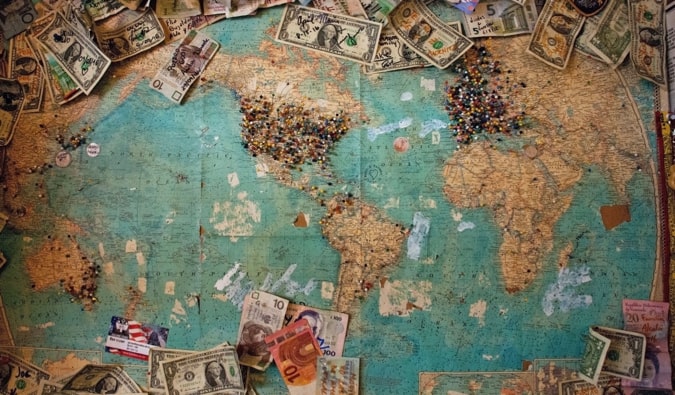
I remember when I started planning my first trip around the world. I had no idea what I was doing.
When I decided to quit my job and travel the world , I walked into a bookstore and bought Lonely Planet’s Southeast Asia on Shoestring . Buying that guidebook was my first step toward long-term travel. It made the trip seem more real, more tangible. It made it all seem possible.
While helpful, the book didn’t exactly prepare me for planning a trip around the world. Back then, there weren’t really travel blogs, sharing economy websites, and apps like there are today. I was excited and determined — but I was lost. I had to figure it out as I went, hoping I didn’t miss anything important.
Trip planning can be a daunting task. Where do you begin? What’s step one? What’s step two? What’s step three?
It’s easy to get overwhelmed, especially when you haven’t done something like this before — and especially considering just how much information there is out there these days. Blogs, social media, and guidebooks have never been more plentiful. There’s a firehose of information out there that can sometimes make the task of planning a trip even more challenging and overwhelming.
After a decade of traveling the world , I’ve planned countless trips and vacations for myself, friends, family, and even group tours. In the beginning, it was trial by fire and I learned a lot of lessons the hard way . However, that helped me develop an efficient checklist that ensures I don’t miss anything important during the trip planning process.
After all, I don’t want to get to my next destination and then realize I forgot something. And neither do you!
There is a lot of information on this website ( and even more information packed into my book ), but one question that comes up frequently is, “Matt, how do I put this all together? How do I plan a trip?”
In a continuing effort to help you get out the door and into the world, I’ve created this step-by-step guide on how to plan a trip. It works for any kind of trip — no matter how long you’re going for! Just follow this checklist and you’ll be off in no time!
Table of Contents
Step 1: Decide Where You Want To Go
Step 2: decide the length of your trip, step 3: research your costs, step 4: start saving money, step 5: get a travels rewards credit card, step 6: switch to no-fee atm cards, step 7: stay focused and inspired, step 8: check for last-minute deals, step 9: book your flight, step 10: book your accommodation, step 11: plan your activities, step 12: sell your stuff, step 13: automate your bills, step 14: pack, step 15: buy travel insurance, step 16: enjoy your trip.
If you want to jump ahead, simply click on any of the links above.
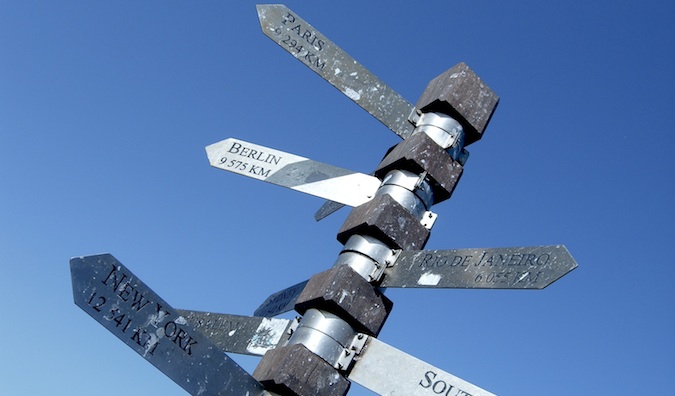
It’s a lot easier to mentally get behind “I am going to Paris in the summer” than “I’m going to Europe” or “I’m going somewhere.” Not only will your trip become more concrete for you and easier to commit to, but it will make planning easier as well…because you know what to work towards. Get specific with your plans. Get detailed. The more focused and concrete your goal, the easier it will be to actually reach it.
Resources for picking your travel destination:
- 200+ In-Depth Destination Guides
- 10 Destinations Under $50 Per Day
- The 10 Best Places to Visit as a Budget Traveler
- The 20 Best Tropical Islands in the World
How much does it cost to travel? That depends!
Without knowing how long you’re going away for, I can’t answer that question. And it’s a question you need to answer so you can start planning!
In order to figure out how much you need to save you’ll need to know how long your trip will be.
Are you going away for a week? A month? A year?
The length of your trip is a huge factor in determining how much money you need. Spend some time mulling that over until you have your answer.
For example, after you say “I’m going to Paris this summer,” add “for X days.” That way you can start to narrow down just how much money you’re going to need to save. “I am going to Paris for 10 days” is a trip that you can plan for. It’s an attainable goal.
So you know where you’re going and how long you’ll be there, but to really nail down how much money you need, your next task is to research the costs in your destination at the style of travel you want.
Do you want to backpack, or would you rather stay in luxury hotels?
How much are hostels, hotels, restaurants, and attractions?
Knowing will allow you to estimate how much money you’ll need for your trip. Here is how to research costs:
- Buy a guidebook.
- Check out my travel guide section .
- Google prices for specific things you want to do, such as scuba diving, bungy jumping, winery tours, etc. ( Get Your Guide is a good place to start for that)
You don’t need to do more than that. There’s so much information on the web that if you go down the rabbit hole of overplanning, you’ll get lost and confused by the firehose of information. Stick to those three things and you’ll be set!
In our example, if you are going to Paris for 10 days and need at least $75 USD a day (not including your flight), you know you need to save $750 USD (though round up to $800-900 USD since it’s good to have extra) for your trip.
If you were to travel around the world for a year, you’d need $50 USD a day .
Here are some other insightful posts that will help you better estimate your costs:
- 5 Ways to Make Your Money Last When You Travel
- How to Know the Travel Info You Find is Legit
- How I Research My Solo Travel Destinations

People bleed a lot of money every day through small purchases: a coffee here, a snack there. All of that adds up. In order to make changes to your spending habits, you first need to understand them. Making a list will do just that. It will also put your financial needs into a better perspective.
For example, if you need $2,000 USD for the trip you’re taking in eight months, that means you only have to save $8.33 USD per day. Couldn’t you find a way to save $8 USD per day? Heck, your daily coffee is most of that!
If you’re struggling to save money, here are 23 ways to cut your expenses and save money for travel . This will help you get started and on the road to saving money in no time!

These days, most cards have welcome offers of up to 100,000 points when you meet their minimum spending requirement. That’s enough miles for a free flight almost anywhere in the world!
If you want a free flight, sign up for the cards that help with that. If you want free hotel rooms, get a hotel card. Either way, sign up for a travel credit card and start earning points today. As long as you can pay off your monthly balance, you’ll get free travel credit.
You don’t need to sign up for very many cards either; pick one or two and focus on those. Do this the moment you decide you want to travel. Don’t wait — waiting equals lost miles, which means less free travel.
Collecting points and miles is what all the experts do to cut their costs and travel longer. It’s what has kept my costs down and me on the road for so many years. While the best cards are only available in the US, there are still plenty of options for Canadians as well as folks from Europe, Australia, and New Zealand.
For more information on travel credit cards and using points and miles, check out these posts:
- Points and Miles 101: A Beginner’s Guide
- How to Pick the Best Travel Credit Card
- The Best Travel Credit Cards
- How to Earn Points by Paying Your Rent
- The Ultimate Guide to Points and Miles
- How to Use Points and Miles in Canada
Once you’re abroad, you’re going to need money. While many countries accept credit cards, in the majority of countries cash is still king. That means you’ll need to use ATMs to withdraw the local currency.
And that also means you’re going to get dinged by ATM fees.
If you’re just away for a week or two, paying a few dollars in ATM fees isn’t the end of the world. But if you’re away for a longer period, those fees add up and chew into your travel budget — a budget you’ve worked hard to grow. Don’t give banks any of your hard-earned money.
How? By using a no-fee ATM card.
I use Charles Schwab , but there are lots of other banks (don’t forget to check your local banks) that don’t charge ATM fees. Additionally, you can join a bank in the Global ATM Alliance .
By using a no-fee ATM card you can avoid those pesky ATM fees, leaving you more money for what it was intended for: travel.
Here’s exactly how you can avoid ATM fees while traveling .
While you get closer to your goal, make sure that you keep feeding your desire to travel. Travel planning can be exhausting and overwhelming — especially if you don’t have support from your friends and family (and especially if your trip is still months away). It can often get discouraging and feel out of reach at times.
Luckily, there are tons of ways to stay focused and keep your spirits high thanks to the amazing community we have on this website. Here are some inspiring travel stories to help keep you inspired to travel:
- Why It’s Never the Perfect Time to Travel
- 13 Travel Books That Will Give You Serious Wanderlust
- How to Change the “I’m Too Poor to Travel” Mindset and Say Yes to Travel
- 8 Ways to Stay Motivated to Travel
Additionally, be sure to join our online travel community The Nomadic Network . Not only will you find support (and tons of tips) online, but we also host regular in-person and virtual events all around the world. These are a great way to get inspired, meet other awesome travelers in your area, and get travel advice.
Okay, you’re inspired, prepared, and on your way to saving money for your trip. But before you go buy that flight or book that hotel, check for deals you might have missed. You may dream of Paris but maybe there are great deals to Berlin right now. Or maybe you can get a seven-day cruise for 70% off, a package deal to Hawaii for the price of your flight to Paris, or 50% off sailing trips around Greece.
These days, there is always a deal to be found — especially if you’re flexible with your dates and/or destinations. Some deal websites worth checking out are:
- Going (Formerly Scott’s Cheap Flights)
- The Flight Deal
- Holiday Pirates

Fortunately, there are still many ways to avoid being the person on the flight who paid the most for their ticket. My two favorite sites for finding cheap airfare are:
- Skyscanner – Skyscanner is the best website for searching multiple destinations at the same time.
- Google Flights – Like Skyscanner, Google Flights is great for open searches to multiple destinations.
For the best deals, book your flight about two-three months in advance. Here are two articles on how to score a cheap flight:
- How to Find Cheap Flights
- Booking Flights: Everything You Need to Know
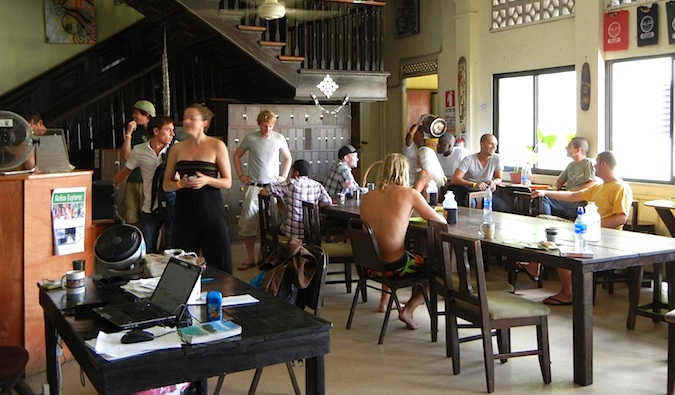
For trips longer than two weeks (or if you are going to be traveling long-term) just book your first few days. That will ensure you have a place to go on arrival. Once there, you can get insider advice from your hotel/hostel staff as well as other travelers. You can then use that info to plan your next steps.
While you can book more than your first few nights, you might end up wanting to change your plans once you land. I prefer having flexibility, which is why I always just book my first few nights and go from there.
Here are my go-to sites when it comes to finding the best deals on accommodation:
- Hostelworld – Hostelworld has the largest selection of hostels and is my go-to site for finding affordable hostels.
- Agoda – Agoda has the best results if you’re heading to Asia (though they sometimes have good US deals too).
- Booking.com – Booking.com is the best overall platform for finding budget hotels and guesthouses.
If you’re on a tight budget or you want to connect with more locals during your travels, consider joining platforms like Couchsurfing or BeWelcome . These communities allow travelers to stay with locals for free as a sort of cultural exchange.
Long-term travelers can also try housesitting or WWOOFing as well as they both offer free accommodation (in exchange for pet sitting or farm work respectively).
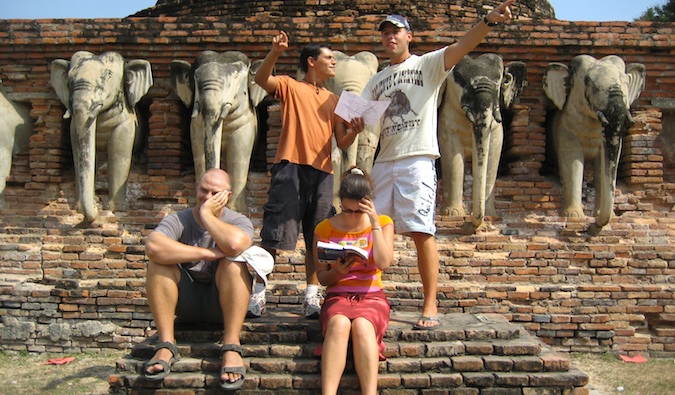
Search online for discounts as well. While some countries offer cheaper prices in person, others give discounts to those who book early/online. Research which is which for your itinerary so you can save money.
For shorter trips, you can also book your activities in advance to ensure you get tickets. For longer trips, book as you go.
Additionally, before you leave home, have a rough idea of what activities are priorities for you. That way, if you run out of time or money, you can focus on your top activities so you don’t miss out. Also, make sure to double-check that there are no holidays or other obstacles that will prevent you from certain activities as well.
If you are going on a long-term trip (six months or more), consider selling your stuff in order to earn extra money for your trip. Start doing this about 60 days before you leave. Some sites to use are:
- Gumtree – An online classified site with a focus in the UK and Australia.
- Amazon – The biggest online store in the world.
- Craigslist – Online global classifieds that have both local and global reach.
- eBay – Another global online classified site.
- Facebook Marketplace – Great for finding people near you (so you don’t need to ship your items).
If you aren’t going to be gone that long, skip this step. If you are going away long-term but want to keep your stuff, move it to a friend’s house or keep it in storage. A good storage company in the US is Public Storage . It’s one of the most affordable options out there.
Get rid of your mail, go paperless, and set up online bill payment for your recurring bills to ensure you won’t miss any while overseas. If you are still going to get paper mail, use a service like Earth Class Mail , which will collect and scan your mail for you. (If you are going on a two-week trip, you don’t really need to worry about this, so you can skip this step, too.)
If you have the option (and don’t want to pay for a mail service), you can also have all your mail sent to a friend or family member.
Additionally, you’ll want to make sure you cancel any phone plans you have or switch your plan to one that is more travel-friendly. T-Mobile is great for travelers going on trips under 3 months. For any trips longer than that, you’ll want to cancel your plan and just buy SIM cards abroad as that will be much cheaper.
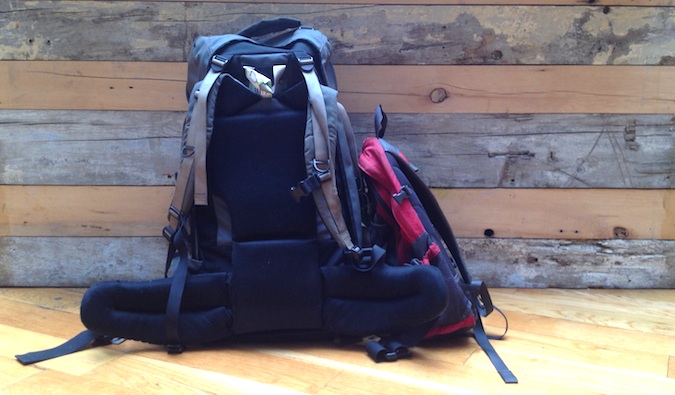
I travel with a 45L REI bag and then a smaller day bag.
Unless you’re heading to multiple climates and need bulky winter gear, you don’t need a massive 70L bag stuffed to the top. Here’s my suggested packing list to help you take just the right amount of stuff and avoid overpacking ( here’s a list for female travelers as well ).
While what you pack will depend on where you are going, remember that you don’t need to pack everything you own. You can buy things you need on the road. You can do laundry overseas. At the end of the day, you have to carry everything you bring. So bring less!
There are a few extra items you might want to pack beyond your everyday clothes, though. Some things I like to bring with me are:
- First aid kit
- LifeStraw bottle with built-in filter
- Packing cubes (to stay organized)
- Travel lock (for hostel lockers)
- Travel adapter
- Quick-dry towel
Additionally, make sure you bring any prescriptions with you so you have enough for the duration of your trip. If that’s not feasible, bring a doctor’s note and prescription with you so you can fill it abroad.
While a lot of people think, “I’m healthy, I don’t need travel insurance . I won’t get sick,” travel insurance is much more than just medical protection. It covers you when your camera breaks, your flight is canceled, a family member dies and you have to come home, or if something gets stolen.
Yes, it’s an added expense. But it’s always better to be safe than sorry. I never leave home without it because I’ve seen first-hand just what can happen on the road.
I never thought I would pop my eardrum while I was scuba diving in Thailand or break my camera in Italy .
I didn’t know I would get knifed in Colombia .
My friend never thought he would break his leg hiking.
Another friend didn’t expect her father would die and she would have to fly back home.
Unfortunately, bad things can happen when you’re traveling. True, these events are few and far between. But they can cost tens of thousands of dollars to handle on your own. If you’re not prepared to pay out of pocket, buy travel insurance.
To help you figure out the best plan for you and your trip, here’s my ultimate guide to picking a good insurance company . It will show you how to pick a good plan that covers you for when you get sick, your flights get canceled, if you get injured, something gets stolen, or your trip is delayed.
Here’s a breakdown of my recommended travel insurance companies so you can see what company offers the best plans for your needs and budget:
- SafetyWing – Super affordable plans for budget travelers.
- Insure My Trip – Best for senior travelers.
- Medjet – Provides additional evacuation coverage to ensure you get home should an emergency occur.
- Insured Nomads – In-depth emergency and non-emergency coverage for long-term travelers and digital nomads.
For more information on travel insurance, you can check out these posts:
- What Does Travel Insurance Actually Cover?
- Is Travel Insurance Worth It?
- Do You Need Medical Evacuation Insurance?
Additionally, make sure you know your rights as an airline passenger. For example, delayed flights to/from Europe often mean you’re entitled to compensation (beyond anything insurance-related).
Learn how to ensure you are compensated if your travels are delayed or your flight is canceled .

If you’re feeling nervous, don’t worry — that’s perfectly normal. You’re about to embark on an amazing adventure — and that’s a huge change. Feeling anxious or nervous or unsure is something every traveler experiences. But you’ve made it this far. Trust your planning, follow your instincts, and you’ll have the trip of a lifetime. I guarantee it.
By using this post as a guideline for your trip planning, you can better organize and prepare for your trip. You’ll check all the boxes, not miss anything, and have plenty of money for your vacation. It can be as simple as booking a flight and packing or as complex as rearranging your entire life to go backpack the world forever.
But, no matter how long your trip may be, this list will help you stay organized and motivated as you plan your trip and step out into the world.
P.S. – Yes, I did leave out visas and vaccinations, because needing those isn’t as universal as the other stuff on this list, but don’t forget to check if you need those, too!
Book Your Trip: Logistical Tips and Tricks
Book Your Flight Find a cheap flight by using Skyscanner . It’s my favorite search engine because it searches websites and airlines around the globe so you always know no stone is being left unturned.
Book Your Accommodation You can book your hostel with Hostelworld . If you want to stay somewhere other than a hostel, use Booking.com as it consistently returns the cheapest rates for guesthouses and hotels.
Don’t Forget Travel Insurance Travel insurance will protect you against illness, injury, theft, and cancellations. It’s comprehensive protection in case anything goes wrong. I never go on a trip without it as I’ve had to use it many times in the past. My favorite companies that offer the best service and value are:
- SafetyWing (best for everyone)
- Insure My Trip (for those 70 and over)
- Medjet (for additional evacuation coverage)
Want to Travel for Free? Travel credit cards allow you to earn points that can be redeemed for free flights and accommodation — all without any extra spending. Check out my guide to picking the right card and my current favorites to get started and see the latest best deals.
Need Help Finding Activities for Your Trip? Get Your Guide is a huge online marketplace where you can find cool walking tours, fun excursions, skip-the-line tickets, private guides, and more.
Ready to Book Your Trip? Check out my resource page for the best companies to use when you travel. I list all the ones I use when I travel. They are the best in class and you can’t go wrong using them on your trip.
Got a comment on this article? Join the conversation on Facebook , Instagram , or Twitter and share your thoughts!
Disclosure: Please note that some of the links above may be affiliate links, and at no additional cost to you, I earn a commission if you make a purchase. I recommend only products and companies I use and the income goes to keeping the site community supported and ad free.
Related Posts

Get my best stuff sent straight to you!
Pin it on pinterest.
Top International Flight Routes .
Cheap flights, hotels , rental cars and travel deals:
KAYAK searches hundreds of other travel sites at once to find the best deals on airline tickets, cheap hotels, cheap cruises, vacations and rental cars.
Not what you’re looking for? Find thousands of other hotels , flights , car rentals and package deals with KAYAK.
- Work With Us
- Blogging Bootcamp

- Van Conversion Academy
- Campervan Shop
- Campervan Rentals
- Plan a Trip
- Itineraries
- Destinations
- Responsible Travel
- Family Travel
- Budget Travel
- Scuba Diving
- Travel Credit Cards
- Digital Nomad
- Teach English Abroad
- Blogging Resources
- Income Reports
- Travel Shop
- Meet Katie & Ben
- About Two Wandering Soles
- Personal Stuff
- Portfolio & Press
How to Plan a Trip: Your Step-by-Step Travel Planning Guide
Home » Blog » Travel Tips » How to Plan a Trip: Your Step-by-Step Travel Planning Guide
Planning a trip overseas, whether long or short, can seem overwhelming. But it doesn’t have to be! In this article, we’ll show you how to take the stress out of travel planning, by laying out a simple step-by-step guide on how to plan a trip that’ll ensure you don’t forget anything.

Have you ever been overwhelmed by the idea of planning a trip because it seems too, well… overwhelming ?!
There’s a lot to think about when planning travel: from getting a visa, to figuring out transportation, to booking accommodation and getting local currency, it can be downright stressful.
And it’s a bit contradictory, right? Stressing out over planning what is supposed to be a relaxing vacation. We’ve definitely been there. Many times , in fact.
But we’ve learned our share of lessons along the way and now we’re here to help.
In this article, we’ll show you how to plan a trip without the stress by laying out a simple step-by-step guide that’ll ensure you don’t forget anything.
Here’s exactly what you need to do to take a travel daydream and turn it into reality.
So whether you’re planning a 2-week getaway or a journey with no end date in sight, these steps will take you from the brainstorming phase to stepping foot in your destination. We think you might actually have fun planning your next trip. That’s a dare .
Alright, take a deep breath, because we’re digging right in!
How to Plan a Trip
- Step 1: Figure out your travel budget
- Step 2: Decide on your travel style/partner(s)
- Step 3: Choose a destination
- Step 4: Book flights
- Step 5: Book accommodation
- Step 6: Research things to do
- Step 7: Get travel insurance
- Step 8: Minimize travel risks
- Step 9: Pack your bags
- Step 10: Last-minute prep
Step 1. Figure out your travel budget

Before you can even begin to plan a trip, you need to take a good look at your finances and figure out how much money you have to spend on your adventure. This will dictate a lot of the future steps including where you can travel to and for how long.
This step might sound scary, but we’ve broken it down for you so you can create your very own customized travel budget. We’re even sharing exactly how we afford to travel and stay on budget .
If you have the time before you go, follow these simple steps to save money for your travels .
Step 2. Decide on your travel style / partner(s)
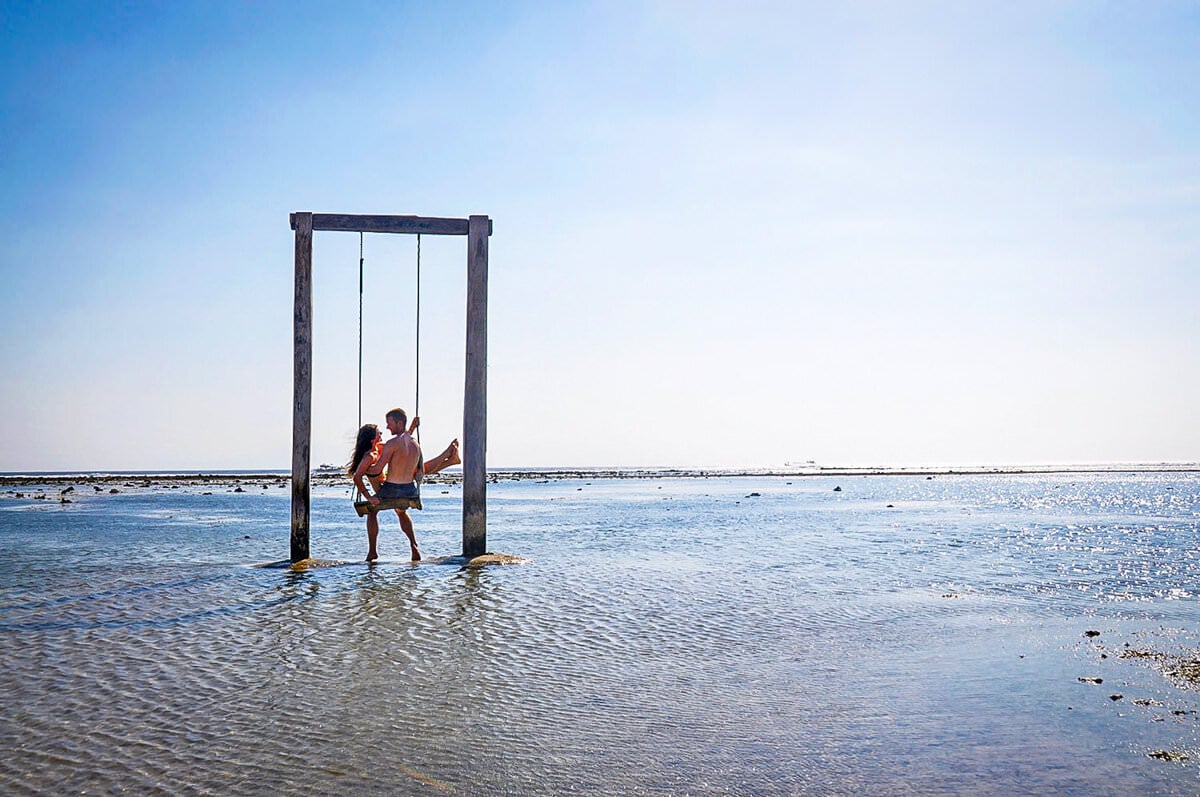
Is this a short vacation, a 3-week trip overseas or long term travel that you are planning for?
…And who’s coming with you?
Take a moment to answer this question… Are you going to be traveling solo or with a partner? A group of friends, or with your family and children in tow?
The answer to this question can help shape your trip quite a bit. For instance, a solo trip to Tahiti may not be the best choice, as this popular honeymoon destination is going to be swarming with couples on romantic getaways. Likewise, party-centered Ibiza might not be the best place for a wholesome family vacay.
- Traveling Solo? Traveling solo is an incredibly freeing experience, and there are many great cities around the world for solo travelers .
- Want a romantic getaway? Romance isn’t just limited to beaches and resorts. Check out our roundup of some of the top romantic destinations for every type of traveling couple , some of which might be a little unexpected.
- Looking for a perfect family vacation spot? There are destinations all over the world that are amazing spots to bring your kids !
If you are planning on traveling with a partner, don’t book your flights without asking them these questions first…
Step 3. Choose a destination
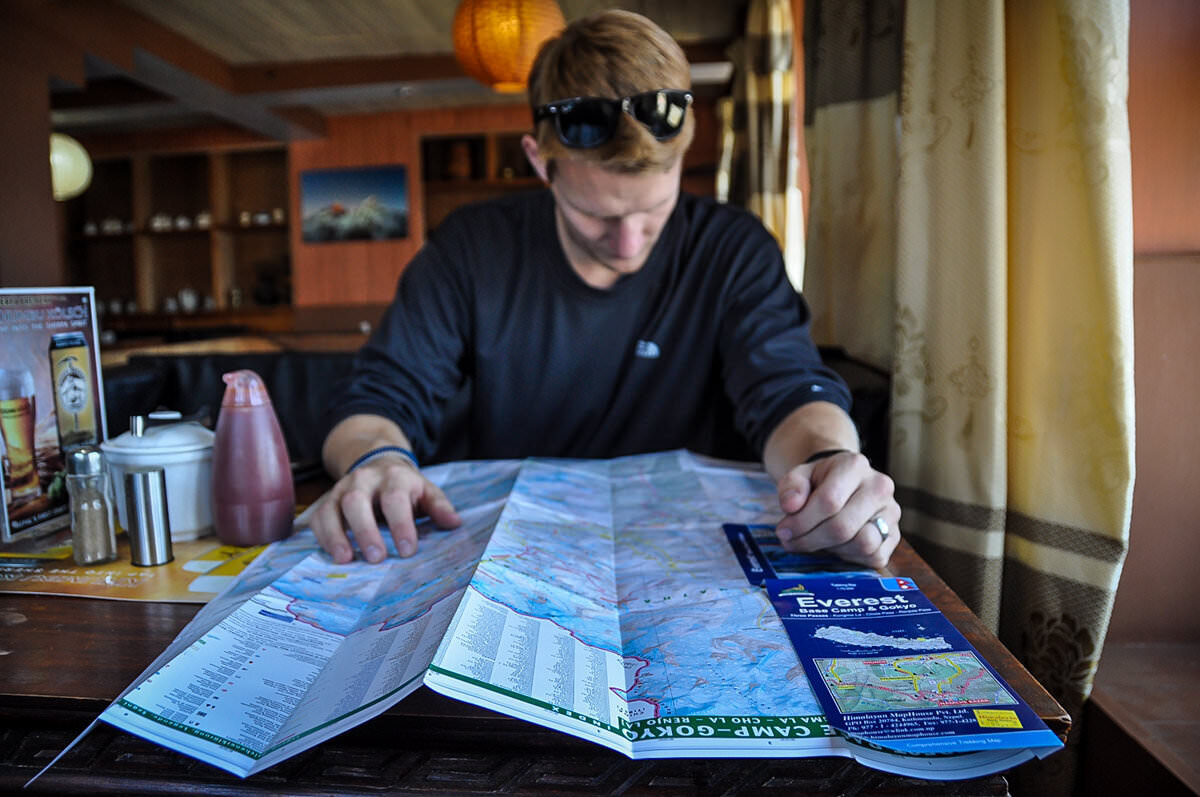
This step may seem obvious for some, maybe you already know exactly where it is you want to travel and that’s why you’re planning this trip in the first place. For those of you that have a destination nailed down, there are still a few things we’d suggest you consider, you can skip right down to the research step.
For those of you that have the itch to travel, maybe even the vacation time set up, but still have no idea how to narrow down just one place, we suggest looking at a map. No really! Hear us out…
Literally look at a map, and start circling all the cities, towns or attractions you want to visit. Look on Instagram for inspiration. Don’t limit yourself. What do you want to do? What do you want to see and experience? When planning a route, we typically look at other trusted bloggers’ recommendations.
And no need for paper maps anymore, go digital! Here’s a great tutorial on how to use Google My Maps . It’s game-changing.
We figure out how many nights we can stay in each city and how we’re going to get from city to city. We have many itineraries on our Itineraries page where you can see examples of our travel routes and recommendations. We also suggest taking a look at Lonely Planet travel guides .
Once you think you’ve nailed down a place, or places…
Do your research
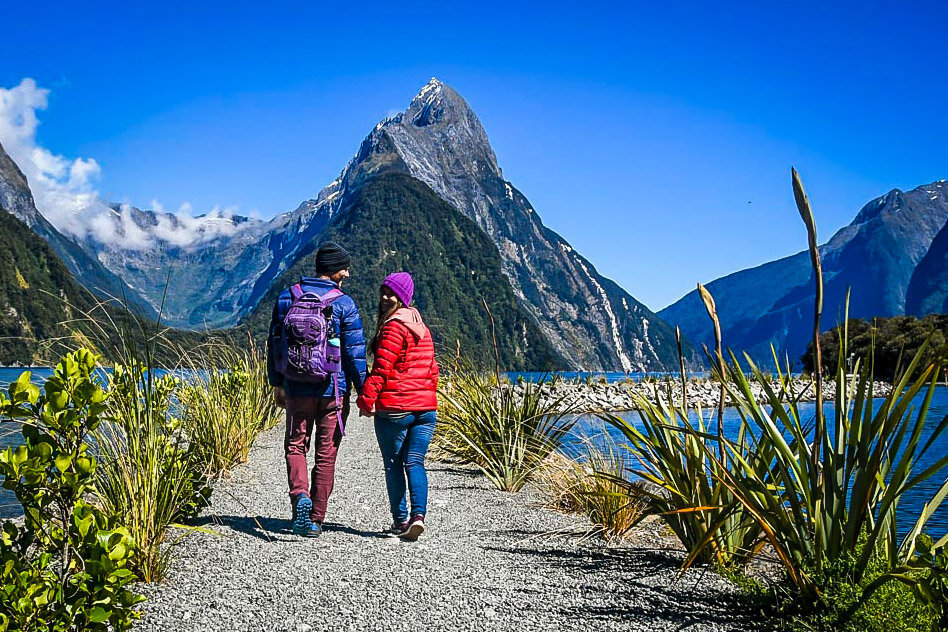
Don’t forget to do a little digging and make sure that the time of year you plan to travel is optimal. We have failed to do our research a few times and it ended up really affecting our trip.
Asking yourself the following questions can really save you the troubles or headaches down the road:
What will the weather be like?
- Will it be the wet season? Hurricane season? Super-duper-unbearably hot?
Example: We traveled in India during the hottest months of the year and literally could not do much outside some of the days because it was 110 °F (43.3 °C). After that, we vowed never to make the mistake of traveling without really understanding the weather first.
Is it peak tourism season? Low season?
- Will it be hard to get a hotel because it’s peak season? Will the lines and crowds at tourist attractions be ridiculous?
- Likewise, if you are traveling during low season, should you expect a lot of the businesses to be shut down? Will closures hinder your chance to see and experience everything you were hoping to?
Example: We visited Croatia in July – its busiest month of the year – and found ourselves super frustrated with the crowds and jacked up prices. We ended up shortening our time there because we were not enjoying it as much as we expected.
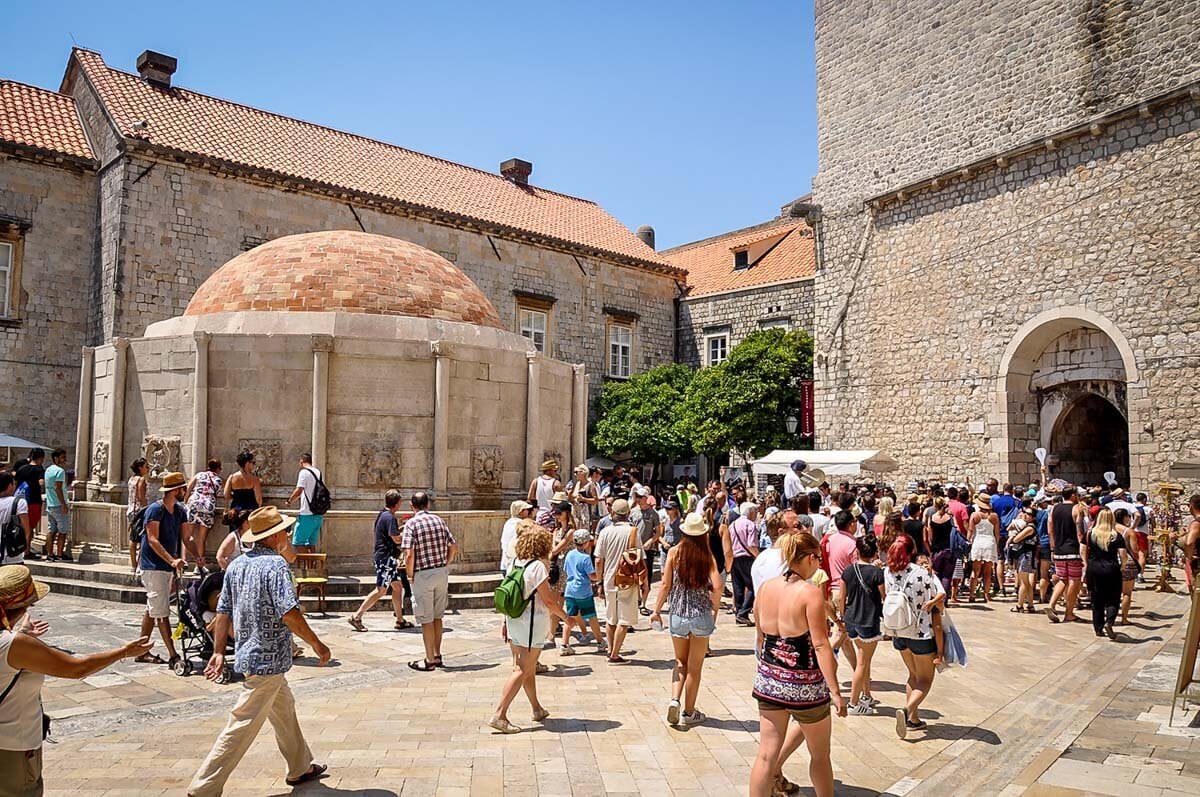
Hold up! Before you start a Googling storm, we’ve got some good news: there are some resources out there that make this process for researching so much faster!
- If you know WHERE you want to go, Travelendar (combination of travel + calendar) will tell you what time of year is best to visit.
- If you know WHEN you want to travel, check out this list that breaks down which destinations are best to visit each month of the year .
- We’ve also done the research for you, nailing down the pros and cons of visiting during different times of the year for a number of popular destinations such as Japan , Bali , New Zealand and Iceland .
But don’t worry if you don’t know where OR when you want to travel… check out this calendar of events around the world for inspiration!
How cool is that?!

These events span all destinations and interests: from European music festivals (like Sziget Festival in Budapest, pictured above!) to cultural celebrations to naturally occurring events like the migration patterns of wildlife in Africa.
When you find an event that interests you, click on it to learn more.
Pace yourself
Thinking about your pace will determine how many of the places you circled above you’ll realistically be able to see.
Do you want to pack in as much as possible, or do you want to choose a couple places and really get to explore them? Do you want to travel slow and take in the culture to really understand how locals live?
Or do you want to tick places off your list and move from city to city, seeing as much as you can? Maybe a happy mixture of slow and fast? This all depends on the amount of time you have and your budget.
Find out visa requirements
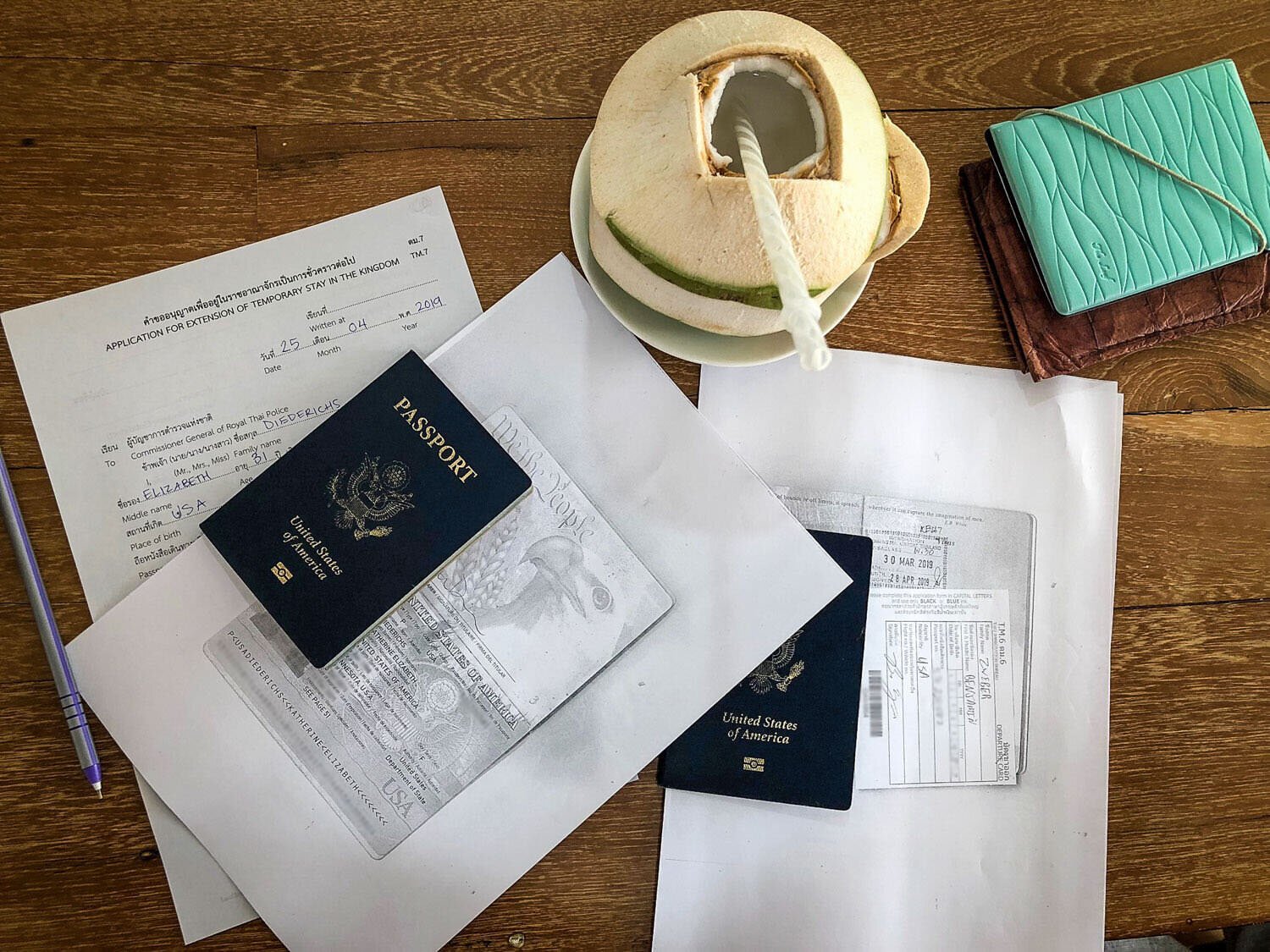
Investigate if you need to obtain a visa for the country or countries you’re thinking of traveling to. You may not need one for the first country you arrive in, but will you need one for the other countries in your itinerary? Can you get a visa online, visa on arrival, or do you need to get it in your home country?
For instance, if you’re traveling to Vietnam, Americans need to apply for a visa ahead of time (and here’s the best and cheapest way to get one ).
If you don’t know if you need a visa, check out your home country’s visa websites:
- USA citizens
- UK citizens
- Canadian citizens
- Australian citizens
- Singaporean citizens
Step 4. Book flights
You know where you want to go? Check. Have your visa? Check.
Now here comes our favorite part: It’s time to book a flight!
First, you’ll need to answer these questions: What airport will you fly into? Are you going to make a round trip and fly out of the same airport? Or are you departing out of a new place?
Tips for getting the best deals on flights:
- Know when to buy. Depending on where you are flying to and from, there are different recommendations for how far in advance you should buy your flight.
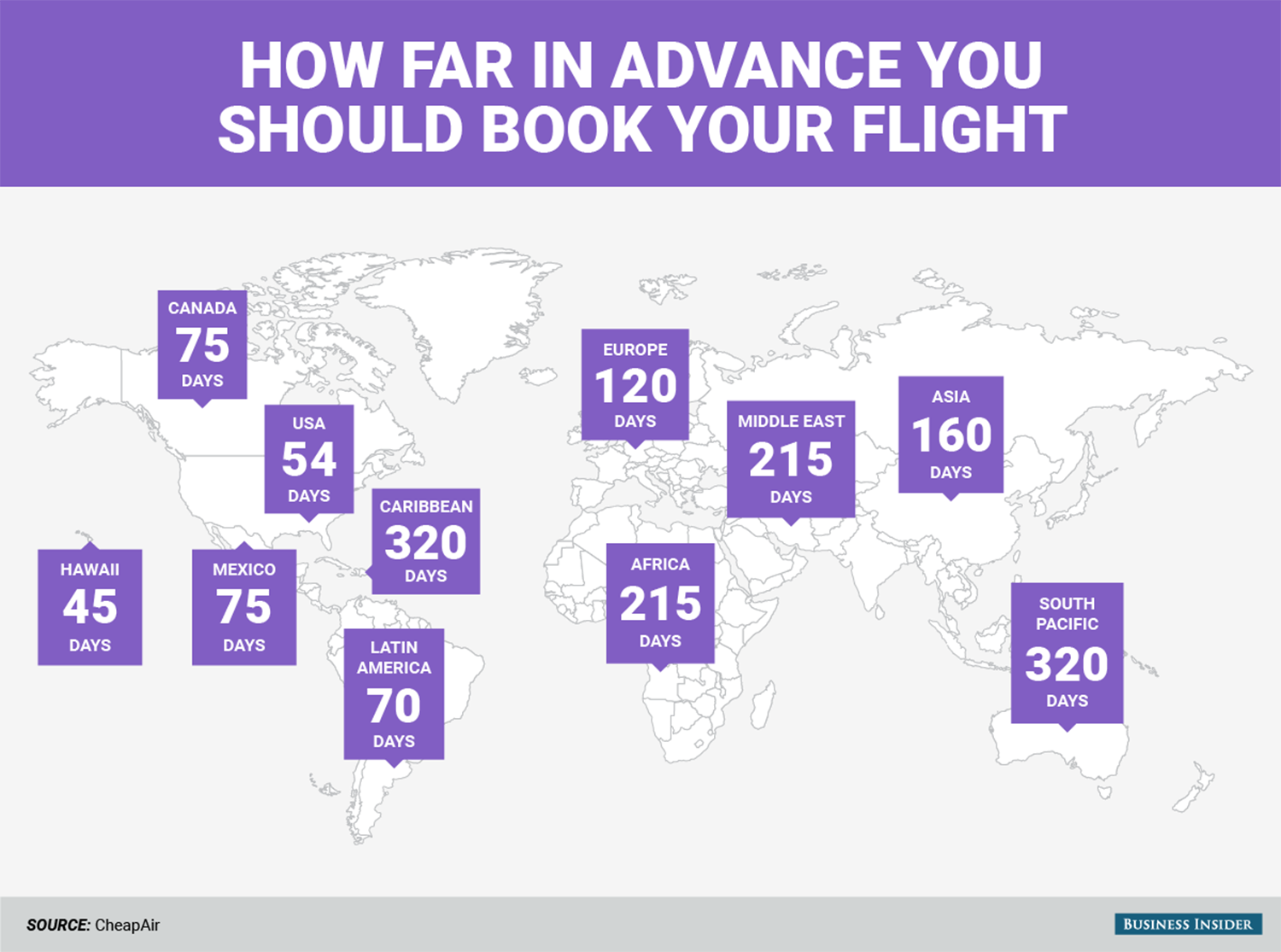
- Play around with breaking the flight up. For example, instead of searching for a flight from Minneapolis to Japan, we’ll search Seattle to Japan. Then we find a flight from Minneapolis to Seattle. This allows you to have a layover in a cool city, and can be a lot cheaper.
- Another good gateway into Asia is flying through China. You can usually find one way tickets to China from major US cities for around $350!
- Sign up for price alerts. Many search engines allow you to sign up for alerts between destinations. You’ll get email notifications when the fare goes down, so you can jump on it!
- There are tons of credit cards that give you miles for purchases. Find the best travel credit card for you here . If you’re inclined to get an airline credit card, think about the major airlines at your home airport. You’ll most likely be booking flights with that airline so might as well rack up the points.
Don’t forget to sign up for the frequent flyer miles program with flight you choose! Many airlines are part of a broad network and the miles are sometimes transferable.

Understanding WHY a flight is cheap is important. Make sure you think about the arrival time at your destination. The cheapest flight might get in at 2 in the morning and you’ll have to wait for hours for your guesthouse to open, or hotel check in time.
On the flipside, if you depart super early in the morning, you may have a difficult time hailing down a taxi that early (and have to pay a premium for the ride). Sometimes the absolute cheapest fare will actually cost you more in the end.
If your trip doesn’t involve taking a flight, check out these tips for planning an epic USA road trip .
When searching for a flight we like to use Skyscanner first because it allows you to search across the entire month to find the cheapest flight.
Want more tips for finding the best deal on airfare? You’re in luck, because we have an entire article dedicated to how to find cheap flights !
Are you a nervous flyer? Don’t let the anxiety of flying prevent you from traveling. Check out these tips for fearful flyers that will help put you at ease.
Step 5. Book accommodation

Depending on how long your vacation is you may choose to book all your accommodation ahead of time or none at all.
For instance, if you only have two weeks, it might be best to arrange your hotels or hostels online so you don’t waste precious time trying to figure out accommodation when you’d rather be exploring. Plus, you don’t want to run the risk of everything being booked up!
If you’re traveling long term, however, you may just book a few days at a time. Or you may prefer to wing it and walk into hotels once you arrive in a town.
We put a lot of consideration into where to book our accommodation when planning a trip.
First, we want to consider location. We may start to research things to do in a destination before this step so we have a better idea of where we will want to visit and what the most central location will be for us.
If a city is known for its nightlife, we might consider staying in a quieter neighborhood. If accommodation costs skyrocket the closer to the city center you get, we may consider saving money to stay somewhere further out.
Transportation
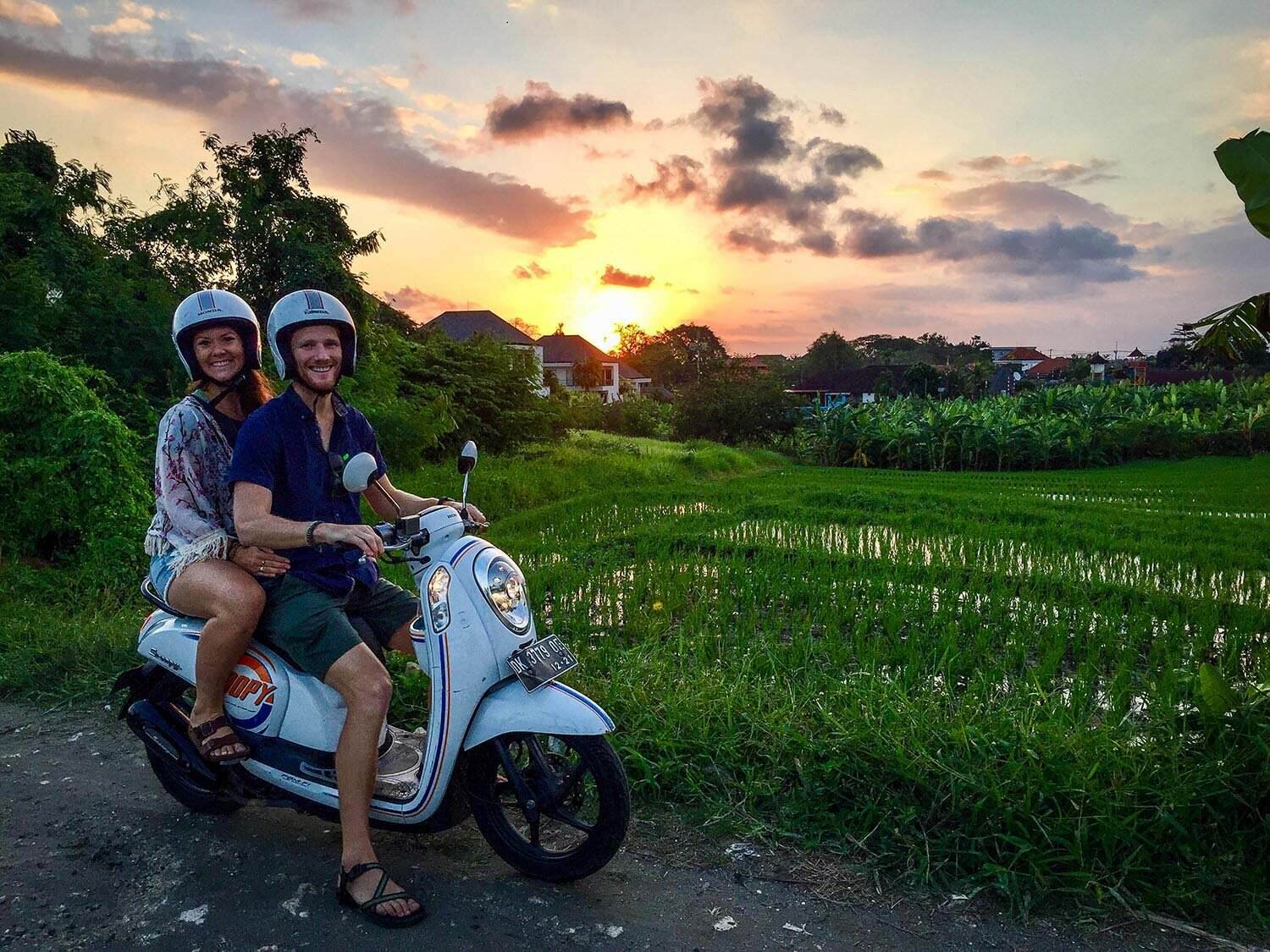
We also consider transportation in a new city. If the city is very walkable, we’ll want to stay right in the center. If Ubers or public transportation is easily accessible, we may consider saving money by staying further outside the center. We recommend doing plenty of research on transportation options and costs before nailing down your accommodation.
Length of stay
If we are planning to stay in one location for a longer period of time (a couple weeks or more), we like to have a place that feels a bit more like “home” than a hotel. We love to cook, so a place with a kitchen allows us to enjoy our passion and save money on dining out at the same time! We usually use Airbnb or Booking to find apartment-style rentals in new cities.
If we have a short layover in a city, or are staying just a few nights, we might splurge on a hotel, or even try to save money by booking a hostel.
Everything you need to know about Airbnb : You’ll find loads of info on how to book Airbnbs, red flags to watch out for when booking, and our favorite Airbnbs.
Booking resources
Depending on where in the world we’re traveling, we switch up our booking sites. Here are our favorites:
- Asia: Booking or Agoda (we find Airbnb is only available in certain cities/countries and not in others in Asia)
- Europe: Booking , Airbnb or Hostelworld
- USA: Airbnb (we rarely stay in hotels in the US and Hostels aren’t nearly as prevalent in the US as elsewhere in the world)
- South & Central America: Hostelworld , Airbnb or Booking
Step 6. Research things to do
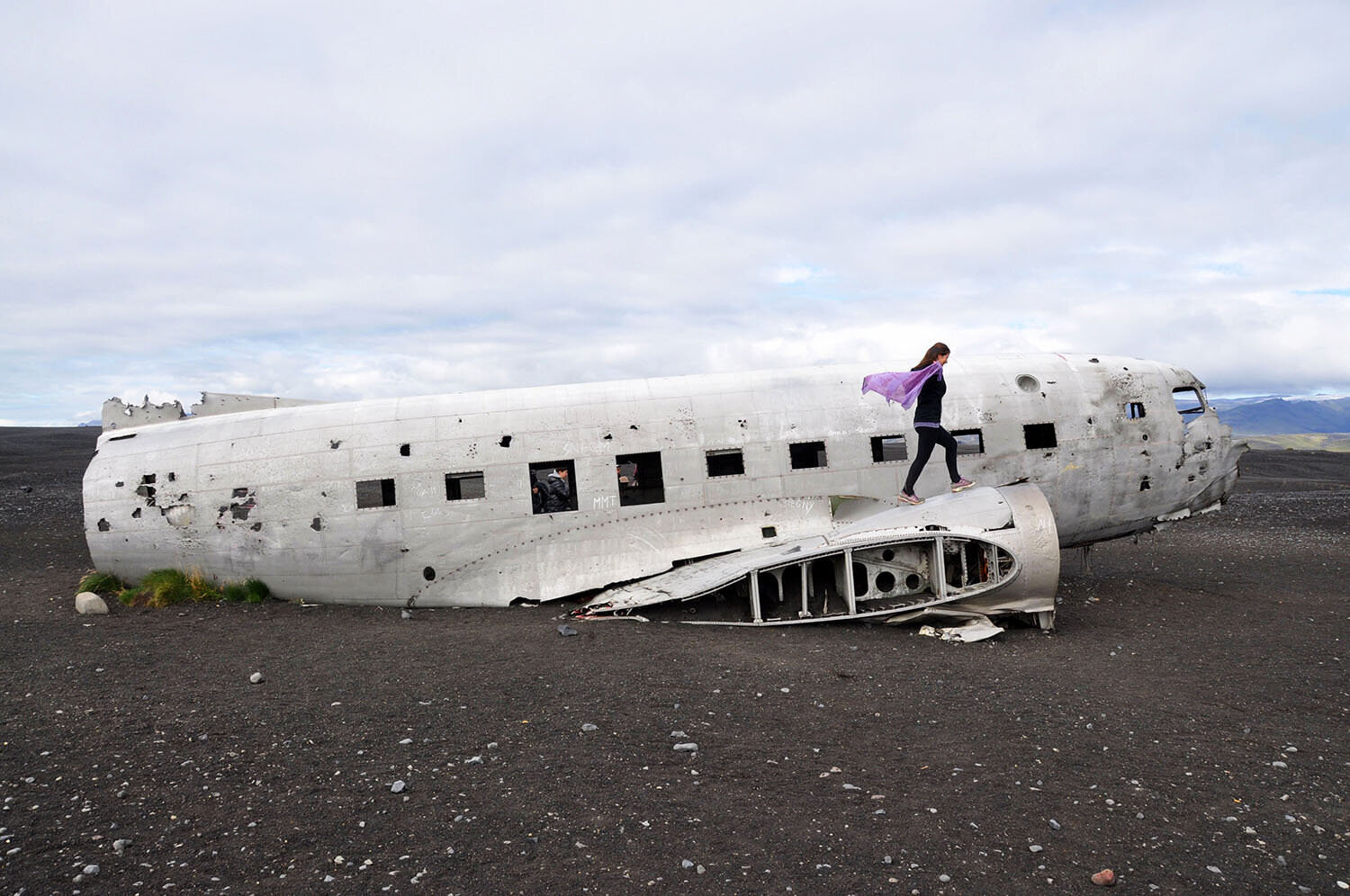
When talking about how to plan a trip, this is where the fun really starts … We LOVE doing research to find out what kinds of adventures we can have in a new destination.
Here are a few of our favorite resources for researching travel destinations:
Pinterest : Probably the first place we look when we get curious about a new place. We use Pinterest as a search engine (just like we would use Google!) and we have found in our experience that there is TONS more helpful content on travel there than if we were to try and sift through the first page of Google. We love that you can save articles in organized boards as well to return to later (you may have noticed the Pins we create at the bottom of all of our own articles).
Bloggers: We are constantly looking to other bloggers we trust for advice on new destinations. We have some we follow closely so we always know where to check if they have information on a place. We like to read a few different suggested itineraries for new cities to figure out what the can’t-miss attractions are and get ideas on how to plan our own itinerary. We leave comments on posts and reach out via social media if we are still left with questions after reading a blog post about a new place.
Airbnb Experiences : Sometimes just checking out what’s offered on Airbnb Experiences is a great way to get ideas of cool things to see and do in a new place. You might even find an experience or 2 you want to sign up for!
Trip Advisor: We like to check reviews for things on trip advisor to see what other travelers have to say about certain experiences or attractions. There can be some seriously good advice on there!
Step 7. Get travel insurance
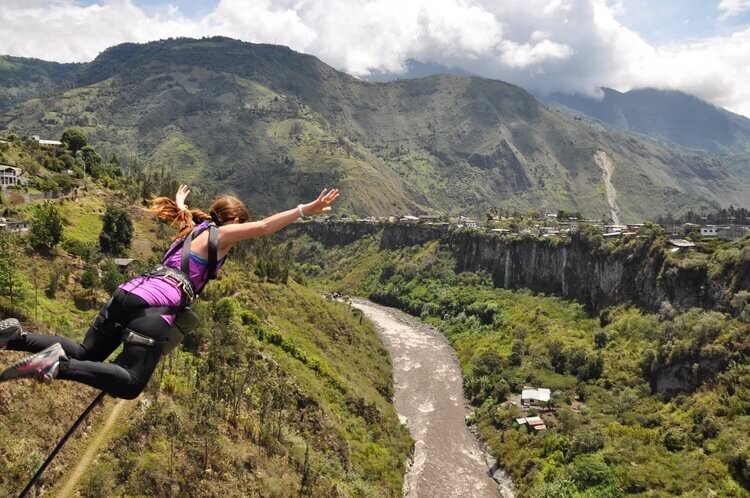
Even though you might be safer abroad than in your home country, accidents happen everywhere and you should always be covered. We never leave home without travel insurance and neither should you.
One of the most popular travel insurance companies is World Nomads . They cover anyone worldwide and are extremely easy to use. We were covered by them when we trekked to Everest Base Camp and were very happy with our experience. Fill out the info below to get an instant quote:
For more information on how to pick a policy and what we look for in travel insurance, check out our detailed travel insurance comparison article .
Be sure to read our essential travel safety tips for more detailed advice about how to stay safe and protect your belongings while traveling.
Step 8. Minimize travel risks

When breaking down the steps for how to plan a trip, this is an important one. There are plenty of steps you can take before you even set foot in a country to minimize your risk of something going wrong.
Register on your country’s Smart Traveler program
For Americans, you should sign up for the Smart Traveler Enrollment Program (STEP). Through STEP you’ll get emergency updates that would affect your travels, such as bad weather or civil unrest or protests.
It will also give you easy access to your embassy in the country you’re visiting. Lastly, if anything bad were to happen to you on your travels, you’d be easier to track down. Check your country’s travel department for similar programs.
Get all necessary Immunizations ahead of time
Before setting foot in a new country, you’ll want to be sure to protect yourself from foreign disease. Use the CDC website to research vaccinations and medications you might need in the destination(s) you are planning to visit. We’d also advise visiting your doctor before a longer trip to make sure all of your health concerns are taken care of.
Scan your documents and email yourself a copy
Scan a copy of your passport and any credit cards you’re bringing, and email it to yourself. Do the same for your travel insurance documents and receipts of the valuables you’re carrying. If anything happens to these while you’re traveling, you’ll have an electronic version.
Know common scams

While you’re in research mode, do a quick search of common scams in your destination. Being aware of popular scams is often all you need to avoid falling victim.
We have run into plenty of known scams on our travels, especially in bigger cities like Bangkok , and have even fallen victim to some ourselves. Unfortunately, scams are a risk you run in traveling, and sometimes unavoidable, but the more informed you are, the better prepared you will be to avoid getting caught in a tourist trap.
Bring backup credit cards
If you are traveling in a group or as a couple, you have a bit of a support system (assuming you each bring at least one credit card).
This tip is particularly geared towards solo travelers.
You will always want to bring a backup credit card (and perhaps a backup debit or ATM card as well) in case of emergencies. We’ve been in situations abroad where our cards have been stolen (sometimes it’s not always obvious as it happens with a swipe and we still have the card in our possession) and if you don’t have a backup, you will have a very hard time accessing your money.
For this reason, we like to keep our back ups in a separate location in our luggage (one in our hand luggage, one in our suitcase) and then leave one behind at our accommodation in case we were to be mugged. It may sound a bit extreme, but it’s always good to be prepared!
Secure your belongings
It should go without saying that you’ll want to keep your belongings, and especially your valuables in secure places while traveling (you know, use a purse with a zipper for less-easy access and don’t hang it on the back of your chair on a crowded street corner cafe). There are some items you can purchase ahead of time to help keep your belongings safe while traveling.
- Basic travel locks
- Bluetooth tracking luggage locks
- Hidden pocket scarf
- A camera bag disguised as a purse
Step 9. Pack your bags

It’s starting to feel real now isn’t it?! Your trip is coming up fast and it’s time to get packing!
Packing for a trip can be quite the puzzle. You want to be prepared and make sure you don’t forget anything, but at the same time, don’t want to feel weighed down by too much stuff.
If you’re a self-proclaimed over-packer, or someone who always ends up using only half the things in their suitcase on every trip… I’m right there with ya! We recommend planning out your packing ahead of time so you are not rushing at the last minute to get everything you need stuffed into your oversized suitcase.
One tip is to lay everything you think you will need for a trip out on a flat surface (your bedspread works great for this) and then take away half — yes half! — of it. That is how much stuff you should realistically be trying to pack.
Another rule of thumb we like to try and stick to is packing in a carry-on for any trip shorter than one month .
This may seem incredibly daunting to some, but trust us when we say, you’ll be much happier trying to navigate the cobblestone streets of Europe or lifting your luggage onto a train if it’s smaller than a 50 pound bag!
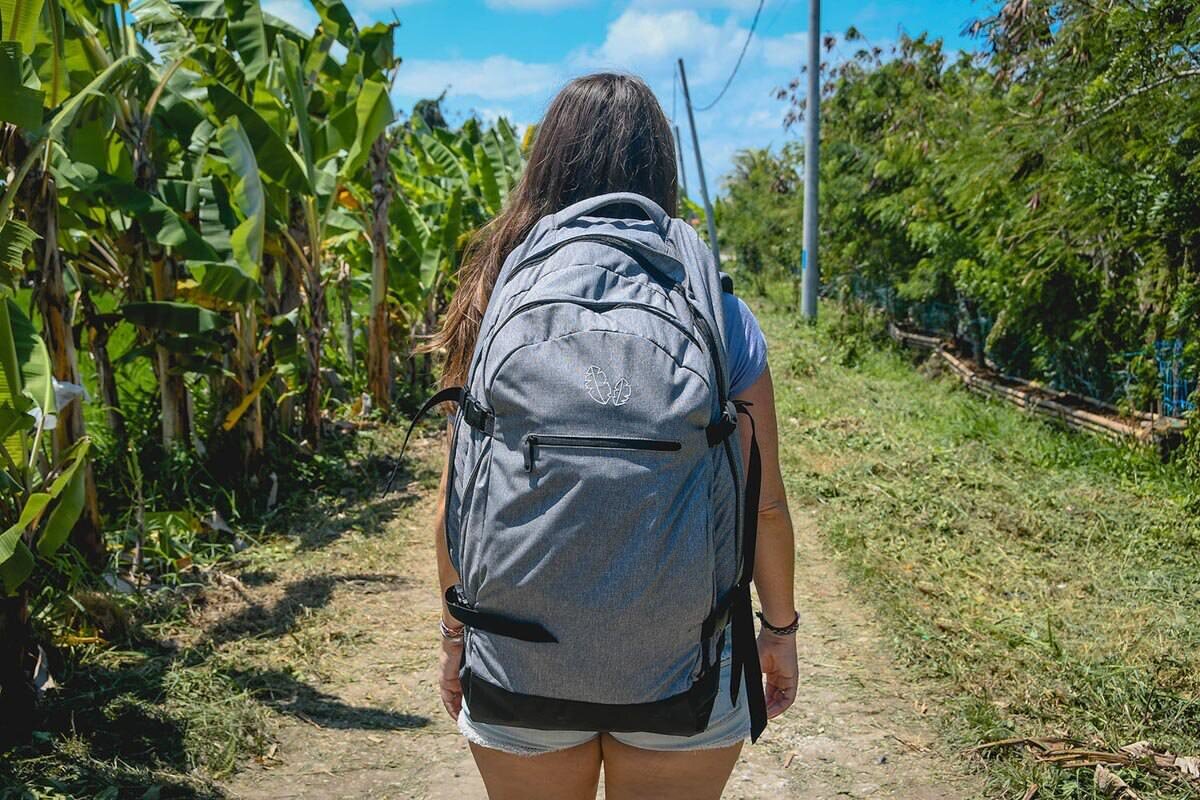
Below are some essentials you’ll want to make sure you pack for any trip:
- Passport/Identification
- Wallet/credit cards (and backups!)
- Chargers for all of your electronics
- Kindle or e-reader
- Travel pillow
- Insulated water bottle
Think about your electronics
This is a big one not to forget! If you are traveling abroad, you’ll want to look into the outlet situation you can expect in your destination and how it compares to that of your home country.
A quick Google search will show you what type of outlets you’ll find in the country you’re visiting. Here’s a great website for electrical outlets . Look at the voltage too, and check the compatibility with any electronics you’re planning to bring along. A great purchase is the travel converter with adapters .
Packing resources
Use these packing resources for tips and ideas to help you pack for your next trip:
- How to Pack for 3 months in a Backpack
- Ultimate Packing Guide for Long Term Travel
- Eco Friendly Travel Gear Packing List
Step 10. Last-minute prep

You’ve made it to the final step! Your trip is just around the corner and all that’s left is doing a little research and making some last-minute arrangements.
Data/Internet access
Research the best way to gain access to data or Internet while you’re in your destination. If you’re traveling within your home country, this shouldn’t be a problem.
However, if you are traveling abroad, you might want to consider purchasing a prepaid local SIM card when you arrive. This will be the cheapest way to gain access to data abroad.
Use our ultimate guide to getting an international SIM card , including helpful tips for using your phone abroad.
Download some helpful apps
- Google Translate: Type in something you want to say, and it’ll translate the phrase into any language you select. You can even take a picture of a menu written in an entirely different language (like Korean, for example), and it will translate what is written. It is amazing!
- Google Maps: Before going to a new location, we typically download the offline map for our destination in our Google Maps app. If you have your GPS turned on, the app will show your current location with a blue dot even when you don’t have data or WiFi turned on. This is super helpful if you’re on a long bus ride and want to know exactly where you are, or when you’re lost wandering around in a big city.
- GlobalConvert: This app makes it easy to convert anything from currency to distance to temperature. (Super handy for Americans unfamiliar with the metric system.) And the best part is, it works offline!
- Time Buddy: If you’re traveling on the other side of the world, this app makes it super easy to figure out time difference between where you are and your home country.
- Trail Wallet: Yeah, yeah, I know, we’ve talked about this one a lot. But it has seriously changed how we travel. This app converts seamlessly through currencies and shows you exactly where you are in regard to your budget. Download this app and you’ll be able to travel longer. Seriously.
Have a plan for currency

On long-term trips, we typically withdraw money from a local ATM as soon as we enter a new country. We NEVER use currency exchanges as these tend to take a big percentage (like 30%). Plus ATMs are much more efficient.
Our Charles Schwab card ( more info here ) reimburses all ATM fees, so we only take out small amounts at a time.
Tip: Just remember to decline the currency conversion rate offered by the ATM. When you do this you are referring to the conversion rate set by your bank instead. And in our experience, the banks always give a more fair conversion rate and than the pre-set ATM conversion rates.
Notify your bank of your travel plans
This is a step that can sometimes be overlooked, but can put a serious damper on your travel plans when you enter a new country only to find your bank has automatically shut off your debit card because it thinks you are attempting a fraudulent withdrawal.

Learn the language (at least a few phrases)
We’re not insinuating that you must be able to have a conversation in the local language before visiting a foreign country. But learning a few key words or phrases shows locals that you are trying, and people usually respect this.
You’d be surprised how far learning “hello” and “thank you” can get you. Some other helpful words to learn no matter where you are traveling are: “bathroom”, “delicious” and “beautiful”.
And don’t forget about numbers. Write down the numbers 1 through 10 in a small notebook and translate them. Knowing a few numbers makes it a lot easier to order at restaurants.
If you have any allergies or medical conditions, it’s a good idea to write it out and translate it to the language of your destination country. For instance, “I am a vegetarian,” or “I am diabetic”. Print it out in the local language (and the phonetic spelling) and carry it in your wallet. It will definitely come in handy.
Refine your manners
A little research can go a long way. Certain gestures you might use everyday, like a thumbs up or okay sign, are offensive in some cultures. Avoid awkward situations by researching some basic manners in the country you’re visiting.
Where to first?

You’re ready to take the leap! However, the first few hours in a new country can be a little overwhelming (and the most likely time to get scammed). That’s why you should have a plan of how to get from the airport to your hotel (or wherever you’re headed first).
We typically write down the address (in the local language and in English) of our first hostel/hotel in a small book or in the notes app on our phone so we can show taxi/bus drivers, that way we don’t fumble over mispronouncing street names.
It’s also helpful to save the locations of your accommodation, local embassy, hospital and attractions you want to visit in your maps (that you’ve downloaded offline of course!) before leaving.
Book transportation ahead of time or get specific instructions on how to find public transport. Read our travel tips , other blogs, or guide books on what is the best means of transportation in the specific country you’re visiting. If you have a plan and know what you’re doing, you’ll start off your vacation on the right foot.
Confirm reservations
It’s easiest to call or write to confirm reservations for things like accommodation and transportation before you find yourself in a foreign country with a canceled Airbnb reservation and nowhere to go. Confirm all your important reservations and keep copies of your confirmation receipts in your email.
And there you have it, 10 simple steps for how to plan a trip to anywhere in the world.
Following these steps will take some of the stress out of trip planning, but it is important to remember that even the best laid plans often go awry. This is particularly true with travel as there are just too many factors outside of your control.
And that’s okay. In fact, that is half the fun of it! It’s what makes travel such an incredible learning experience and why we keep going back for more.
Need help planning the perfect trip?
Be sure to check out our Travel Planning page for resources on everything you need to know about how to plan a trip, from packing to budgeting and more! Or you can read some of our favorite articles about planning your next trip below.
- How We Afford to Travel & You Can Too!
- How to Find Cheap Flights: 17 Expert Tips
- How We Pick the Best Travel Insurance
- Cheap Travel Hacks to Save You Money
Save this article on Pinterest for later!
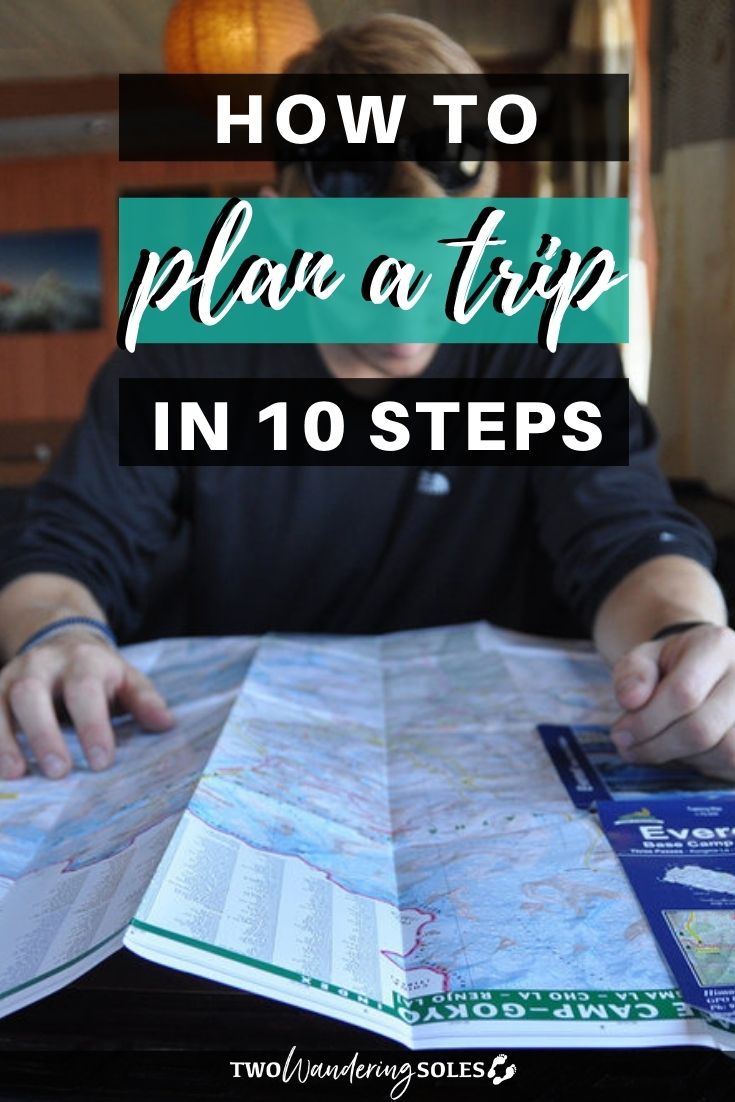
We want to hear from you!
If you still have more questions about how to plan a trip—both international or otherwise—leave your comment below and we’ll do our best to find you the answers you’re looking for!
Comments (15) on “ How to Plan a Trip: Your Step-by-Step Travel Planning Guide ”
What considerations should you make regarding the timing of your trip, as recommended in the article?
It’s great that you talked about how we’d plan a trip and choose the things we want to do. We’re excited about traveling for our next vacation, and we’d like to start booking hotels and tours, so we’ll follow your tips to help us out. Thanks for the insight on finding all kinds of adventures for our vacation trip.
Bautiful blog and very informative ! Thanks for sharing
Hey guys! Honey is here. Two days back I returned from my vacation and enjoyed myself a lot there. I didn’t face any booking issues regarding stay and tickets reservation. This time I have got 10,000 off on my bookings through the usage of BOB cards and I gained that offer info from Saveplus. You guys must fly! Go on.
Thanks for reminding me to check out my finances first before planning a trip. I have allotted a part of my monthly budget last year so I could travel overseas but it might not be too safe because of the pandemic. I think it would be better to visit something local and just book a Kentucky bourbon tour.
This is a wonderfully structured article! Loved reading it!
Thank you very much for your very pragmatic info. May I have some names of reliable bloggers for my research please? Nic
Your blog is very informative. You have written every thing in deep.
Thank you for great information !
I like that you shared your thoughts with us. I am living in my camper van and I like to read more thoughtful articles like this one. Thanks for the amazing and beautiful post….
Thanks so much for the kind words!
What a wonderful post on how to plan a trip! You have some good points and tips! I also wrote a post on how I planned for my East Coast Trip, check it out on my blog http://innapishtoy.com/2018/05/19/planning-packing-trip/
Thanks for sharing Inna.
Good one content katie. I am impressed. It is very useful for my winter holidays.
So happy to hear it was helpful!
Leave a Reply Cancel reply
Your email address will not be published. Required fields are marked *
Save my name, email, and website in this browser for the next time I comment.
Plan your next adventure with these expert tips from a Lonely Planet writer

Nov 27, 2019 • 7 min read
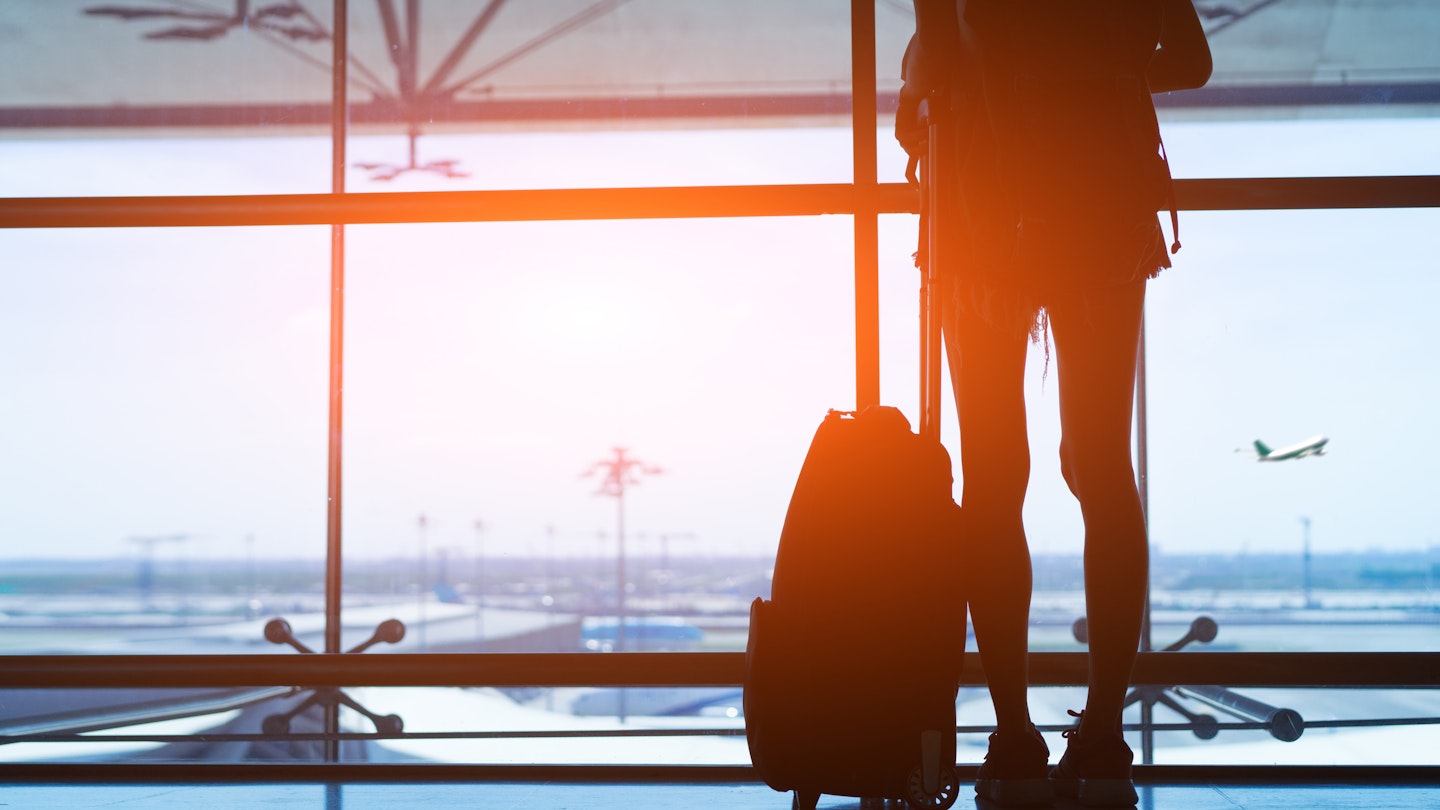
With these expert travel-planning tips, you can maximize your next vacation © Kiattisak Lamchan / EyeEm / Getty
Being a travel writer for Lonely Planet has broadened my skills in interesting ways. I’ve developed the nerve to drive narrow mountain roads and the stomach to sample the world’s moldiest cheeses. When it comes to identifying bug bites, I have the knowledge (and probably the anti-itch spray). Best of all, I’ve got trip planning down to an art.
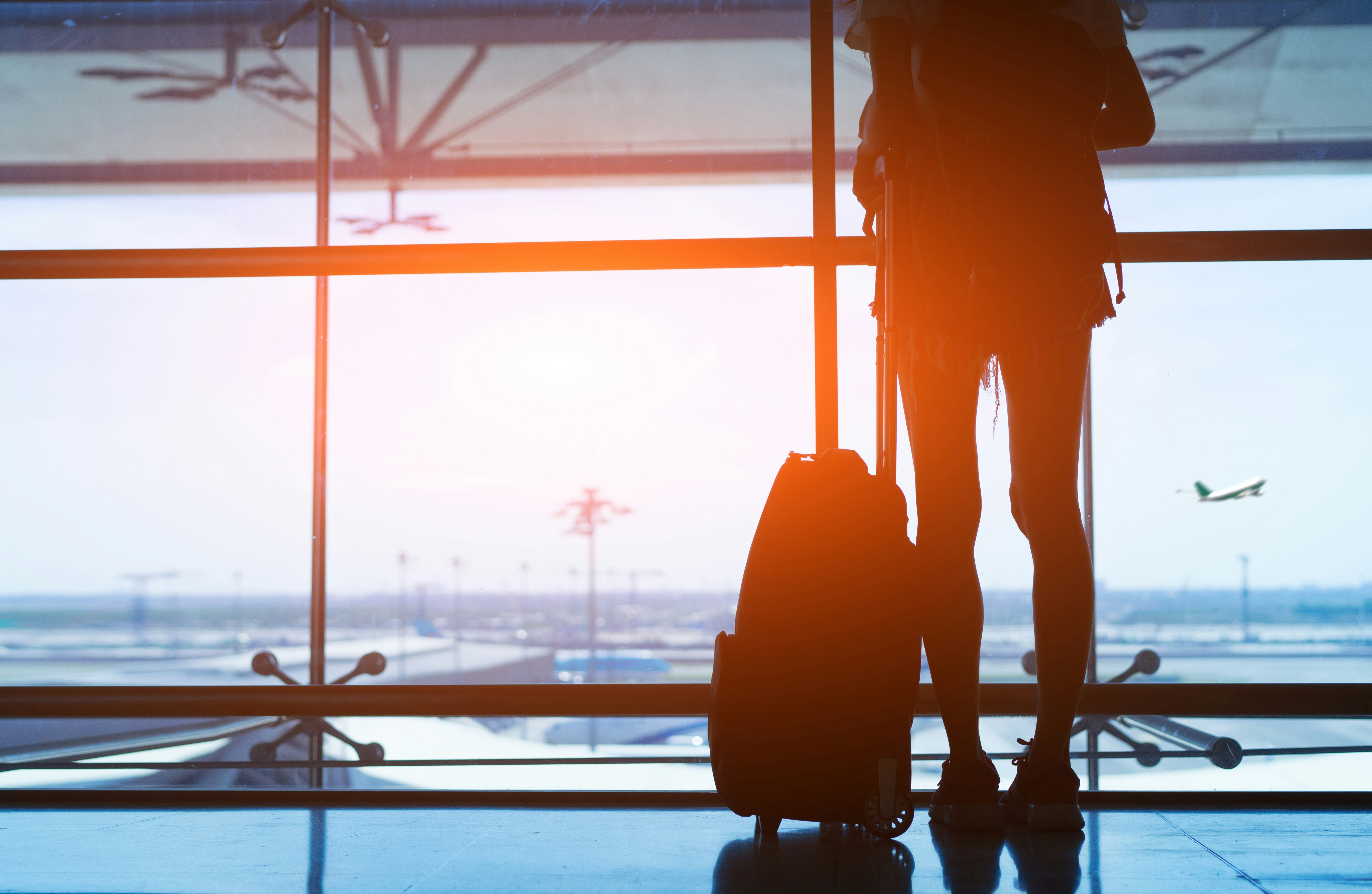
If you want to be a travel writer, you need to appreciate a good spreadsheet as much as a tropical sunset. Professional travel writers squeeze every last minute out of their trips, usually on a slim budget. The privilege of traveling the world and writing about it comes with high pressure and tight deadlines. That means travel writers are tireless at finding bargains, pros at crafting itineraries, and able to travel nimbly while ensuring their experiences are as rich as their readers deserve. I’ve covered more than a dozen countries for Lonely Planet’s guidebooks, and here are a few tips I’ve learned along the way.
1. Play with multiple searches and planning tools
When looking for transport and accommodation, I treat the internet as a giant, messy laboratory. For flights, I use a combination of Google Flights for reference, email alerts and error fare websites like AirFare Watchdog , and Skyscanner to compare fares across a range of dates. With hotels, booking directly often produces the best rate but I always do extra searches via aggregators like Booking.com .
Make sure you’re comparing like with like: are taxes, breakfasts and resort fees included? Above all, experiment with multiple tools and approaches. I once saved hundreds of dollars on car rental by logging out of the very rewards program I had assumed would unlock cheaper prices – loyalty doesn’t always pay!
2. Be open-minded in the early planning stages
A little imagination can transform the price of your trip, as well as open up interesting detours. If you’re flying, search routes into neighboring airports – even those beyond your desired country (for example, Vienna and Bratislava each have international flights and they’re a direct bus ride apart). If a layover significantly reduces the fare, consider whether it can be transformed into a feature of the trip: perhaps an airport spa in Singapore, a walking tour of Amsterdam, a few bleary hours in Reykjavík’s Blue Lagoon?
If you aren’t traveling long-haul, reconsider the need to fly. London to Berlin is a fast plane journey, but does it beat a picnic aboard the Eurostar to Brussels, an evening of chips and Belgian beer, followed by a scenic train ride the next day?
By thinking creatively, fueled by travel inspo from blogs, forums and a Lonely Planet guidebook, you might even decide on a trip more exciting than your original plan. If it weren't for a series of “what ifs,” I would never have ended up on holiday in Moldova – and the country’s wine labyrinths and remote monasteries are still among my most treasured travel memories.
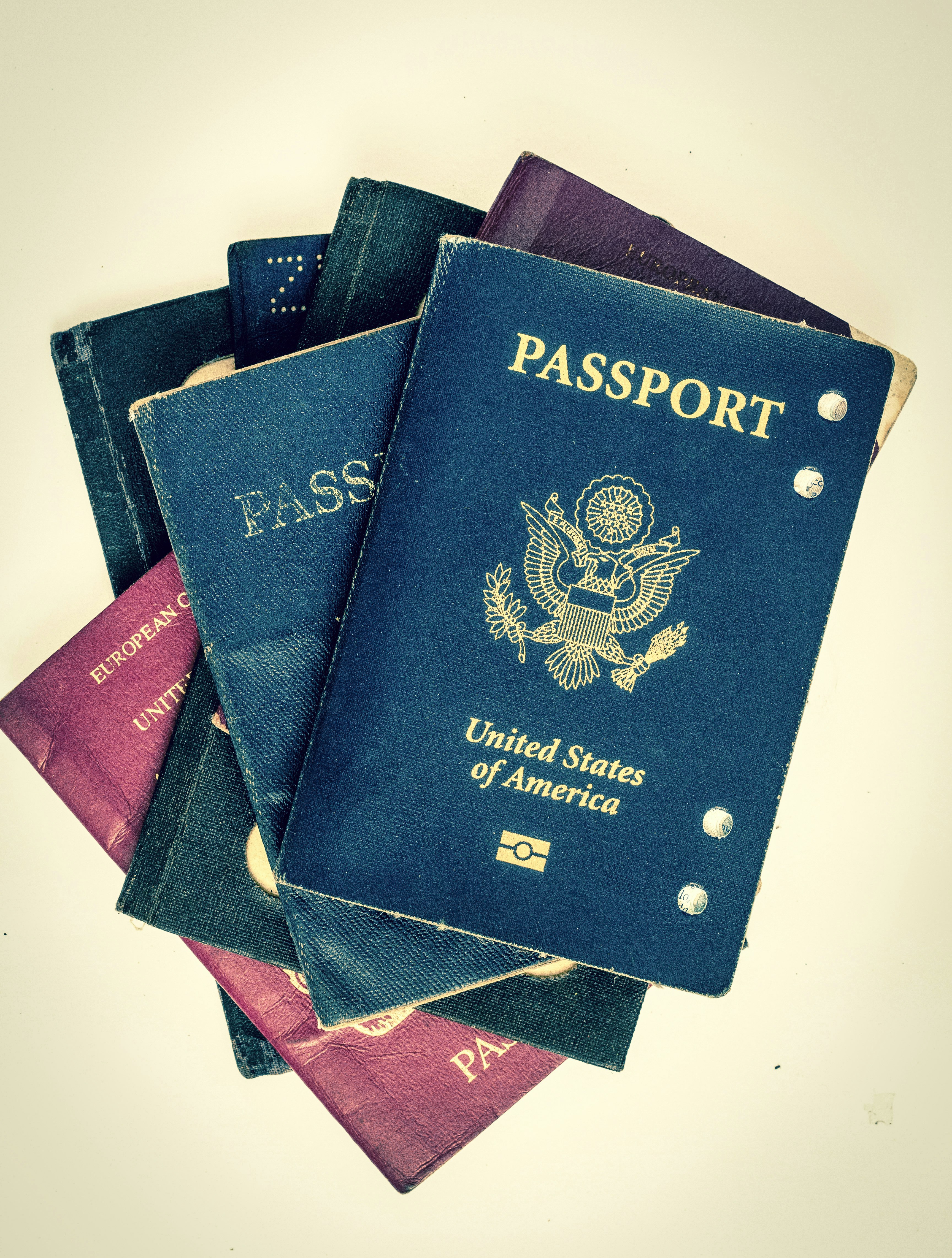
3. Clear paperwork hurdles early
The four horsemen of travel failure are passports, visas, cash flow and insurance. They’re all dull to think about, but they’re also expensive and time-consuming to fix. Double-check if you need a visa and examine your passport early (its expiration may need to be three or six months beyond your trip dates). Log on to your online banking to add travel alerts to reduce the risk of spending day one of your trip begging to restore your debit card’s functionality. Lock down travel insurance and actually read the fine print (OK, skim-read). And while you’re in travel-planning mode, request your vegetarian in-flight meal, reserve train or plane seats, and everything else you can theoretically do until the day before you depart. In my experience, these are exactly the details that get forgotten in the run-up to a trip.
4. Design a killer itinerary (that won’t kill you)
Building an action-packed itinerary is a balancing act. A string of one-night stays in different places is more endurance race than vacation; big-ticket cities and outdoor activity hubs deserve at least a couple of nights each. If your itinerary is looking busy, think about trimming a destination or planning day-trips from one base – you’ll lose less time to packing and hotel check-ins.
Scrutinize the beginning and end of the trip: don’t book the best activities for day one (transport delays, jet lag…) and re-think long drives or rickety train connections on the last day. Use Google Maps to calculate timings for a road trip, but beware of searching routes in summer that you intend to drive in winter. I learned that the hard way, while driving a snow-bogged four-hour detour in the French Alps .
5. Balance forward-planning with spontaneity
Some travelers create detailed plans in advance, others go with the flow. The best travelers do a mixture of both, because neither high-detail planning nor devil-may-care spontaneity works 100% in every destination.
The trick is knowing when to apply each strategy, so browse travel forums, ask well-traveled friends, and learn from disappointed TripAdvisor users. It’s all essential to learning which aspects of your trip would benefit from forward planning (such as netting a reasonably-priced hotel in a ski resort) and where you can be spontaneous (like last-minute accommodation during Europe’s shoulder season, or lining up for cut-price Broadway tickets in NYC).

6. Leave a blank at the end of every itinerary
Travel writers usually have hectic itineraries but we always try to add a spare day or two to the end of a trip. A schedule-free day is invaluable for following local recommendations: exploring a lesser-visited town, hiking, or maybe saying yes to a Valentine’s Day party by Lake Baikal (highlight of my Siberia trip).
Occasionally the bonus day is consumed by transport or health mishaps, but it’s a useful buffer if you need to adjust any plans. On one assignment in Malaysia , I had to dedicate my spare 24 hours to investigating which soft drink is best after a bout of food poisoning – it’s 100PLUS, if you’re wondering – but at least I didn’t lose a research day.
7. Maintain tech-free backups
I’m glued to my mobile phone when I travel. I plot out routes using Google Maps and navigate using OsmAnd . I snap reference pictures with my phone and use voice recording apps for interviews. Though I use Google Fi to get free international roaming, I sometimes buy a SIM card – on assignments it’s handy to have a local number to give out.
Despite staying plugged in, I always prepare for connectivity issues. When my phone suddenly overheated on my last trip to Bulgaria , I was glad to have scribbled down my travel plans on paper. For the same reason, it’s worth printing boarding passes: phones have a habit of freezing right at the moment you’re trying to flash a ticket or load up a hotel confirmation number. And while ATMs in most parts of the world accept major cards, I try to arrive with local currency – it’s saved me when the lone ATM in Arrivals is broken and the bus driver only accepts cash.

8. Pack a little for a lot of situations
On my very first solo trips in my teens, I over-prepared. It was obvious to anyone who saw me waddling along under the weight of my overstuffed rucksack. I had snacks crammed into every spare pocket, a bulging bag of just-in-case medical supplies, enough tampons for an all-female mission to Mars.
Later, when I started going on travel writing assignments, I urgently needed to streamline. Unless traveling to somewhere seriously remote, it’s usually sufficient to pack a little for a lot of situations, limiting yourself to one non-perishable food item (for delays or late-night arrivals) or a single bottle of painkillers (enough to tide you over until you can reach a pharmacy).
Prioritize items with multiple uses: I love big lightweight scarves for keeping warm on planes, covering up in mosques and churches, hanging as a privacy screen in hostel bunks, and padding around fragile souvenirs. Allowing a little breathing room – in your luggage, itinerary and expectations – ensures the happiest of travels.
You might also like How to plan a bachelor or bachelorette party abroad 10 ways to improve your travels in 2020 Here are 20 cheap places to fly in 2020
Explore related stories

Budget Travel
Feb 16, 2022 • 8 min read
Malaysia should really be better known as a budget travel destination. It's easy to travel around, stay and eat cheaply with these top budget tips.

Dec 25, 2021 • 5 min read
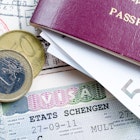
Dec 11, 2019 • 5 min read

Oct 28, 2019 • 19 min read

Apr 16, 2024 • 12 min read

Mar 22, 2024 • 4 min read

Feb 3, 2024 • 7 min read

Jan 29, 2024 • 8 min read

Jan 24, 2024 • 7 min read

Jan 11, 2024 • 5 min read
- Work with Me
- Start a Blog
- Yearly Roundups
- 101 in 1001 Goals
- how to start a travel blog
- tips for new bloggers
- write me a guest post!
- Work With Me
A Passion and A Passport
Proving Travel is Possible with a Full-Time 9-5
How to Plan a Trip Like a Pro: The Only Trip Planning Resource You’ll Ever Need
last Updated: December 8, 2022 travel tips
FYI: Affiliate links may be sprinkled throughout the awesome, free content you see below. I’ll receive a small commission when you purchase from my links (at no extra cost to you), which I’ll totally blow on adult things like boba tea and avocado toast. As always, thanks for the support.
Wondering how to plan a trip without all the headaches? Yeah, travel planning can be quite the doozy.
It’s time-consuming, overwhelming, and downright confusing; there’s flights to book, currencies to convert, time to take off, and activities to plan. And that’s not even considering all the getting around once you actually arrive!
Don’t let the stresses of travel planning get in the way of heading to your dream destination. I get it, though, I really do, there’s a lot to do. Planning a trip can seem like a daunting task. But I’m here to help with my travel planning tips!
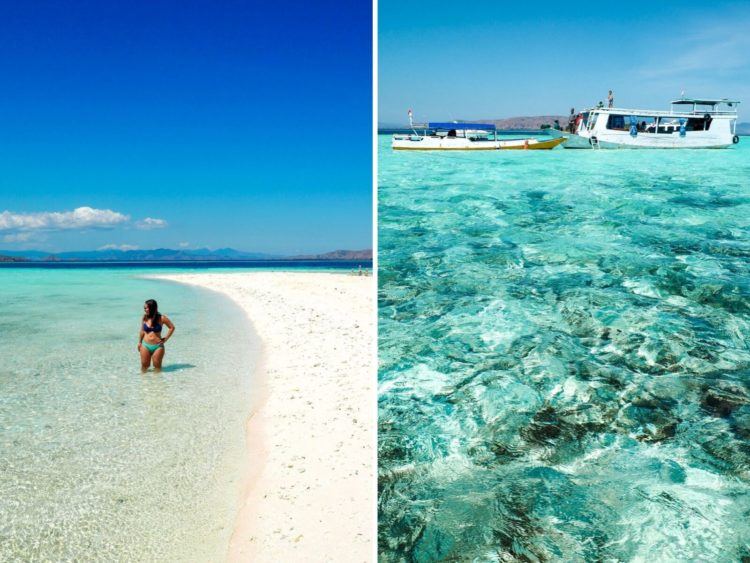
Luckily, I’ve planned dozens (and dozens) of trips, from quick weekend jaunts to Napa Valley and Lassen Volcanic National Park , to faraway exotic destinations like Bali and Morocco (with ridiculously detailed itineraries).
After lots of trial and error (and making tons of mistakes on my part) I’ve figured out a way to ease the travel planning process. I’ve narrowed it down to an easy 18 steps on how to plan a trip, so you, too, can take the trip of your dreams. Whether it’s a 5-day beach break or a culturally diverse 2-week trip to Thailand , follow my advice below and you’ll be off before you know it.
I’m kinda known for my crazy-detailed itineraries, and get lots of people asking me for help on others. I haven’t been everywhere, so wanted to provide this trip planning resource so you can plan epic trips of your own!
This is my exact trip planning method – it’s kinda ingrained in me now, but after getting it all down on paper, I realized I actually prefer doing things in a set step-by-step basis! Perfect for you because you can copy how I plan my trips!

So if you’re looking for a STEP-BY-STEP guide (made for busy professionals like you), continue reading, because this trip itinerary planner is juuuust the thing you’re looking for. Don’t blame me if you plan too many vacations. :p
→ Read Next: How to Travel More (with a full time 9-5 job)
How to Plan a Trip: Actionable steps to planning a trip of your dreams
Step 1: inspiration + fun/general research.
Before we get started on the specifics of how to plan a trip, start with some travel inspo! And sometimes, just getting inspired is half the fun of actually booking the trip (at least it is for me).
I like to use Pinterest , Instagram , good old fashioned travel mags (at the dentist/doctor or when strolling through my favorite store Target), and of course, travel blogs. I constantly find myself swooning over photos I see, and sometimes even book a trip based off of one photo alone, like that time I begged my sister to head off to Chefchaoen with me (I’m a highly visual person if you haven’t noticed).

Since my mind goes into overload during the inspiration phase, I make sure to organize what I find right away as efficiently as humanly possible.
Enter, Google Maps. As soon as I find a spot I wanna visit (whether it be as specific as a restaurant in a little town or a country as a whole), I type it into Google Maps and hit Save → Want to Go. This way, all my finds are kept neatly in one place, and already plotted on a map to see general locations. You should see my Google Maps – it’s covered in those little green pin markers.
A few posts for some inspiration right over here:
- My Life-Long Bucket List
- Most Beautiful Places in California
- 25 Perfect Week-Long USA Itineraries
- Where I went in 2013 , 2014 , 2015 , 2016 , 2017 , and 2018
- 35+ Winter Weekend Getaways in the USA (snowy and warm)
- My Travel Bucket List: USA Edition
- 14 Adventurous Places to Travel
- The Best Beaches Around the World
- The Ultimate South East Asia Bucket List

Specific Bucket-list worthy experiences:
- Meeting the Dragons in Komodo
- Bobsledding in Park City, Utah
- Sailing the Greek Islands
- Staying in an Overwater Bungalow
- Beach bumming Hawaii
Once you’ve narrowed down your list to a few places you wanna go, figure out how much time you’ll need and the best time of year to visit. Make this quick – no need to do intense research just yet. We’re still in the beginning phases of how to plan your trip. They’ll be time later for lots and lots of googling, reading, and finalizing.
Jot it down on paper in 3 columns: Places I Want to See, Time Needed, and Best Time of Year to Visit (based off of weather). I quickly google “best time to go to ____”. Example here:
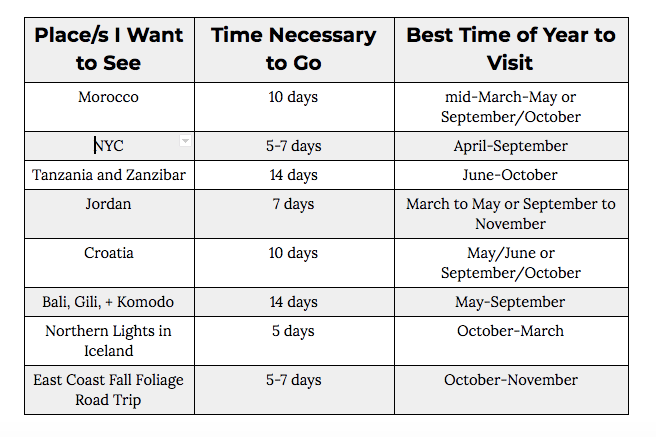
Step 2: Decide on your Destination and Trip Length
How much time are you allocating to this trip? Are you able to use a bunch of PTO and make it an epic adventure? When can you travel? Before you even begin to plan your trip, you’ve gotta know where you’re going and for how long!
Be as specific as possible. Instead of saying “I want to go to Europe”, specify the exact country, and then cities within. “I’m headed to Barcelona and Valencia!” sounds much more real, and you’ve got a much more specific goal to work towards.
Think about the type of trip you want – are you a “see-as-much-as-possible” and “cross-it-off-the-list” type of traveler, or do you want to take a few days to really get to know a place inside and out? I’m more of the first type (hey, yolo, right?), but I’m starting to appreciate spending ample time in destinations I really love.
What kind of weather do you want? Are you looking for a frozen, ice-filled fantasy or longing for a few days basking in the sun ? How do cultural and foodie experiences sound? Are you looking to stay close-ish to home or are you prepared to travel far? All questions you gotta ask yourself when choosing a destination.
TIPS FOR SHORTER TRIPS (up to 7 days)

If you know you’ll only have a few days, don’t pick a place that’ll take you 2 days to get to. We want to maximize the amount of time you’ll actually have in your destination.
And Psst – don’t think there’s much around you? Think again. There’s likely loads within a few hours.
- For example, from NYC, you can get to London in just under 7 hours, the Caribbean/Central America in 3/4 hours (depending on where), Iceland in just 5 ½, and the other side of the country in 6.
- From San Francisco, you can get to Japan in 10 hours, Mexico City in 4 ½, and Hawaii in 5. Cliche, I know, but the world really is your oyster.
Only have a few days? Check out these sample itineraries I’ve created to see exactly how much I’m able to fit in in just a few days!
Coming from the States:
- Long Weekend Trips from San Francisco
- Long Weekend Trips from New York City
- 5 Days in Maui / 3 Days in Kauai
- 3 Days in Mexico City
- 3 Days in Las Vegas
- 3 Days in Washington DC
- 3 Days in Portland, Oregon
Coming from Europe:
- 3 Days in Vienna
- 3 Days in Barcelona
- 2 Days in Venice
- 3 Days in Santorini
- 2 Days in Athens
Coming from Asia:
- 3 Days in Ubud
- 3 Days in Tokyo
- 3 Days in Taipei
- 2 Days in Bangkok
- 3 Days in Singapore
- 3 Days in Hong Kong
TIPS FOR LONGER TRIPS (1 week+)
Longer trips are undeniably much harder to plan, since there’s a bunch of logistics involved in getting from place to place. You probably won’t be staying in the same exact spot for all 7+ days. But as long as you start your research early and follow my itinerary planning advice below, you’ll be a step above everyone else blindly crafting their schedules. P
ractice really does make perfect, so the first long, multi-destination trip you plan will be the hardest. Expect a few hiccups, but just go along with it; that’s just part of traveling!

If you’ve got a longer amount of time, check out these bucket-list worthy destinations for inspiration (and plus, I already planned out the bulk of these itineraries = less leg work/heavy research for you):
- 2 Weeks in Thailand
- 10 Days in Japan
- California Coast Road Trip
- 10 Days in Norway
- 2 Weeks in Croatia (+Bosnia)
- 10 days in Panama
- 2 Weeks in Spain and Portugal
- 10 days in Bali + Komodo National Park
- A Week in Iceland
- 10 days in Greece
And right after I decide on a destination, I always research to see if a visa is involved. Some you can get upon arrival at the airport, while others you need to apply and wait for.
Don’t book a ticket without knowing the visa situation, as airlines don’t check for proper documentation before you book your flight (and it’s possible you’ll get turned away at the airport and need to go back home just as soon as you arrive into the country which requires a visa – not fun!).
Step 3: Choose your Approximate Travel Dates
If you’ve done your due diligence and filled out your own travel planning worksheet above, you already know the best time to visit your dream destination. However, when considering the best time to travel, there’s quite a few factors to think about.
No one wants to get to their destination after planning for months only to realize they forgot to look into the weather patterns. Will it be rainy season? Hurricane season? Ridiculously over-the-top blazing hot (sweating profusely is no fun for anyone). I’ve had friends visit Bora Bora (a wildly-expensive once-in-a-lifetime trip) in the rainy season and I crossed my fingers for sun for them.
I always like to visit a destination in either the high season or shoulder season, for the best chance of perfect or near-perfect weather. I’m someone who despises rain with a passion (some may like it, but just think about if your activities will be dampered because of some precipitation). This is extra important to me, and I’d rather pay a bit more money for higher possibilities of sun and no rain/clouds.
Of course, you cannot predict the weather months from now, but I always look at the expected weather trends in my intended travel month and stay away from the rainy/hurricane season.

For the best combo of pleasant weather and minimal crowds, it’s wise to travel in the shoulder season (weeks/months outside of high season). This will of course change from destination to destination, but in general, late April-early June and September-October is shoulder season in many parts of both Europe and the USA.
Think about when kids are back in school – if you visit when school is in attendance, you’ll have less families traveling and therefore fewer overall people.

Note that high season typically sees higher costs (but hey, it’s high season for a reason!). If you can visit when kids are back in school, you’ll have higher chances of finding a good deal. Visiting during a holiday? If you can plan your travels bypassing Christmas and New Years, you’ll automatically save a whole bunch, as this is the most expensive time to travel to most places.

Attending a Specific Event
Is there a specific festival/event/animal migration you want to attend/witness? For example, Oktoberfest in Germany, whale watching in Monterey, safari in Africa, and Burning Man in Nevada. Full Moon Party in Thailand and the Day of the Dead in Mexico are two other examples.
You’ll need to obviously plan your trip around these dates/months. Do note that it’ll most likely be one of the most costliest times to visit, so plan to book flights and accommodations way in advance.

No need to plan exact dates just yet, just know the general timeframe of when you want to go. For example, this could be 1) early June 2021, 2) between Thanksgiving and Christmas, 3) birthday month, etc.
Step 4: Decide on your Travel Partners
Are you planning on traveling solo or with friends/family/significant other?
Traveling with Friends/Family/Children?
Traveling with other people can be a bit more difficult to plan (you’ve got other people’s interests and budgets to cater to), but the memories will be even sweeter when you can reminisce about your fantastic trip together in a few months.
Planning a trip with family? You’ll likely be deciding on your destination together. Remember – it’s all a compromise. If I want a few days of running around a major city, we always make sure to head to smaller towns/spend a day or two relaxing on the beach for my husband later on in the trip. Everyone should be part of the decision-making process.
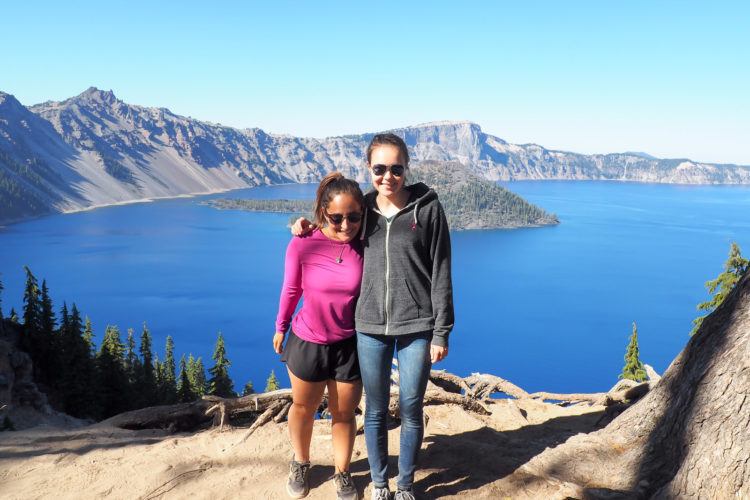
When I’m traveling with friends, I like to have my desired destination in mind as well as approximate dates. Don’t go to your friend and say “wanna travel next year?”. It’s way too open-ended, especially if you have a general idea of where you wanna go. I just started planning a trip for Spring Break, so asked my friend if she wants to accompany me on a trip to Jordan in late March. See, much more specific.
Always know the type of accommodation you both prefer, if this will be a budget/mid-range/luxury trip, and how the other person feels about spending some time solo (if one person wants to do something but the other really doesn’t want to). Your bestest of friends may make the worst travel buddies – be upfront about as much as possible and you’ll have the greatest chance of a smooth trip.
Traveling Solo?
Never traveled solo before? Don’t fret – I just started traveling solo a few years ago and fell in love with the whole concept ! It’s all so freeing! You can pick and choose all your activities, have cupcakes for breakfast (guilty!), and take as many photos as you want (64597 or 0)! Things do end up being a bit more expensive because you’ve got no one to split the bill with, so I typically stay in hostels and eat tons of street food to help with costs.

When traveling solo for the first time, I recommend heading to a country that speaks your language, has an easy currency conversion, and is known for being safe and with a good tourist infrastructure. I loved traveling solo in Iceland , London, and Croatia solo, and would highly recommend these countries for first-time solo travelers!
→ All my female solo travel tips over here (useful for you men as well, but it’s catered towards women, just FYI). 🙂
Step 5: Research Trip Costs
Before you can you do research on trip costs, you’ve gotta know where you’re going (obviously, because places all cost a different amount of money), how long you plan to travel for (more days = more money, usually), and when you aim to go (high season vs. low season can be wildly different in terms of financials).
See, this is why you need to figure out how long you’re planning to travel for before you do your research on trip costs. Every night at a hotel, plus food and activities per day, will add up quickly.
But it’s true – a vacation is only as expensive as you make it. Don’t expect baller champagne on a beer budget. That being said, you still can have a hell-of-a-time without spending a fortune.
Everyone told us that Japan would be over-the-top expensive, and we found it pretty in line with other trips we’ve taken. Must have been those inexpensive AirBnBs we found and eating cheap street food everyday.
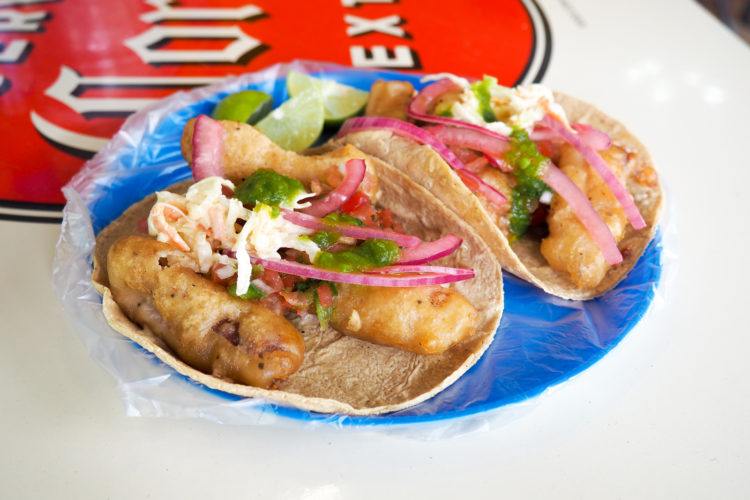
If you’re traveling solo you won’t have many opportunities to cut these costs down (hostels are great for solo travelers), but if you’ve got a travel partner and are planning on sharing accommodation, you can automatically save 50% on hotels, car rentals, some activities, etc.
Make a rough outline of how much you think the trip will cost, approximations of course. Be sure to note flight, hotel, meals, activities, transportation, and any possible extras. The more research you do, the fewer surprises you’ll have later on.
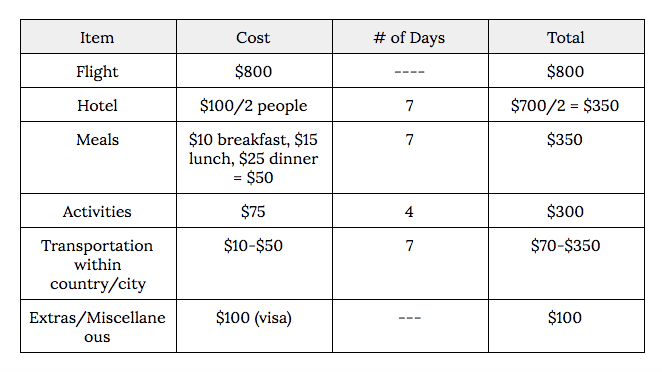
In addition, when thinking about your budget, think about areas in which you could save some money, and what hotels/activities/experiences you feel comfortable splurging on. Would you rather stay at that posh 5 star resort for 2 nights or take a helicopter ride in Maui ? Do you prefer a fancy spa treatment or a night out at the opera? It’s wise to pick and choose a few things you know you can’t live without, and try and cut corners in other areas.
For example, we sometimes stay at airport hotels if we’re arriving late into our destination, which saves us money as they are typically less expensive than hotels in downtown. The next morning we check into the more expensive hotel, but have already saved a bunch of money by spending a night at the less expensive hotel, without impacting our travel plans at all!

Make sure to think about transportation costs too, as these can vary greatly depending on where you’re going. I’m not talking about transportation to your first destination, but how you’ll actually get around once you’re there. You can get anywhere in NYC for $2.75 (which I miss greatly), but if you wanna take day trips outta the city it’s a whole other ball game.
Think about if you’ll be traveling to different cities/places during your trip – be sure to account for a car rental, trains, buses, public transit, Uber, taxis, domestic flights, etc.
*** Always overestimate the cost of travel. There are lots of unexpected and unforeseen costs involved (unfortunately). It’s always best to over over prepared, especially when it comes to finances!!! And if you don’t use all the money you save, you can always allocate the funds to your next trip. Boom!
And once you’ve figured all this out, you can set a rough budget for yourself. I say rough, because things are gonna change. Travel can be wildly unpredictable (especially if you haven’t done enough research).
Step 6: SAVE, SAVE, SAVE!
Time to get saving, my soon-to-be world-traveling friends. Because, well, hate to break it to ya, but you need a large chunk of change to pay for all your fun. You don’t need to save up enough cash for your entire trip all at once, but make sure you have a plan as to how you’ll do so before your trip arrives.
As you’re booking flights, hotels, activities, and as other trip-related expenses come up, you’ll want to have a sufficient amount of money to cover these things straight away.
NEVER go into credit card debt to travel. Just please don’t. Wait an extra few months/year to travel if you need to. The world ain’t going anywhere, but the credit card companies will charge you a hell of a beast of interest, that’s for sure.

To make your finances black and white, write down all the things you spend money on each month (rent/mortgage, car payment/insurance, groceries, gym memberships, etc). Then look at your credit card and write down all the miscellaneous stuff. You may be surprised to see that you’ve spent ~300/month on coffees or ~$80/month on that pilates membership you haven’t used since February.
See if you can split the cost of Amazon Prime/Spotify/Netflix with a friend/family member, as even saving an extra $40 per month can get you a few nights in some places.
Think about ways you can slightly alter your everyday life to save for your trip. Every time you forgo that expensive morning latte or night out at the club/bar, you’re a few dollars closer to your dream trip.
Your friends don’t understand? Get new friends. Haha – but really, explain to them that a night out can cost as much as entry to the Vatican or a few days bumming around in Belize.
Get rid of those weekly/monthly subscription boxes, make your morning coffee at home, and save dinners out for special occasions. There are a billion ways to save money, you just gotta be creative sometimes.
And if you’re lucky, you’ll already have some extra cash lying around to plan your trip- but just remember, never take money out of your emergency fund to go off traveling. Set up a different bank account, with the sole purpose being money saved for travel.
Step 7: Apply for a no-fee ATM card
And since we’re talking cash, now’s the time to apply for a no-fee ATM card.
If you want to avoid those pesky ATM fees every time you take out cash while away, simply look into a no-fee debit/ATM card, such as one through Charles Schwab (which I have and love). You can use the card at any ATM in the world, and Schwab will reimburse you all the ATM fees at the end of the month. Pretty neat, right?
It’s by far the best debit card for traveling Americans. We transfer some money into our Schwab account before a trip, and use that as our spending money (do note that it takes a few days for money to transfer between banks, so do this a few days before jetting off).
More info on Charles Schwab here.

ATM fees quickly add up, with many banks charging around $5 or so per transaction. When traveling, I don’t like to keep a whole lotta cash on me at hand, so rely on local ATMs to take out small amounts when need be. Why shell out money when you don’t have to, right?
Step 8: Apply for a travel rewards credit card
Not all credit cards are created equal. I repeat. Not all credit cards are created equal. If you plan on traveling quite a bit (or even just once), it’s wise to look into a travel rewards credit card for the bonus miles and perks that come along with it.
There are many to choose from, including more general travel cards as well as airline/hotel/brand specific.
We currently use and love the Chase Sapphire Reserve®, which not only gives us $300 a year statement credit for travel, but grants us access into Priority Pass airport lounges worldwide, provides free auto insurance when renting cars, lost luggage reimbursement, and even a concierge service, (and oh so much more).
Don’t let the $450 annual fee scare you; it’s actually only $150 once you spend $300 on travel. Chase typically has great promotions, so be on the lookout for ones providing ~50k+ bonus miles (good for a roundtrip flight to almost anywhere in the world). There’s also the Chase Sapphire, which still comes with heaps of benefits, but you don’t get lounge access and other perks.

In addition, we also use an airline specific credit card, the Delta American Express, since my husband’s airline of choice is Delta. Whenever we book Delta flights using this card, we get extra bonus miles, which we can put to use for future free flights. I wouldn’t recommend only traveling with AMEX though, as many places around the world only take VISA/Mastercard. Hence our need for both.
Other recommended cards include Capital One® Venture® Rewards Credit Card, The Platinum Card® from American Express, and the Chase Ink Business Preferred Card.
When looking for a travel credit card to apply for, check to make sure it has no international ATM withdrawal fees, no currency conversion fees, and reward points for travel (airlines/hotels/cars/etc).
And just FYI, Travelers Checks are kiiiinda a thing of the past, so be sure to have a credit card ok for international use.
Step 9: Book Flights
Booking flights is one of the most nerve-wracking parts of the travel planning process for me. And why? Because not only do flight prices fluctuate daily, but once you book, you only have 24 hours to cancel (as long as you’re booking from the USA). I find it incredibly intimidating, especially because I’m always trying to get the best possible price. And all those options! So confusing!
I rely on Skyscanner and Google Flights when looking for the cheapest possible flights, and sometimes also look on Kiwi . I tend to sway towards Skyscanner the most because it allows you to search an entire month (or time of year) to find the absolute cheapest flight available.

If I ever purchase a flight through a third-party, I make sure to call the airline and confirm my reservation number.
However, 99.99% of the time I book directly through the airlines themselves. Once you find a good deal on Skyscanner or Google Flights, go directly to the airline website to book the flight. And don’t forget to input any airline numbers you are a partner of to rack up those skymiles for later use!
→ Psst – check out Skyscanner and set up price alerts to snag the best deal.
However, always be sure to check low-cost airlines, as they are not always included in third-party sites. A good list can be found here . Southwest and Frontier Air are good options in the USA. More tips on getting the best price on airfare here .
Don’t be that person who paid the most on a flight → be flexible, use miles if you can, and sign up for email notifications (I like to use Skyscanner and Google Flights for this). If you’re a bit more flexible with your destination, make sure to sign up for Scott’s Cheap Flights and The Flight Deal, as you’ll receive insane flight deals. The more flexibility you have, the better your chances of scoring a great price. Be willing to fly midweek and off-hours, at the least, if you can.
Search for low airfares and hit BUY when you feel comfortable (don’t wait as flight prices can drastically change within hours)! Here are some additional tips on finding cheap airfare ! I’m a serial advanced planner when it comes to expensive, long-haul flights, but some of my friends score good deals by waiting until a month or two before. It all depends on your comfort level.
Before booking, you’ll want to have a general idea of your travel route, as this may impact your flights. Will you be flying into one city and out of another? Are you booking a round trip ticket?
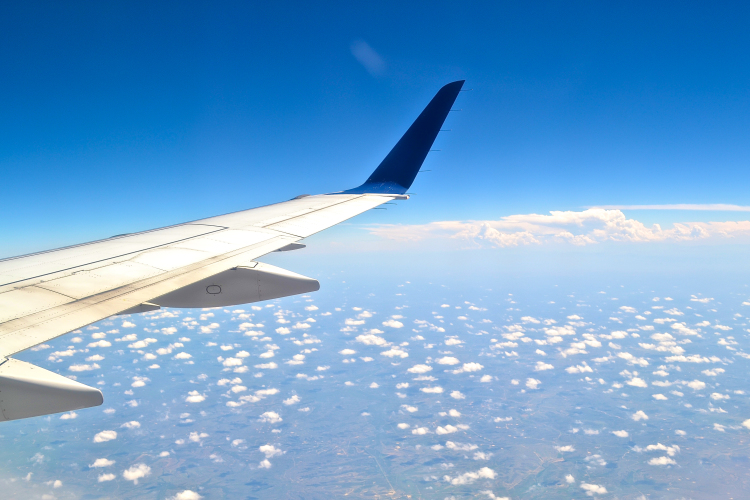
An important note on Passports : Traveling internationally? Can’t leave the country without a valid passport, am I right?! Many countries require at least 6 remaining months on passports before you leave or in order to even enter the country.
If you need to order a new passport, you can check out this passport guide for help, and if you’re traveling within 6-8 weeks (amount of time it usually takes to process passports), you’ll need to get an expedited passport which you’ll receive in approximately 3 weeks for an extra $60. Well worth the money if you find yourself in a pinch and desperately need that passport ASAP.
Step 10: Book Hotels/Accommodations
I like to book hotels relatively early on in my planning process. Why? If you’re traveling during high season (which happens to be me more often than not), there’s a chance your desired hotels could be all booked up! We tend to book hotels that we can cancel, just in case our travel itinerary changes or we find accommodation that suits us better. Most of the time refundable rooms cost a bit more, so just something to keep in mind.
When searching for rooms, I typically do a quick check on HotelsCombined , since they find the best price by checking dozens of booking sites.
→ Search for the best hotel prices on HotelsCombined
When booking accommodation, think about how far the hotel/apartment is from the city center and the activities you want to do. Sometimes, booking a hotel that’s way cheaper will end up costing more than a slightly-more-expensive hotel if you need to shell out extra dough to get yourself places.
Think about how much time you’ll be spending in the hotel. If you’re planning to be out and about all day, why book a fancy room when all you’ll be doing is sleeping and showering there?
We book over-the-top resorts/hotels when we know for a fact that we’ll be able to enjoy all the amenities. Like that time in Bali we stayed at a resort with our own private pool, lush jungle views, and multiple infinity pools. But we were planning on spending an entire day taking advantage of the hotel so it made sense. In Tokyo when we’re out stuffing our faces all day? Not so much.

A few additional places we look for accommodation:
Hotel Tonight : My go-to for last minute deals. Think road-tripping and spontaneous weekend trips. We once paid $23 for a (really nice) hotel in Reno, Nevada. You can now check and book up to seven days in advance. Top tip: download the app in advance in case you’re stuck without wifi for a bit. Use my promo code JKLEINER for a free $25 towards your first booking.
AirBnB : In some cases, we find ourselves wanting a more local experience, so we look to AirBnB for an apartment or condo. With AirBnB, you can rent out private rooms, entire apartments, and even full houses! We’ve had some fantastic experiences and wonderful hosts, and saved a ton of money! Save an additional $40 off your first stay here !
My number 1 tip: heavily research where you are staying – read all the reviews and make sure the property owner is readily available to contact. Always check the cancellation policy.
→ New to AirBnB? We’re giving you a coupon of $40 off your first stay of $75 or more !
Expedia : So great for package deals, as you can literally saves 100’s by purchasing flight and hotel together. Plus, with their rewards program, you can store your points for even greater savings down the line.
Step 11: Get Vaccinated/Medications if Needed
It’s always wise to schedule a travel appointment with your doctor so you can decide what’s best when it comes to vaccinations and precautionary medications with trained medical staff. In addition, I always check the CDC website for recommendations on the such.
Some are more standard vaccines you can get with your primary care doctor, but others (like Yellow Fever for our upcoming trip to Africa), you’ll need to arrange for in advance.
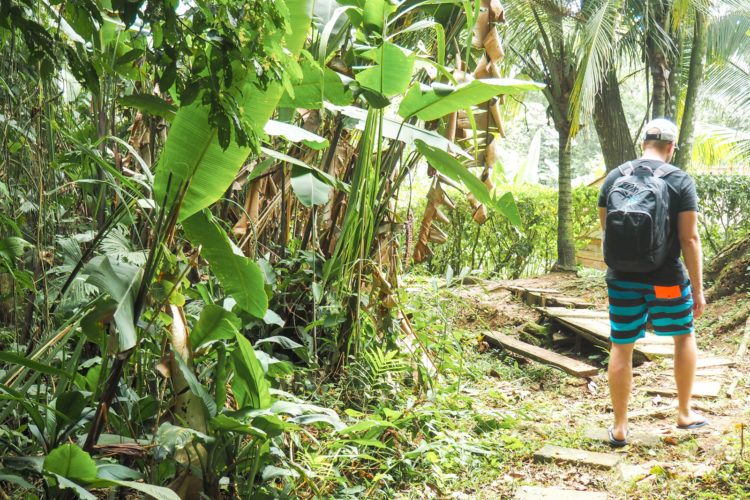
It’s wise to know which vaccines you’ll need early-ish on in the travel planning process, as some need to be specifically ordered and other vaccinations you’ll need multiple, specifically timed spaced-out appointments. Some vaccines are only recommended if you’re visiting particular parts of a country, so don’t feel like you need to get them all if you aren’t even visiting the infected areas.
In addition, research if you need to show proof of vaccines upon arrival into a particular country (they may not let you in without the proper documentation). Ack!
It’s also a wise time to talk to your doctor about any medications (like Malaria pills we took in Thailand and Bali) you may want to bring along.
Step 12: Decide on WiFi/cell service
Some like to be away from it all and go wifi-free, while others will feel more safe and secure knowing they can use their phones. It all comes down to personal preference. I rely on my phone way too much to go completely data-free, so always make sure I have a set plan in place before leaving on any international trip.
Personal Wifi Hotspot
Although you will most likely have wifi at your accommodation, it’s a good idea to bring along a pocket-sized personal WiFi hotspot , to keep you connected during your time abroad. WiFi hotspots are a cost effective option to ensure you can use GPS apps like Google Maps, check your emails, and catch up with friends and family while away.
With this portable device , you’ll have WiFi wherever you go (even if your phone doesn’t have service), unlimited internet (on up to five devices at a time!!!), and it’s fast and reliable. At less than $9 a day, this device can’t really be beat.
Note that some cell phone plans allow for international use, but many of these are costly. I accidentally turned on my phone service for LESS THAN 2 MINUTES once and got charged $150 by my phone carrier! I desperately wished I had a personal WiFi hotspot with me then!
Find more information and plan options here . HIGHLY RECOMMENDED especially when you don’t speak the native language of the country you’re visiting. A true life saver.
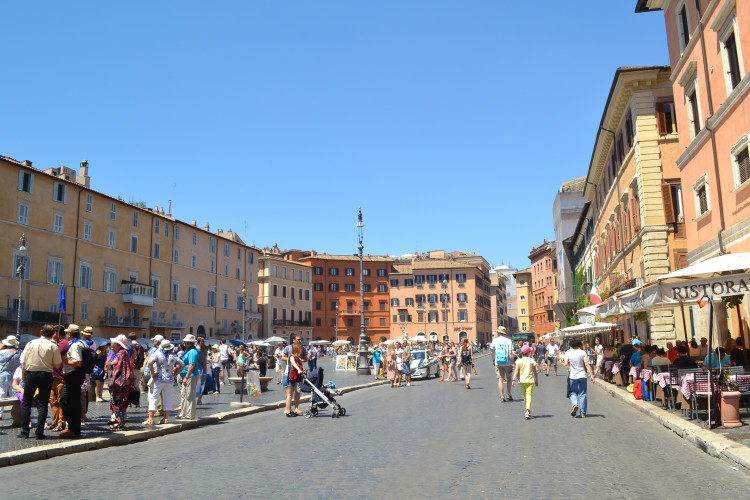
Other Options
Other options include bringing along an unlocked phone so you can use local SIM cards, and looking for plans which include international data.
If you’re thinking about doing a bunch of international travel over the next few years, it may be worth switching to T-Mobile if the service is decent in your home area. My husband and I currently use T-Mobile, and get access to free data in over 210 countries (excluding the one country I was charged an obscene amount of money in – but that was my fault).
Some teched-out cities even have free wifi throughout the city – need to check beforehand (don’t count on this as it’s a relatively new thing, and I wouldn’t rely on the free wifi in case an emergency occurs).
Psst: I always bring a portable battery charger to recharge throughout the day since I rely on my phone heavily for directions!
Step 13: Research + Map Out Activities/Restaurants
Ohhhh, this is where it gets really fun in my eyes. Activities are the bulk of your trip, and probably the main reason you’re visiting the area (besides the food, of course).
Here’s how I like to do it:
1. First, I do some research on things to do in the area (this includes food tours, beaches, museums, popular attractions, hikes, etc), day trips which peak my interest, and anything else I find exciting on Get Your Guide , Viator , and AirBnB Experiences (use this promo code for $15 off your first AirBnB experience).
I’m a BIG FAN of Get Your Guide and Viator when it comes to perusing activities and signing up for tours (they have SO many options). I’ve been using both of these sites for years, and can honestly say 99% of the time the tours are downright AWESOME and a good bang for your buck. I like to plan in advance (sometimes too far in advance), and being able to book specific activities (with the ability to cancel if need be) is something I love about Get Your Guide and Viator.

I recently started using AirBnB Experiences , as they offer some more local-type experiences, such as cooking classes in chef’s homes (I learned how to make macarons in Paris this way!), photography sessions, and more niche city walks.
I also like to use travel blogs from those writers I trust (not all travel bloggers have the same credibility unfortunately, so if something sounds odd/wacky, I do further research/cross reference facts). In order to do this, I usually google destination + “blog”, and pick them out one by one in the search results. You tend to get additional tips and insights you normally wouldn’t have on other large-party sites.

Depending on the destination, I’ll peruse Lonely Planet for even more must-do’s. I used to rely on TripAdvisor, but after I learned that many reviews are fake/bought, I stopped using them entirely.
2. Plot each “attraction/museum/beach/restaurant” on a map → I’ve been using Google Maps lately and love it! If you prefer to use paper maps, get a large one so you can easily see all the spots! But why waste paper and money?
3. Look at the map, and take note as to where these activities fall. I then separate the activities into different areas. This helps figure out which attractions you should see together on a particular day. You don’t wanna be running back and forth across the city/town/destination out of stupidity silliness. Group attractions together that are in the same proximity/close distance.
4. Think about how much time each activity will take. Some attractions will only take a few minutes, while others you may want to devote entire hours. Don’t aim to see a whole bunch of super-intensive things in the same day; try and space them out if you can.

5. Star your top “things to do” in each location. These are the things you’ll aim to see on your trip, while the others will be extra bonuses. Because, lets face it, if you only have 3 days in Paris, you probably won’t have time to see all 235232 museums.
At the end of this process, you should have a handful of main activities you wanna check out, as well as a bunch more less time-intensive ones, listed out by location/proximity to each other.
Depending on the type of traveler you are, you may want to book a few guided tours of the city/area you’re visiting. When I travel (especially on my solo jaunts), I tend to book a few guided tours and day trips. I always meet a few chatty people and end up hanging with them the entire day!
It’s also nice to have someone guide me around for a bit (solo travel gets exhausting). Guided day trips are great if you don’t wanna worry about getting lost on public transport and/or don’t wanna rent a car.
Inspiration for Things to Do/Tours/Day Trips
- Get Your Guide
- Viator
- Airbnb experiences
- Travel Blogs (like mine !)
If there’s a particular + popular restaurant/dining experience your longing after, it’s wise to make a reservation in advance. When we went to Mexico City , we had to book our table a few months ahead of time, and there still wasn’t much availability!
Step 14: Plan Your Day-to-Day Itinerary
Don’t overplan , but definitely keep track of the tours you booked and other sites on your wishlist. I tend to make exceptionally long Google Docs (for easy access without wifi), and roughly plan out my days. This makes sure I don’t forget what’s going on each day; especially helpful if your trip consists of a few different towns/cities/etc.
I always put the date, day of week, and location in the left column, then details about my day in the right.

Some tours are only offered on certain days, so you may need to play around with your day-to-day itinerary until it works out.
The example below (a random few days during my two weeks in Croatia ) is not as crazily detailed as my normal ones, but you get the picture:

Once the itinerary is all set, I then go ahead and book all tours and skip-the-line tickets for popular attractions (imagine not booking a ticket in advance for Frida Khalo’s House in Mexico City, the Louvre in Paris, or the Sagrada Familia in Barcelona). Don’t waste your time waiting in line. Spend 3 minutes booking your tickets now and you’ll be thanking yourself later on during your trip.
Step 15: Book a Car Rental (if need be)
Heading off on a road trip (one of my favorite types of trips)? Don’t forget to book a car rental for the duration of your stay!
In order to save some money, think about if you’ll actually need the car for your entire trip. Are you staying put in your first destination for a few days? Can you get around on foot or inexpensive public transport? Will you really need a car then? Book the car rental for the night before/morning of your first real road trip day.
→ Search for the cheapest car rentals over here !
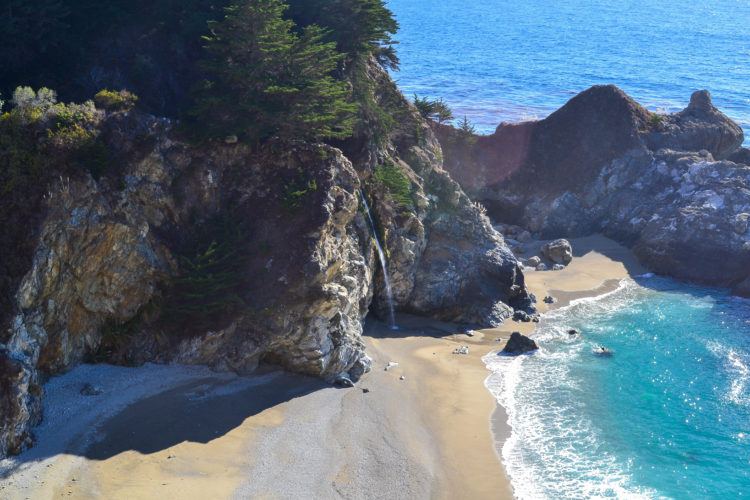
And if you’re primarily visiting one city and doing a few day trips, can you move all your day trips to the beginning/end of your trip to only book the car for 3 days, instead of say 7? It’s silly to pay for an extra day if the car will just sit there all day.
But always check how much a weekly car will cost – sometimes there are deals, and a rental may end up being cheaper in total if you book for longer (crazy, huh?)! It’s wise to think about parking fees and such before getting too excited though.
Additional Reading: Tips and Tricks for your Next Roadtrip
Step 16: Buy travel insurance
Confession time: I was always that girl who never really understood the value of travel insurance. Honestly, I thought it was a complete waste of money. After checking out the highly recommended Safety Wing , I finally came to the realization that it really is worth the (small) extra cost, and it’s just plain stupid to travel without.
Safety Wing is not just for medical insurance, but also helps when luggage is lost, you need to cancel a trip, or when your gear is stolen or damaged when traveling.

Even better, you can purchase at home or overseas (while already traveling) & make claims online from anywhere in the world. There’s really no excuse, especially since the insurance only costs a few dollars a day. You’ll be kicking yourself mid-trip if something goes wrong and you’ve got to pay tons out of pocket.
They say if you can’t afford travel insurance, you can’t afford to travel. Now I won’t travel without it. Get a FREE quote . Planning a trip abroad? Just get the insurance. No excuses.
Step 17: Before you go action items
Thought you were done? So close, just a few more things to do when planning a trip! These last-minute items can literally be done in the few days leading up to your trip. Some only take a minute, but are oh-so-important.
- Tell your credit card companies you’re traveling (you don’t want any cards to get denied because of suspected fraud/theft)
- Arrange for pets to be watched and plants to be watered.
- Get familiar with currency rates. They obviously vary from country to country, and can sometimes be as easy as moving the decimal point a few spots, or as confusing as dividing everything by 7.3. Download a currency converter for your phone for easy conversions on the road (I like Currency XE).
- Learn a few important words/phrases in the local language. I find Duolingo quite fun!
- Do some research on safety, common scams, and any areas to avoid in the destinations you’re visiting. It’s also wise to check out any cultural norms/basic manners in your destination.
- Let friends and family know you’re traveling. Be safe – someone at home should always know exactly where you are, especially if you’re traveling solo.
- Transfer money into Schwab account: remember, this takes a few days, so be sure to transfer as much cash as you think you’ll need for the beginning of your trip. I like to make it easy and just do one bulk transfer before we leave. Remember, using Schwab saves you all those precious ATM fees!

- Buy necessary items: Depending on where you’re going, you may need to pack something specific. Traveling internationally? You’ll most likely need a plug adaptor ( this one works in all countries ) and possibly a converter for voltage. You’ll probably wanna pack a wide-brimmed hat and reef-safe sunscreen for warm-weather destinations. A sarong to cover up with for visiting temples in Asia.
- Credit cards you are bringing
- Travel insurance documents
- Rough itinerary
- Flight/Hotel/Activity reservations
I also like to print out a copy (or 2) of my passport and keep in a separate place. If I’m keeping my passport in my purse with me, I also put a copy in my suitcase/husband’s carryon just in case.

A REALLY IMPORTANT EXTRA TIP: Figure out how you’ll get to your accommodation/into the city from the airport before you take off. The last thing you wanna do when you’re completely drained from sitting on the plane for 10 hours (with potential jet lag) is to figure out how to get to your first stop.
Be kind to yourself and at least write it down (on your handy-dandy Google Doc) beforehand. Consider the time you’re arriving, as public transport may not work all hours of the night.
Step 18: Start Packing!
Phew – so close! I suggest starting to take things out a few days before your trip so you don’t forget anything important. Make sure you’ve got your passport, additional form of ID, copies of credit cards and other documents, and your itinerary. You’ll also want to check the plug/socket type and make sure you have one/a few which fit.

A few of my top packing tips:
- Know your airline’s baggage fee policy. Don’t wanna show up at the airport expecting to get 2 huge suitcases for free and end up having to pay $$$ for them. A great list can be found here , but it’s always wise to triple check on the actual airline website.
- Pack light. Most people take way more than they actually need. Think about the activities you planned earlier, and pack according to that. Put everything on your bed and take out half of the clothing you think you need (yes, half). Not only will this reduce potential fees at the airport, but it’ll make it easier to get around with less baggage.
- Keep all your absolute essentials and one change of clothes in a carry-on. Lost baggage happens; don’t let it ruin your trip. Always keep medications and expensive electronics on your body, as well as a toothbrush!
- Come prepared. We always take along something for motion sickness, altitude sickness, stomach bugs (anti-diarrheal), and other general over-the-counter meds including fever-reducers, pain reliever (Tylenol or motrin), an antihistamine, and antibiotic ointment. Throw a bunch of band aids in your bag as well. You just never know what’ll happen and if you’ll have access to these quickly and easily on the road.
- Use packing cubes. I don’t know how I managed to travel before packing cubes came into my life. They are oh so helpful for organization and to keep my bag from exploding. And if you haven’t ordered packing cubes in time, you can always use large plastic bags. Better yet, roll your clothes into packing cubes and you’ll be golden.
Step 19: And you’re off!
You did it! You planned your trip! Now go enjoy the fruits of your labor and have the time of your life! Just remember to stay safe and take lots of photos! Be sure to read how to stay entertained on long flights before you leave so you’re first 3, 7, or 10 hours of travel isn’t a complete bore!
Hope this ridiculously detailed guide on how to plan a trip helped! Where are you hoping to travel soon?! Now, go help a friend plan a trip, pronto!
Leave a Reply Cancel reply
Your email address will not be published. Required fields are marked *
Save my name, email, and website in this browser for the next time I comment.
June 15, 2020 at 5:27 am
This is so so so helpful! I am a hyper planner as well so this is pretty much exactly what I do. Love this!
June 16, 2020 at 9:15 pm
Yassss! Planners unite! Everyone thinks I'm crazy, but then I go ahead and plan the best trips!
August 5, 2020 at 12:33 pm
Planners unite! Everyone thinks I’m crazy!
September 22, 2020 at 5:24 am
Hi jess, Amazing post! You share some useful blog every time. I appreciate your planning and Your planning always working for me. Thank you for sharing your travel plan.
January 24, 2021 at 4:18 am
An informative read Jess. You’ll have to visit Tenerife one day and do a review of the island.
March 21, 2021 at 9:55 am
I plan to travel to Croatia in 2022. Yes it is more than a year upfront. I like your blogs a lot and will definitely use them. Any suggestions for traveling the Croatian coastline. Want to fly to Rome and travel per train to Venice and from there with a bus/train to a destination in Croatia where I can rent a car. Preferably Poreč then Pula and all along the coast to Rijeka to Zadar, Split and all the way to Dubrovnik.
December 29, 2023 at 6:34 pm
Hi Jessica! Thank you so much for this article – it was very informative! My husband and I are planning on taking a trip to Japan in Spring of 2025. Do you speak Japanese? If not, did you find it difficult navigating the county? I am trying to figure out if I should book a tour group, or if we would be okay just going by ourselves. 🙂 Thanks so much for your help!
December 29, 2023 at 6:36 pm
Sorry! This comment was supposed to be on your Japan article! I don’t know how to fix it. LOL.
You may also love...

Subscribe To The Newsletter
FOR TRAVEL INSPO and FUN
No spam, only fun!
Favorite Destinations

- About Jessica
- How to Plan a Trip
- Fave Travel Companies
- Shop My Faves
Destinations
- World Travel
- San Francisco
- Northern California
- Southern California
- Central Coast
- Work with us

How to Plan a Trip: A Detailed Travel Planning Guide
Last updated on November 30th, 2023
Looking for the best tips on how to plan a trip? Our step by step travel planning guide goes through our exact process of planning our trips, including our travel itinerary template, so you can plan your next trip easier!
It’s no secret that we love planning trips! We love researching for hours upon hours, digging into everything a city has to offer, learning tons, picking spots we want to check out, and crafting the perfect itinerary.
We are definitely itinerary-based travelers vs spontaneous travelers (although we’re trying to leave more time for spontaneity during our trips!) and we’ve found that putting in the work to plan a trip beforehand can dramatically change the outcome of a trip.

There’s no wasting time wondering “where should we eat?” or driving all around town from spot to spot because we didn’t realize how far things were. Instead, we show up with a plan and get to enjoy where we are. Granted, things don’t always go according to plan, but we definitely feel like it sets us up for success!
We originally created this blog to help eliminate some of your headaches when you plan a trip. It can be daunting to figure out how to fit an entire city, state, country, etc into X days.
Our travel guides in particular are perfect for those who want a solid list of things to do, places to eat, etc. already organized into a well thought out itinerary. Our goal is to do all of the research for you so you can plan your perfect trip without spending hours and days scouring the web.
However, we haven’t been to every city in the world, so we may not always have a travel guide for you. So we wanted to create a travel planning guide, with our step by step list of how to plan a trip, including our travel itinerary template , so you can plan an epic trip and make the most of your time in any destination!
Looking for more travel planning tips? Check out these posts:
- How We Afford to Travel: Our Top Travel Budgeting Tips (+ Budget template!)
- Our Favorite Travel Credit Cards
- Fly for Less: Tips for Finding Cheap Flights
Step 1: Choose your destination
Step 2: make a travel budget, step 3: track and book flights, step 4: book your accommodations, step 5: book your transportation, step 6: research, research, research, step 7: google maps, step 8: make your itinerary (with our travel itinerary template), step 9: book any tours, activities, and reservations, step 10: have a pet find a sitter, step 11: prepare for your trip, step 12: pack for your trip, step 13: have a blast .
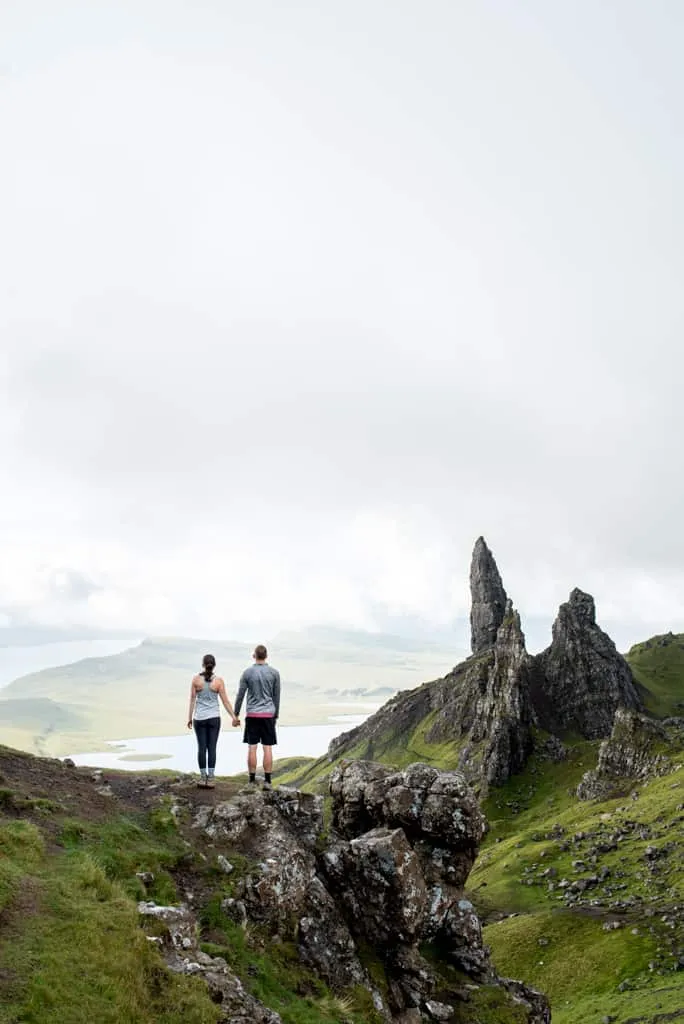
The first decision when you plan a trip is often the hardest: where should you go?! If you’re like us, we want to visit as many new places as we possibly can, but we also love visiting places that are special to us. Trying to make the decision of where to spend our precious vacation time and limited travel budget sometimes feels impossible!
While we don’t have all of the answers of how to decide where to go, here are a few things to consider.
Type of trip
What kind of trip are you looking for? Do you want to be in a big city? Hang out at the beach? Go for tons of hikes? Or all of the above? Our first task when figuring out where to go is to think about the activities and vibe we are looking for during our next trip.
If you’re having a hard time deciding, some of our favorite destinations are:
- The Dolomites: The Dolomites are full of adorable small towns, hikes, and epic scenery! It’s absolutely gorgeous and we hear it’s cheaper than the Swiss Alps.
- Matera, Italy: The smaller town, less tourists and crowds, unique cave dwellings, and crazy history made Matera one of favorite spots in Italy!
- Vancouver, BC: We used to visit Vancouver all the time when we lived in Seattle. The city is beautiful and there are so many outdoor activities just minutes from downtown.
- Scotland: We visited Edinburgh and the Isle of Skye and think they are some of the most underrated destinations. Both were jawdroppingly beautiful and have tons to see and do!
- Seattle : Seattle is our favorite city in the US! We lived here for three years and loved it so much. There are so many things to do, including hikes, lakes, beaches, city activities, and delicious food!
- Hawaii: It’s no secret that Hawaii is one of our favorite places in the world! We have been to all four major islands, some more than once, and each one is amazing!
- US National Parks: Want to see some of the best nature in the US? Visit a National Park ! Some of our favorites have been Yosemite , Zion , Grand Teton , Yellowstone , Big Bend , Olympic , and North Cascades .
Is there a certain time of year that is easier for you to travel for work or other reasons? For us, it’s the summer and winter, which can influence where we go. If we don’t want to be cold in the winter, we’ll use that time to go somewhere tropical, and on the flip side, if we want a break from the heat in the summer, we would head to somewhere a bit cooler (or below the Equator).

Peak Season vs. Shoulder Season
Some destinations have very clear peak seasons. If crowds are not your thing, try looking for destinations that will be having their shoulder season (the months between the busy season) during the month you want to travel. The weather may not be as perfect during “shoulder season, but you can save a ton of money (and headaches!) by traveling during the off-peak times.
Flight Deals
We will share some of our tips for finding flight deals in Step 3, but one thing to consider when deciding where to visit is to see where you can get a decent flight deal. We have sometimes made last minute trip decisions and visited somewhere we didn’t plan to visit so soon because we got a good flight deal.

Specific Attractions or Events
Is there a specific thing you want to see or do in a destination? For example, do you want to attend a music festival in a specific city? See the cherry blossoms in the spring in DC? Want to drive the Going-to-the-Sun Road in Glacier National Park?
Sometimes planning a trip around a specific attraction or event can make the decision a bit easier since you have a limited time to take part in that activity.

After we have an idea of where we want to go, our next step is to make a travel budget. We try to think of every expense we will have on that trip, from flights, lodging, a rental car, dog sitter, food, activities, gas, and more. This helps us get an idea of how much we will spend and to see if we can realistically afford the place we want to visit. It also keeps our wallet in check when actually on that trip!
We have a travel budget template that we use to not only plan out individual trips, but our trips for the entire year. This helps us see how much we want to spend on trips vs. how much we will be saving to travel.
To see how we afford to travel + our tips to save money to travel and while traveling, check out this blog post !

Once we have a good idea of where we want to go and how much we want to spend, we start trying to find cheap flights! We have a few favorite tools we use to find flight deals, which we’re sharing below.
To get a more detailed look into how we find affordable flights, including a tip we used for our Italy trip to save us over $1,000, read our Fly for Less: Tips for Finding Cheap Flights blog post!

Google Flights
We love Google Flights ! This free tool lets you plug in where you will depart from and where you want to go and see lots of flight options from tons of different airlines. You can then track specific flights that work well for your schedule or airline preference. You’ll be notified anytime the flight goes down or up in price, which can help you have a better idea of when it’s time to pull the trigger.
If you’re still stuck in Step 1 and unsure where to go, their explore destinations tool is very helpful to see what destinations are cheapest to fly to from your home airport on specific dates!
If you’re feeling more open on when and where you want to travel and just want a great deal, our favorite paid tool is FareDrop , which allows you to pick the departure airports you want to be alerted about, which destinations you want to travel to, and which months you want to travel.
FareDrop costs $47.88/year (if you use our link you’ll get 2 months free!), which seems a bit pricey, but we get tons of deals weekly! We have yet to pull the trigger on them, but hopefully soon!
Another tool we have used a lot in the past is Hopper . Hopper is a tool that helps predict flight costs and lets you know when the right time to book is. Nothing is worse than when you buy a flight and then the next week it has gotten a lot cheaper!
Scott’s Cheap Flights
Scott’s Cheap Flights is both a free and paid tool ($49/year) that will alert you about deals and mistake fares (when an airline accidentally publishes the wrong fare). Similar to FareDrop, you choose your home airport (and neighboring airports) and get deals from those airports. Or you can see deals worldwide! We only use the free tool of Scott’s Cheap Flights and we get pretty great deals! If you pay for their Premium version you supposedly get even better ones. 🙂
Skyscanner is another very popular tool for finding cheap flights. We have seen flights cheaper on Skyscanner than most other websites. Once you find a cheap flight, you book it through one of their travel partners. The only downside for us is that we typically cannot get that price with our credit card point s , which we would rather use to book travel (since it’s free!).
By far our favorite way to book flights is with our credit card points ! We have saved thousands of dollars by using credit card points and the best part is that we earn these while making our usual transactions, like the grocery store, bills, or coffee. The points add up fast depending on which card you have, so it’s not too hard to get free flights!
We currently have 4 travel credit cards : Chase Sapphire Reserve, American Express Platinum, Capital One Venture Card, and the Alaska Airlines Card and each one has its pros and cons.
For more details on our favorite travel credit cards, the best benefits, and how to pick the right one for you, check out Our Favorite Travel Credit Cards blog .
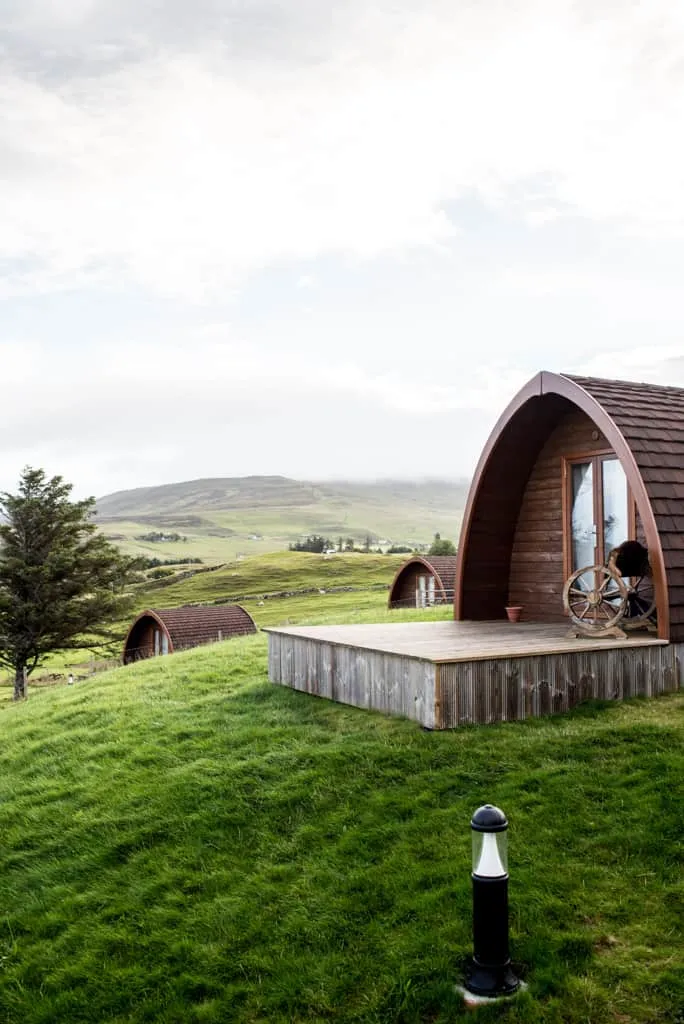
After figuring out flights, it’s now time to find a place to stay! Once we have a general idea of the dates we plan to travel, we start looking for Airbnbs and other accommodations, saving any spots that catch our eye, and then as soon as our flights are booked, we book our lodging. Here are a few sites we love for finding accommodations!
We are huge Airbnb fans! We probably stay in Airbnbs 95% of the time when we travel. We love getting to stay in more local areas, having more space, being able to cook, and it’s usually cheaper than a hotel!
Tripadvisor
Tripadvisor is our go-to site for hotel reviews! It has helped us make the decision of where to stay (or where not to stay) many times.
Booking.com
Booking.com is our favorite website to book hotels. Their prices are usually some of the best out there! Another really cool thing about Booking.com is that they have vacation rentals (like Airbnb) as well. So if you want a one stop shop to browse hotels and rentals, they’ve gotcha covered!

Depending on where you’re visiting, you may need to book additional transportation.
For rental cars, we typically book through rentalcars.com . They have a price match guarantee, so if you find a better price somewhere else, they’ll match it!
We also have used Costco to book rental cars before. Their prices tend to be the best out there, but you do have to be a member or have access to a member’s account. It’s okay if the name on the car is different than the member’s name, so if you have a family member with a Costco membership, ask them if you can use it!
Note : our travel credit cards give us rental car insurance around the world, so we do not opt into the additional insurance when renting a car. Make sure to check in advance to see if you’re covered! Also, make sure to book an automatic car in Europe if you don’t know how to drive a manual. 🙂
For public transportation , like trains, subways, and buses, purchasing in advance varies depending on where you’re going. During our Italy trip, we booked most of our trains and buses from city to city in advance to take advantage of a lower price. But in most US cities, like NYC, you just get your tickets at the station before boarding your mode of transportation.
When looking for trains, subways, and buses , we typically start our search with Google Maps to see the routes and find out which company runs that route. Then we go to that company’s website to see fares, schedules, and to see how to purchase tickets.

Our next step when we plan a trip is to research like crazy! We spend days and even weeks reading blogs, watching vlogs, and scouring the internet for as much information as we can about a destination, including where to eat, things to do, and any helpful tips! As we research, we create a Google Doc and write down the spots we find by category (food, coffee, landmark, activities, etc).
This part can be a bit overwhelming because there is tons of information out there and it can be hard to figure out what to prioritize for your own trip. We like finding a mix of popular spots with thousands of reviews, as well as more local spots with maybe less reviews overall, but very positive ones. And if we see a recommendation mentioned on multiple blogs and websites, that spot usually goes higher up on our “must-do” list.
There are a handful of tools that we use every single time we plan a trip, each for slightly different reasons.
Our first step when finding things to do is almost always to do a quick Google search. We like to search for things like “best things to do in ____,” “unique things to see in ____,” “where to eat in ____,” and “X days in _____” to find blog posts (like the ones we write!) for different destinations, which always give us tons of ideas!

Pinterest is an amazing resource for travel planning. It’s a massive search engine and a great way to quickly find tons of blogs about a destination you’re going to and to see what real people recommend. We typically create new boards for a country or region and then fill it up when we start to dream about a trip we want to take.
Once it comes time to actually plan it, we will head to that board and open all of the blogs we saved, write down common things people recommend and then research some of the lesser known options.
If you’re not already following us on Pinterest, come hang out with us here . We love to share pins from all over the world!
Tripadvisor, Yelp, and Google Reviews

Okay, these are definitely the most obvious, but they are high on our list when researching different cities! We know that some people are leery of review sites, but we personally love hearing from regular people about their experiences at a restaurant, attraction, etc.
We think that if you look at a wide variety of reviews for a place, the good and the bad, you can usually feel pretty confident (or not confident) in making it a stop on your trip. Tripadvisor also has forums where people can ask questions and others can answer and these can be really helpful to read, especially if you have questions that others have already asked.
One thing we have noticed is that Yelp is big in the US for restaurants, but Tripadvisor and Google Reviews are much bigger abroad. For our Mexico City trip, we relied heavily on Google Reviews, as the other two sites hardly had any reviews for restaurants. So make sure to look at all three sites to get a better idea of what a restaurant or attraction is like.
YouTube Vlogs

YouTube is our new favorite way to research for trips. It’s like reading blogs, but actually getting to see the experiences! Some of our favorite travel vloggers to watch are: Kara and Nate , The Endless Adventure , and Mark Wiens for awesome food videos! We watch travel vlogs every night and always mark down good spots to check out whenever we go to those destinations in the future.
If you want to follow along on our adventures, you can subscribe to our YouTube channel here !
AllTrails and Hiking Websites
We love hiking during our trips and one of the best resources we have found for trails is AllTrails . What we love about AllTrails is that it has trail information, such as miles and elevation gain, as well as hiker reviews, for trails all over the world!
We have used AllTrails for hikes all around the US, as well as in Italy and Canada, and it has always helped us gain a better understanding of what to expect on the trail, as well allowed us to follow our progress on the trail map.
There is a free version, but we recommend paying for the AllTrails Pro app ($30/year) to have guaranteed offline map access, off-route notifications, and family and friend notifications.
Beyond AllTrails, we love finding local hiking websites. When we lived in Washington, we used the Washington Trails Association website for every hike. Similar to AllTrails, it has reviews, photos, and hike information, but it is typically more detailed.

Instagram has opened our eyes to sooo many places in this world! The popularity of the app is both a good thing and a bad thing, as some places are becoming Instagram famous and are definitely being visited too much and/or disrespected, but it is also showing us how beautiful some lesser known places are.
Similar to Pinterest, you can bookmark posts on Instagram and even organize them into different collections. We use this feature to save spots that look cool to visit in the future. However, we love Instagram more for the ability to see places in real time.
When we know we are going to visit a place, we will look up the locations on Instagram (both posts and stories) to see what it currently looks like, crowds, and to try to find cool photo spots. We did this a ton in Washington to plan our hikes and to see if there is still snow, what the hike looks like in different weather conditions, etc. It’s also helpful to find out if a specific spot is under construction *cough* Big Ben *cough*.
Don’t follow us on Instagram yet? Head on over to our Instagram page to see even more adventures!
Family and Friends
If you have friends or family members that have visited the destination or live in the destination you’re heading to, ask them what their favorite spots are! These recommendations can often be the best, especially if you know and trust that person’s taste.
One of the best food recommendations we ever got was from one of our best friends. She told us we had to go to La Romana for gelato while in Rome, which wasn’t originally on our list, and it ended up being our favorite gelato during our entire two weeks in Italy! We owe her a scoop (or two) of gelato for that recommendation!

After we make a big list of all of the restaurants, landmarks, activities, and tours that catch our eye while researching, our next step when we plan a trip is to look at Google Maps to see where everything is in relation to each other.
We try to structure our days in a way that we don’t have to travel all over town, but instead stick to a general area so we can maximize the time we have to explore. We suggest making a map on Google My Maps so you can pin all of the locations and then start to group together the things that make sense to do together. This will help you big time with Step 8!

So you’ve done your research, written down some spots, and have seen where they all are on a map…now what? Our next step when we plan a trip is to start organizing all of our must-do and must-eat places into an itinerary.
Our friend Callie created the most detailed, helpful travel itinerary template in Google Sheets that has helped us SO much with our last few trips. We told her we were going to have to share it on our blog because it was very useful and would help so many people, so a BIG thank you to Callie for creating this!
We like creating an itinerary because typically our trips are short and we want to maximize the time we have in every destination. We realize not everyone likes to have as structured of a trip, so feel free to modify the template to fit your needs better! We always recommend being a bit flexible in case the weather is bad one day, you are exhausted and need more rest, or things just don’t go according to plan (which happens often when traveling)!

With this travel itinerary template you can list out the activities for your day in order, write down addresses, add notes (such as: arrive before X time to avoid a line, how to get somewhere, note that it’s cash only, etc), add helpful links, keep track of costs, have a rough estimate of timing for each stop, etc.
It’s also great for collaborating with others! We have used it for our couples trip to Arizona to make comments back and forth and decide what we want to do.
You can download our travel itinerary template here . Note: To use the sheet, please go to “File” and then “Make a Copy” to create your own version! We included an example as well so you can see how we would fill it out.

Once you have a good idea of your itinerary, start locking down any tours, activities, and meal reservations for a time slot that works best for you!
Tours + Activities
When we were in Italy, we booked our tours and entrances to museums in advance to save a little bit of money. While we typically had to commit to a timeframe, it helped us structure our days better and ensure we had a tour to go on.
For attractions where you can get early admittance (like the Vatican) or they get busy during specific times, booking ahead of time can also help you beat the crowds.
Not sure where to find tours? We’d recommend looking on Tripadvisor and Airbnb Experiences !
Want to save some money on a tour or experience? Book on Tripadvisor and use our code APLUSK10 for 10% off!
Reservations
If during your research you find that a reservation is heavily recommended for a restaurant, set a reminder on your phone for a month or so beforehand to give them a call and secure a table. When you have limited time to explore on a vacation, the last thing you want to do is wait in line for a restaurant, especially if you’re hangry. 🙂

One big thing to consider when traveling are your pets! We travel full time with our pup Kona, but there are some times where she cannot go with us on a hike, to a park, or if we are flying to a destination. For any flying trips, Kona will stay with Kathryn’s parents in Austin, but for road trips, National Parks, and other domestic destinations, here is a detailed guide to how we travel with Kona, and where she is if she is not with us. Note: if traveling during holidays or peak season, try to book a sitter far in advance!

Depending on your trip and where you’re going, there are a few extra things to consider looking into before you travel.
Book luggage storage
The only downside about staying in an Airbnb vs. a hotel is that sometimes you’ll arrive before check in or have time to explore after check out and have nowhere to put your bags. We have used Luggage Hero or Bagbnb to find safe places to leave our bags while we explore before or after checking out.
Get travel insurance
We highly recommend buying travel insurance for any international trip. We recommend using SafetyWing , which is travel medical insurance that will cover you outside of your home country for however long you need it. We have purchased their Nomad Insurance plan for international trips, which not only gives us travel medical insurance, but also provides coverage for lost baggage and travel delays. We hope to never have to use it, but it gives us great peace of mind to have it!
Look into driving rules
In Italy, we had to get an International Driving Permit. You can get this from AAA for only $20. We aren’t sure how many countries have this rule, so definitely check the road rules beforehand to avoid getting a ticket or having issues getting your rental car.
Find out if you need a Visa
Depending on where you are visiting, you may need to get a Visa to enter. This website shares the Visa requirements for US citizens for both business and personal trips for every country! We suggest checking this right after booking your trip to see what the requirements are and how to obtain one.
Check vaccine requirements
Some countries require that you have certain vaccinations before your arrival. You can search the destination you are visiting and see if it requires you to get a vaccination on the CDC’s website . We suggest checking a couple months in advance, as different vaccines have different timeframe requirements to get them.
Get local currency
If you’re traveling to another country, make sure you look into the local currency. We typically will order some foreign currency from our bank before our trip (try to do this at least a week before you leave, as it takes a few days) just to make sure we have some on us when we land.
After we land, we will try to find somewhere to get additional currency during the trip. Make sure to research where the best place is to get this currency. In Italy, for example, the best place to get Euros was from bank ATMs—the ones in actual banks, NOT the ones just on the street in the big cities, as those will charge you massive fees.
You may also need coins for restrooms in some countries, so plan to have coins, as well as bills, handy for your trip.
Also, let your bank know you’re traveling abroad to avoid them thinking there is fraud with your card.
Learn the local culture and etiquette
It’s important to understand the culture in a different country or region, especially if something that is considered inoffensive in your home country is considered offensive elsewhere.
Tipping is another important thing to look into. In the US, tipping 20% is pretty standard, but in Europe, tipping is not common at all.
Figure out your internet plan
If traveling abroad, we highly recommend getting an an eSIM card with Airalo ! This is a SIM that you can download to your phone. It saves the hassle of having to get a physical SIM in every country you visit! You can get an eSIM for a specific country or for an entire region, making it extra easy to use if you plan to hop between countries. But before you get an eSIM, make sure you truly need one! Our Verizon plans give us 2 GB of data everyday in Mexico and Canada, so we do not need an eSIM for those destinations.
We also suggest downloading offline Google Maps so you can use maps without eating up data.
Download Google Translate
Google Translate has been a lifesaver when traveling internationally! We used the conversation feature to communicate back and forth with our Airbnb host in Italy and it not only was so much fun, but it allowed for us to converse even with a huge language barrier!
Let someone know your plans
Make sure a family member or friend knows your plans just in case something were to happen. We always send our parents our flight info, as well as our itinerary, just so they are aware of what we’ll be up to during our trip.

Do you pack in advance or are you a last minute packer? We used to start packing days in advance, but lately we procrastinate big time! Regardless of when you pack, figuring out what to bring on your trip, while also not forgetting anything important, is hard!
Check out our top travel items and packing list to see which items we cannot travel without and to download our packing list, which includes common items and some easy to miss items, that you won’t want to forget!
Our most important packing tip: Don’t forget your passport and make sure you have an adapter if traveling abroad! We love this one !

After all of your hard work, it’s time to enjoy the trip! We hope that you found this travel planning guide helpful and that it’ll make it easier to plan a trip in the future!
Ready to plan a trip?
Pin this step by step travel planning guide to make planning your next trip a whole lot easier!

get the behind the scenes scoop!
2 thoughts on “ how to plan a trip: a detailed travel planning guide ”.
Love your enthusiasm. Many carefully thought out ideas. When you post a photo on your blog, it covers up what you wrote. For instance I can only read one Credit card, Chase, the other three are covered by the happy photo of you two. Your three how to plan a trip guides cover up what ever your conclusion/close suggestions? Hope you can fix this as you seem to be very thorough…. I don’t have this problem with my other sites I read regularly. Just thought I would mention.
Also, you should always have a photo copy of the your passports and front and back of credit cards with your parents In case of problems… You can ge it all replaced many hours /days quicker than without…
I am so sorry you’re having issues reading our site. Everything looks normal on our end, so that’s very odd and we’d love to figure out what went wrong. What internet browser and type of device are you using? We will look into this to make sure no one else has issues like this.
And thats a great tip about passports and credit cards!
Leave a Reply Cancel reply
Your email address will not be published. Required fields are marked *
© 2023 Adventures of A+K. All Rights Reserved. Website built with love by Dreamworthy Design . – Stock Photos provided by our partner Depositphotos
Privacy Policy
- Trip Planner
Trip Planner | Travel Itinerary Planner | Plan a Trip
Are you looking for an itinerary planner to plan your next trip? We know creating a customized travel itinerary manually is an overwhelming task. You have to put a lot of time into selecting destinations, booking hotels, flights, and comparing prices. On top of that calculating budgets & booking hotels and flights is another challenge that makes itinerary planning tough.
But what if all of this is done within a few minutes for you? Yes with TripHobo trip planner you can do this smartly. We have observed that many travelers end up spending more time in researching information than enjoying the actual trip. Not only first-time travelers but also experienced travelers struggle in creating perfect travel plans.
Even though it is a tedious task to create a customized itinerary, everyone agrees on the importance of itinerary for an enjoyable holiday. So Triphobo came up with this easy to use automatic itinerary planner.
How Trip Planner Works / Steps to Plan a Trip
Do you want to create your travel itinerary quickly & easily? Are you ready to use this tool now? TripHobo's trip planner plays a major role to ease the itinerary creation process and helps you overcome the pain in the trip planning . Follow these 4 simple steps to plan a trip & let us know your experience.
1) Choose Your Destination & Dates when you want to travel
Visual algorithmic trip planner lets you choose destinations you want to travel to. You have the freedom to choose the real dates from the calendar. After selecting travel dates, planner runs algorithms to optimize a trip. It starts suggesting activities, sightseeing spots, tours and transport options with the details. For every attraction, it suggests open/close timings, time to spend, and nearby restaurants.
You can drag & drop activities and complete your itinerary within a matter of minutes. You can book yourself a nice vacation once you are sure of all the details, making you plan your trip very easily.
2) Refer to User Created Itineraries
If you have a lot of travel ideas but confused about where to start? Don't worry. Thousands of other people have visited the same destination before and created itineraries with us. Choose from a pool of more than 1 million user-generated itineraries around the globe. You can view other travelers’ itineraries for any location and duration to inspire yourself and then customize them to suit your own preferences.
3) Book Hotels and Flights
TripHobo always tries to offer the best from the travel industry to our valued planners. It has formed alliances with Expedia , Skyscanner, Zomato and Booking.com. Its ratings and reviews come courtesy of TripAdvisor whereas Google (as well as other partners) powers its location data.
TripHobo aims to cater to travelers at every stage of the travel planning process. It provides one platform to create personalized itineraries and hassle-free bookings .
4) Get Ready with a Perfect Itinerary
Once you’ve created your customized itinerary, you can print it. Save your plan for future reference or share it with your friends. When you’re ready, you can finalize and have a perfect travel itinerary ready.
Why Is TripHobo a Smart Trip planner?
There are few things included in the Triphobo planner algorithm & app which builds itinerary within minutes.
- A free virtual map-based trip planner with a smart algorithm
- International trip planner with about 1,50,000 popular destinations
- The largest repository of user-generated itineraries
- Hassle-free booking options for hotels, tours & flights
- Provides local transit options like metro, rail, bus, and car
- Calculates an estimated budget
- Provides options to save, print and share itinerary
- Strategic Partnerships with leading travel companies
TripHobo: Around the Web
- Trip of Your Own
- Traveling made easier with TripHobo
- Making The Southeast Asian Travel Connection
- Ex-HCL employee’s led ‘TripHobo’ is on a mission to become a global brand – a goto place for travel planning!
- Interview: Praveen Kumar, Founder & CEO of TripHobo
- TripHobo inks partnership with Zomato
- How a trip planning startup can succeed
- Karthik Ramachandram Co-Founder COO, TripHobo - Phocuswright Conference
Here's what travelers have to say about our travel planner
- Excellent 238

Great and genuinely wonderful website that makes a proper vacation plan simple, like it should. All reviews are 5 stars. The only suggestion I have to enhance this fantastic website is to include a mobile application. Even paying for a version without ads wouldn't bother me.
Every traveller should use this!
So much easier & more helpful than a travel agency, given lots of fantastic ideas, and was extremely helpful for planning the trip. Would strongly advise my family and friends to use this!
Great tool for trip planning. Impportantly it's free and automatically tailors travel plans to your preferences and is completely customisable. The integration with skyscanner and booking.com, and other OTA like priceline and expedia makes it very easy to plan the whole trip along with the bookings in one place.
- PRO Courses Guides New Tech Help Pro Expert Videos About wikiHow Pro Upgrade Sign In
- EDIT Edit this Article
- EXPLORE Tech Help Pro About Us Random Article Quizzes Request a New Article Community Dashboard This Or That Game Popular Categories Arts and Entertainment Artwork Books Movies Computers and Electronics Computers Phone Skills Technology Hacks Health Men's Health Mental Health Women's Health Relationships Dating Love Relationship Issues Hobbies and Crafts Crafts Drawing Games Education & Communication Communication Skills Personal Development Studying Personal Care and Style Fashion Hair Care Personal Hygiene Youth Personal Care School Stuff Dating All Categories Arts and Entertainment Finance and Business Home and Garden Relationship Quizzes Cars & Other Vehicles Food and Entertaining Personal Care and Style Sports and Fitness Computers and Electronics Health Pets and Animals Travel Education & Communication Hobbies and Crafts Philosophy and Religion Work World Family Life Holidays and Traditions Relationships Youth
- Browse Articles
- Learn Something New
- Quizzes Hot
- This Or That Game New
- Train Your Brain
- Explore More
- Support wikiHow
- About wikiHow
- Log in / Sign up
- Planning Travel
How to Make Successful Traveling Plans
Last Updated: February 11, 2024 References
This article was co-authored by Amy Tan . Amy Tan is a Travel Planner and the Founder of Planet Hoppers, a boutique travel design team founded in 2002. Planet Hoppers specializes in brainstorming and creating itineraries for dream vacations, honeymoons, exotic adventures, family reunions, and group trips. Planet Hoppers is a TRUE accredited travel agency and a member of the Signature Travel Network, the Cruise Lines International Association (CLIA), and Travel Leaders. Amy earned a BA in Communications and a BS in Physics from the University of California, Davis in 2000. There are 13 references cited in this article, which can be found at the bottom of the page. This article has been viewed 91,268 times.
Whether you’re traveling for business or pleasure, every trip needs a little planning. Things like flights and hotels have to be booked in advance to make sure you get the itinerary you need. Travel planning doesn’t have to be stressful, though. As long as you allow yourself plenty of time to look around, compare prices, and make sure you have everything you need before you leave, you can plan a great travel experience.
Getting Started

- As a general rule, give yourself 6 months to plan an international trip, 3 months to plan a domestic vacation, and at least 4-6 weeks for a trip like a long weekend.
- Some major destinations such as resorts may require a deposit well in advance. As soon as you decide on a destination, contact them to figure out if they require a deposit, and how far in advance you need to pay it.
- If you are planning a last-minute trip, be mindful that you will need to be flexible in where you go and exactly what your vacation will look like. You can certainly plan a successful last-minute vacation, but it often takes more maneuvering.

- Your budget breakdown will vary significantly depending on your trip. If you're going abroad, for example, a lot of your budget may be dedicated to transportation. If you're planning a food tour, you may be spending a lot on meals but relatively little on attractions.
- Remember to plan for little things like taxis or ride shares around town, the cost of boarding your pets, foreign transaction fees, baggage fees, and different sales tax rates in different regions.
- It’s wise to set aside about 10% of your overall vacation fund as an emergency fund for unforeseen circumstances. Forgetting your sunscreen at home, having to take a taxi because you missed the last bus, and ordering an extra drink at dinner all add up. Have an emergency credit card in case you need it, but try to avoid relying on credit cards to curb the potential for overspending.

- If, for example, you want to take an international trip to Paris but you only have 2 vacation days, Paris probably isn’t the right destination at this time. You can always choose to wait until you have more vacation saved up or choose a destination that doesn’t require such a large time commitment for both transit and tourism.
- Likewise, if you are meeting a client with offices downtown, don’t stay in a far-off suburb to avoid the city noise. It can often take a lot of valuable time to commute in the morning -- and that's time you could be using to prepare for your meeting.

- Consider the age groups traveling with you. If you're bringing kids, look for a destination that has kid-friendly activities. If, for example, your child loves dinosaurs, check a destination's natural history museum to see if it has an interactive exhibit on the subject.
- If you and your travel companions like outdoor activities, check the predicted forecast for your destination well in advance to make sure you can participate in the activities you enjoy. Most weather websites and almanacs provide seasonal weather trend information.
- Consider the physical abilities of yourself and your travel companions, too. Your aging parent may want to see the history in Philadelphia, for example, but if they have limited mobility, the relative lack of things like elevators and escalators might make it difficult to visit popular destinations.

- Different countries may have different entry requirements. That’s why it’s important to look for your destination country’s embassy for your home country. This will give you information relevant to you.
- Even if no immunizations are required for entry, it may be advisable to get them if you are traveling to a high-risk area. Check with your country’s department of public health or disease control to see what immunizations they recommend for your intended destination.

- Even if you don't need full-time care for kids or pets, it may be worthwhile to book a house sitter. This person can check your mail, water your plants, and generally just make sure that your home is in order while you're away.
- For small pets like rodents and fish, you may be able to ask your house sitter to feed them and clean their bowl or cage while you're gone. These pets don't necessarily need to stay with someone full-time while you're away.
Making Reservations and an Itinerary

- When traveling to a different country, local aggregate booking sites may offer better deals than the ones you find in your home country. Check local listings to see if you can grab a better deal.
- To get the best idea of how pricing varies, compare itineraries that are the same. Check the same dates and destinations on different sites to see where you can really find the best deals.
- If you’re traveling as a representative of a particular company or organization, they may have an in-house travel site or travel booker that you are required to use. Check with your company’s administrative department to see if that’s the case.

- Likewise, if you're planning on staying in a hostel, hostel-booking sites usually have better offers than hotel booking sites. HostelWorld.com and HostelBookers.com are two options with extensive listings.
- If you're going camping, check your site well in advance. Popular campsites like Big Bend National Park in Texas can run out of permits months in advance. Don't assume you can just show up at a campsite and set up your tent. You often need to reserve a spot on site.
- Think about different routes you can take to get to your destination. Flights directly into Washington DC are often expensive, for example, because the DC airports are close to public transportation, hotels, and attractions. Flying into Baltimore is often more affordable, and still puts you a 20-minute train ride away from DC.

- For international trips, you may need to book further in advance, especially if you are flying or taking a cruise. Try to book at least 4 months out from your intended departure date in these cases.
- Trips taken during popular travel times should also be booked further in advance. If you plan to go to Boston for St. Patrick’s Day, for example, expect hotels to fill up months in advance.
- Some modes of transportation don’t require you to book as far in advance as others. A train, for example, may only require a reservation the week before your departure. Check your carrier to see their suggested booking time frame.

- Think about what meals may be included with your accommodations. Does your hotel offer free breakfast? If not, you may need to adjust your budget to include breakfasts.
- If you're staying at an all-inclusive resort or on a cruise, check with the resort to see if you need to book meals in advance. At some resorts and on some cruises, you have to make reservations for a certain seating time, even if the meal is included in your price.
- Consider your flight, too. If you have a long-haul flight where a meal is included, let the airline know about any dietary restrictions you may have at least 1 week before you depart. This way, you can ensure you get the right in-flight meal for your diet.

- Your daily itinerary doesn’t have to be elaborate. It may be as simple as “Breakfast: 9-10, Acropolis tour: 10:30-12:30, explore the city after the tour ends.” Just make sure you include those things that are really important for you to see and do.
- If you’re traveling for business, your itinerary may have to be more formal. Check with your company or client to see if you need to submit a formal itinerary for your meetings and activities.
- Leave some room in between activities in case things run long or you have any unexpected delays. You don't need to plan every minute of every day, just make sure you have time to fit in those things that are really important for you to see or do.
Getting Ready to Go

- The duration of your trip will also influence how much you pack. You likely won’t need 12 pairs of underwear for a weekend getaway.
- Try to pack light , sheddable layers such as shirts, light sweaters or cardigans, jackets, etc. This way, you can add on or remove a piece to suit the weather without having to pack entirely different outfits for different temperatures.

- Mobile phone charges
- Toothbrush and toothpaste
- Deodorant or antiperspirant
- An umbrella

- For example, in the US, appliances are 110 volts. In the EU, they're 220 volts. If your electronic has a plug or printing somewhere on it that says "110-220," this means the item is safe to use for both voltages.
- If you use an electronic item with incompatible voltage, it could short circuit your item and permanently damage or destroy it. It is also a fire hazard.
- Even if your item is safe for both voltages, it probably doesn't have a plug for both. You need an adapter or converter to plug into the wall outlets at your destination. Different countries have different outlets, so check online and buy your adapter before you depart.

- Ask them about any vaccinations they may advise for your destination, and talk to them about any preventative medications you may need to take while traveling. If, for example, you're going to a place where malaria is common, you may be given a preventative pill.

- 2-3 color copies of your government-issued ID or the information page of your passport
- A copy of your visa, if applicable
- Copies of your transportation and accommodations bookings
- A list of numbers for anyone important back home
- Enough cash to get you to your local embassy or emergency services (enough for a taxi ride from one end of your destination city to the other should be enough)
- An extra dose of any regular medication you take, as well as a few over-the-counter medications like pain relievers, antacids, and antihistamines.
Expert Q&A

- Pass your itinerary along to a friend or family member so that someone else has your information in the case of an emergency. Thanks Helpful 3 Not Helpful 0
- Remember to take some time to relax and enjoy yourself. Travel planning can be stressful, but the travel, itself, can be an amazing experience. Thanks Helpful 3 Not Helpful 0

You Might Also Like

- ↑ https://www.washingtonpost.com/lifestyle/travel/when-is-the-best-time-to-book-your-vacation/2017/10/26/6bcb052e-b5ab-11e7-be94-fabb0f1e9ffb_story.html?noredirect=on&utm_term=.da59e7b03972
- ↑ Amy Tan. Travel Planner. Expert Interview. 12 March 2020.
- ↑ https://www.theglobetrottingteacher.com/how-to-successfully-choose-your-travel-destination/
- ↑ https://travel.usnews.com/features/tips-for-getting-an-international-visa
- ↑ https://www.nytimes.com/2017/07/14/realestate/how-to-protect-your-house-when-youre-on-vacation.html
- ↑ https://www.smartertravel.com/2017/06/19/10-tips-finding-cheap-airfare/
- ↑ https://www.nerdwallet.com/blog/finance/cheap-hotel-booking/
- ↑ https://www.nerdwallet.com/blog/credit-cards/how-to-save-on-food-and-drink-costs-while-traveling/
- ↑ https://www.smartertravel.com/2017/06/19/create-perfect-travel-itinerary/
- ↑ https://thesavvybackpacker.com/how-to-dress-for-winter-in-europe-learn-to-layer/
- ↑ https://www.ricksteves.com/travel-tips/phones-tech/electric-adapters-converters
- ↑ https://wwwnc.cdc.gov/travel/page/see-doctor
- ↑ https://www.corporatetravelsafety.com/safety-tips/create-an-emergency-passport-kit/
About This Article

- Send fan mail to authors
Reader Success Stories
Haley Winderlich
Oct 23, 2018
Did this article help you?

Featured Articles

Trending Articles

Watch Articles

- Terms of Use
- Privacy Policy
- Do Not Sell or Share My Info
- Not Selling Info
wikiHow Tech Help Pro:
Level up your tech skills and stay ahead of the curve

How To Plan A Trip: Easy 15 Step Travel + Vacation Planner
by Mark and Kristen Morgan
Published: July 17, 2019
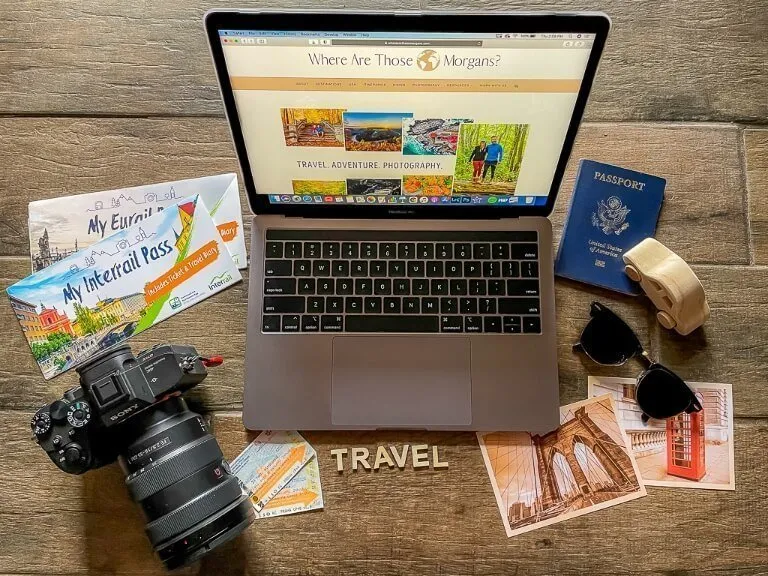
This ultimate how to plan a trip guide will transform your destination daydreams into travel reality within just 15 easy-to-follow steps.
Adventure is calling! But where should you go? How do you get there? And what do you need to organize before you leave home?
This one-stop travel planning resource covers all you need to know about preparing for any trip.
But how can you trust us to cover all of the important travel planning aspects?
The goal is to walk you through 15 simple and stress free steps, from ideas to bookings and from packing to walking out the door. We’ll take you on a journey from idea to reality.
Personally, when we plan a trip, we know that breaking the process up into sections works best. We feel less overwhelmed when we plan in manageable pieces.
Follow the steps in this guide and you’ll see just how easy planning a trip can be. Let’s travel plan!
The Travel Planning Rollercoaster

Planning any vacation is like being on a rollercoaster called the Emotion Overload. In the beginning the rollercoaster climbs slowly, building your excitement before plummeting into overwhelmed anxiety.
The second climb is determination and hard work, followed by a loop de loop as information spins around your brain in circles.
And just when it seems the ride will never end, the carriage comes to an abrupt halt: your plans are finally ready.
Break Up Planning A Trip Into 3 Sections
We are all different. Genetics, personality traits, habits and attitudes make us all unique. But although we are all unique, common patterns emerge among travelers.
Most long term travelers tend to book the first week or month in detail. Once comfortable with the whole idea of backpacker life, they tend to plan just a few days in advance each time they move.
Because who knows what might come up? Those taking shorter trips, such as a 2 week vacation, typically plan almost all specific details in advance.
Because who wants to lose valuable time planning what to do that day with just 2 weeks away from work
No matter how you prefer to travel or how long you intend to travel, the planning process can always be broken down into 3 manageable sections. You will make life easier and less like your brain might explode.
Plan, Book And Pack
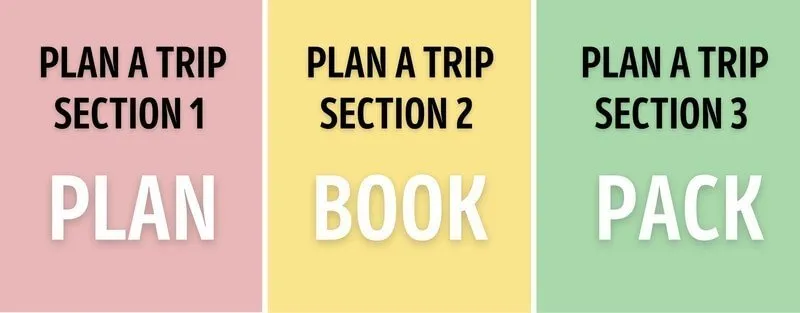
These 3 travel planning sections encompass the same repetitive processes we all follow, every time we travel. When we repeat them enough times, they become autonomous.
You plan your travel goals, you book the essentials, you pack your bags and you go.
But even when taken back to basics, each travel planning section can be time consuming, frustrating and overwhelming. We know from first hand experience when planning multiple long term travel routes.
The key is to break down each travel planning section into smaller, easier to accomplish steps. That way you will eliminate stress and feel the positive reinforcement each time you complete a step.
Follow the easily achievable steps listed below within each travel planning section. Begin to plan your trip in advance, take each step one at a time and we guarantee you will avoid feeling overwhelmed.
All you need to do then is watch your dream trip create itself before your eyes.
Need help with packing? You might like to use our ultimate travel packing resource .
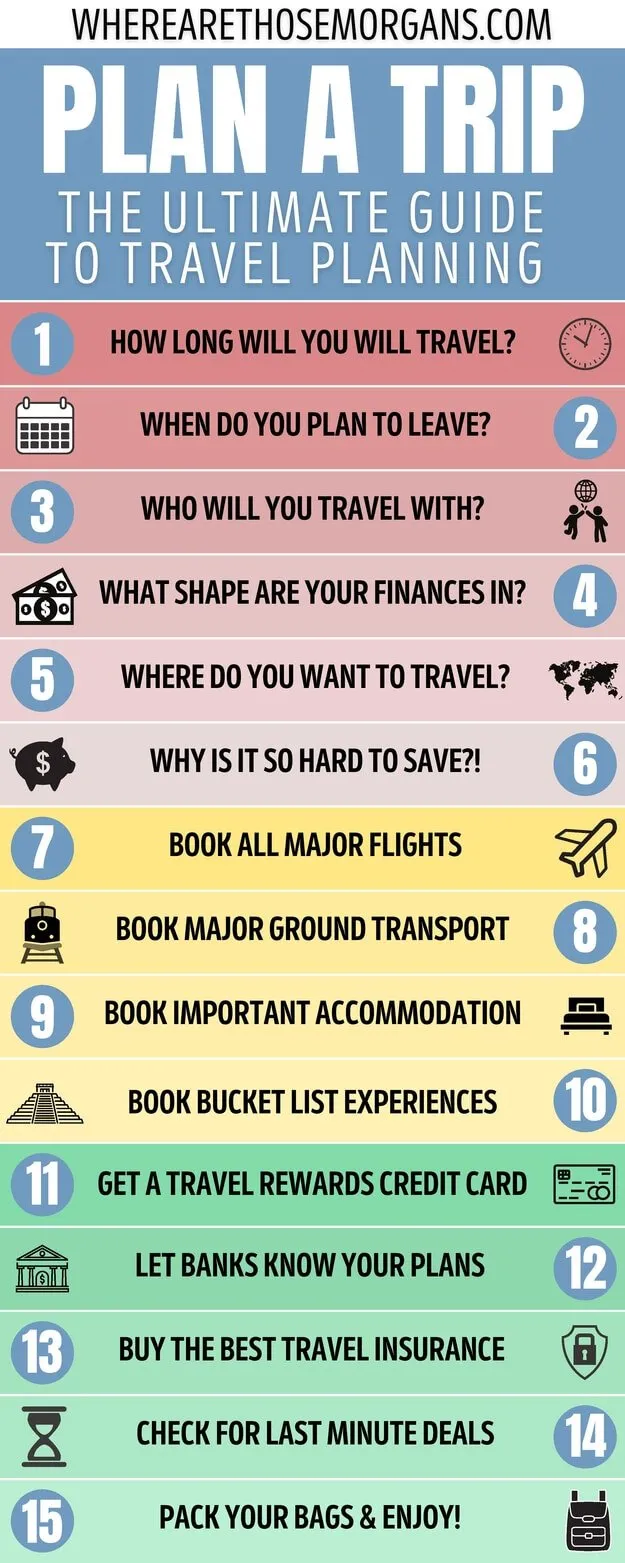
Section 1: Establish Your Travel Goals
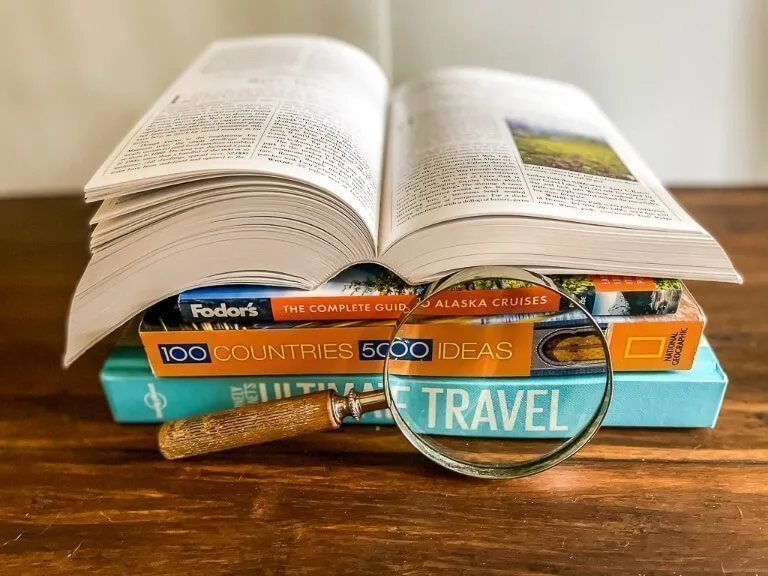
Let’s start at the beginning, the daydream stage.
You know it’s time for a vacation or a long term trip but right now you’re just floating ideas around.
Ask yourself these important travel planning questions (H and 5 W’s):
- How much time will you spend traveling?
- When do you want to leave?
- Who will you travel with?
- What shape are your finances in?
- Where in the world do you want to go?
- Why is it so difficult to save up for your trip?
This is one of our favorite parts of planning a trip because everything sounds wonderful! But before you can book or pack for your potential trip, you need to figure out the basics.
Research Is Key To Planning Effectively
The fundamentals of how to plan a trip begin and end with research.
Every aspect of your plans will require research, from booking flights to buying travel insurance and from packing your bags to visa requirements.
But research starts all the way back at the beginning, before e-tickets arrive in your iPhone wallet and you’re debating between packing your tan vs black shoes.
Research begins with deciding on the most basic of travel planning principles. But don’t confuse basic with a lack of importance. The goals you set at this stage will consequently shape your entire trip.
You will spend a lot of time on google, the same as we do before every trip. If you embrace the research you will do just fine.
By reading this post you are already well into establishing your travel goals and researching travel planning techniques.
That gives you a hand up over other travelers.
You will be more prepared and ultimately have a better trip. The first section of travel planning is designed for you to turn daydreams into actionable reality.
By the end of this section, you will know everything you need to know about the trip you’re going to take. Then, you can start booking!
Consider Your Travel Limitations
We don’t want to rain on your parade but it is critical at this point to manage your expectations and be aware of your travel limitations.
Every one of us is guilty of getting carried away in life, but when it comes to travel planning, be very careful not to take on more than you can chew. Or afford.
Our advice at this stage is to be honest and realistic about what you think is achievable.
- Can you realistically finance a trip to country X and city Y with your budget?
- Is it safe to go to hiking in National Park Z in Winter?
- Do you really want to travel solo or would you prefer company?
- Can you quit your job sooner and still afford your year around the world?
- Are you able to squeeze and extra few holiday days out of your job?

1. How Much Time Do You Spend Traveling?
The thrill of choosing where you want to go on vacation or long term travel is by far the most exciting part of planning a trip. There’s no question about that.
However, before you conjure up your dream Vietnam itinerary or US road trip route , the first piece of the planning puzzle is determining how much time you have on your side.
Time is one aspect of life no amount of money can control.
- On a short beach or hiking vacation from work, will you travel for 7 days, 10 days or 14 days?
- Are you able to take a 3 month sabbatical to backpack South East Asia?
- Or maybe you’ve been thinking about quitting your job to travel without an end date in mind?
- Are your dates flexible or do you have to stick to specific timeframes?
- Do you work remotely or at a physical location?
- Are the kids back in school on Monday morning?
Carefully consider the time you have available and remember there are implications to consider with the amount of time you allocate for your trip.
Example : You will need more money to finance a 4 month trip when compared to 2 months. It sounds obvious, but the point is to ensure you get the balance right between time and travel funds.
Once you establish the amount of time and any specific dates you have to play with, move onto the next planning steps.
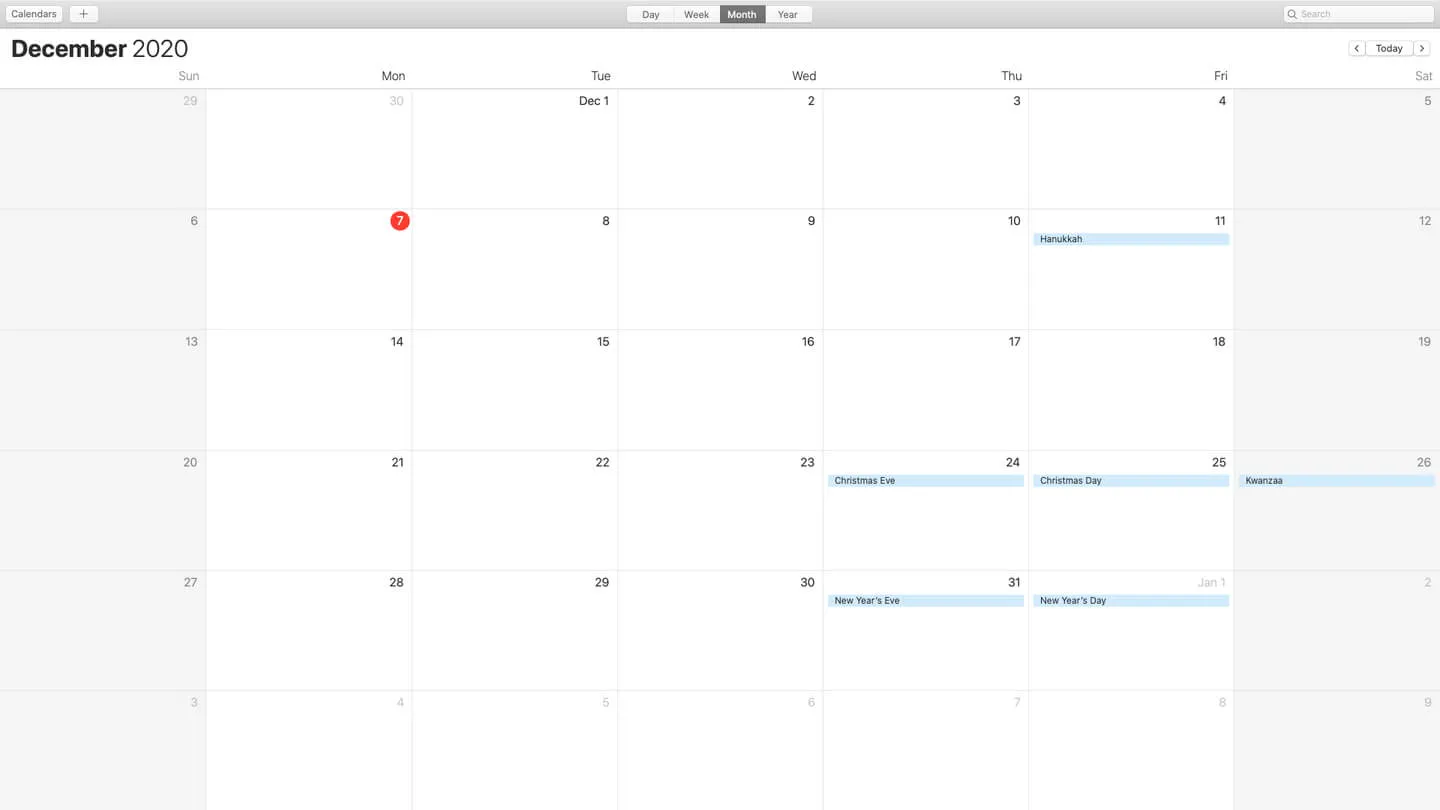
2. When Do You Plan To Leave On Your Trip?
The date you are aiming to leave on your trip is vitally important to your personal travel planning process.
Are you planning a trip way in advance? Or are you last minute planning? The subsequent steps will change focus depending on the answer to those questions.
For those planning a last minute spontaneous trip, you will need to double down and get to work.
Conversely, if you are planning a summer vacation that’s 6 months out, you can relax and take each of the plan a trip step slowly.
It is important to remember that people work more efficiently in different ways.
For us, Kristen works more efficiently when planning early and taking things at a gentle pace, whereas Mark works best under pressure with the clock ticking.
Timing Is Crucial
Consider the timing of your proposed trip.
You will have to account for high, shoulder or low season as well as weather conditions for the time of year you visit and finances will be impacted by how well you plan your leaving date.
Example : Your trip is shaping up to be a 3 week European adventure in Summer. You better believe it is going to cost you! Would you be better off planning to leave in Spring or Fall to suit your budget more appropriately?
If you plan to quit your job in 6 months and travel the world for a year, now is the time to get stuck into planning. A year is a long time and the world is a big place.
Leaving a trip like this until the last minute means you could risk missing out on once in a lifetime opportunities.
Working out the most effective time leave on your adventure gives you the framework to set achievable planning and financial goals .
Remind yourself of the 7 P’s of planning: Piss Poor Planning Promotes Piss Poor Performance.
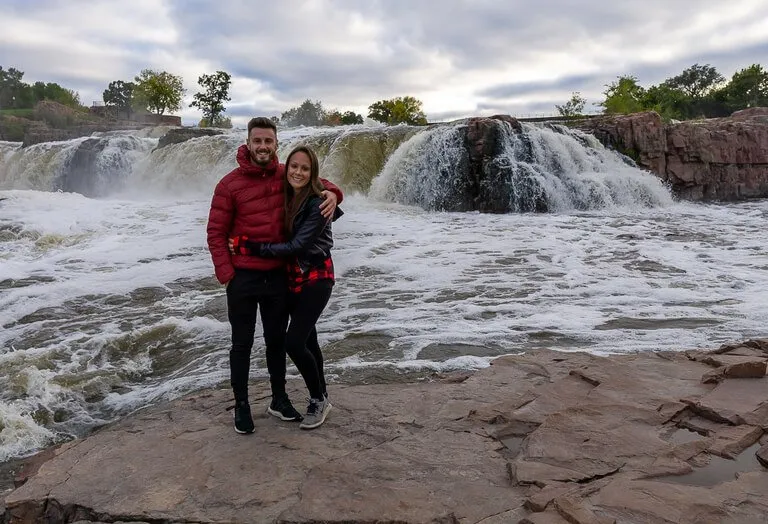
3. Who Do You Plan To Travel With?
Chances are high you already know exactly who you will travel with before you begin to plan a trip. Maybe you’re going on a family holiday or a romantic couples weekend getaway ?
In which case, your travel partners are nailed on. The same applies for us. We always travel as a couple which makes Step 3 obsolete when we plan a trip.
However, many travelers planning trips are undecided between exploring solo or with a friend.
Our world adventures have enabled us to meet hundreds of others traveling. Solo travelers and those traveling as couples or larger groups.
There are pros and cons to all types of travel, just like most things in life.
The important thing to understand for first time travelers who feel anxious about traveling solo is that you will meet people along the way. Even as a couple, you will meet dozens of other couples on longer trips, particularly in Asia and South America.
So, don’t be afraid to plan your dream trip if you don’t have anyone to travel with initially, you will make a ton of friends on the road.

4. What Shape Are Your Finances In?
Working out a rough travel budget is arguably the most important aspect of planning any trip. That remains true if you are leaving tomorrow or in a year.
Take a cautious approach rather than an overly optimistic approach. You will spend more money than you think, trust us on that one.
It’s better to have money left over than run out of cash a long way from home. We’ve seen it happen.
- How much money do you currently have saved up for your trip?
- How much money can you save between now and the date you plan to leave?
- Do you need to get a second job or a second income to bulk your budget out?
- Do you have any cash in reserve in case of emergency?
Before you start dreaming of your 2 week luxury beach vacation to the Maldives or 3 months backpacking through Australia and New Zealand, you need to be realistic about your budget.
Travel Smarter, Not Harder
A good rule of thumb is to consider yours destinations around your budget.
Instead, consider your budget and travel to a place where that same amount of money will allow you to have a much better experience.
See how much we spent in 1 month in Vietnam to use as a reference for travel costs.
If you are planning a short vacation, you will have much more control over finances. You know you’re going to get paid from your job again, so a splurge isn’t out of the question.
In contrast, long term travelers will constantly be checking finances. Once they leave for their trip – that digital bank balance value will decrease every single day until the end.
Travel Tip : When planning a trip around your budget, always always always leave some room for buffer in case of emergency. We’re all used to living to our means and it’s easy to plan down to the last penny but trust us, you never know when you might need a spare US$ 100.
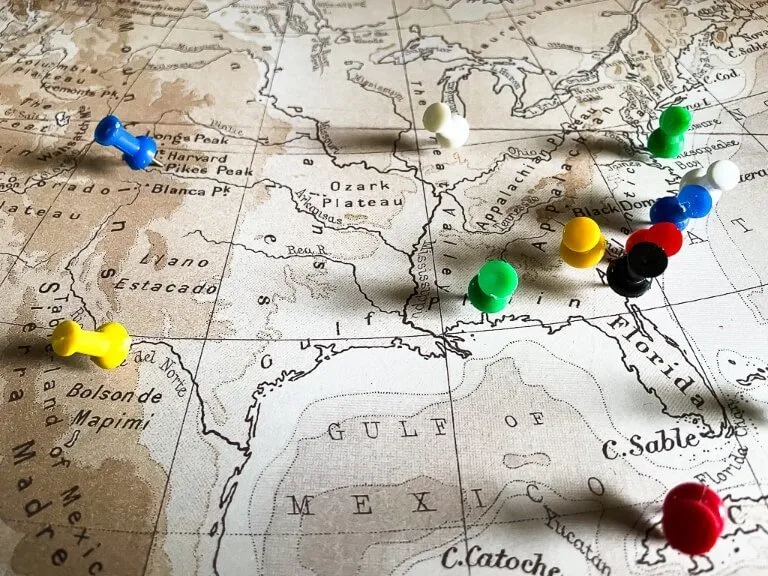
5. Where Do You Plan To Travel?
Now and only now, despite wanting nothing else but to start planning your travel itinerary. It is time to plan your travel destination and route.
You will thank us for leaving you hanging this long because now you have a firm grasp on your travel budget, whether you will be traveling alone or with a group, how long you can travel for and when you want to leave.
Here are some of our top travel inspiration suggestions :
- Grand Teton and Yellowstone National Parks in Wyoming, USA.
- Budapest is a wonderful European city break.
- New York State Parks like Letchworth and Buttermilk Falls are perfect day trips.
- The Atacama Desert in Chile is mind blowing.
- Los Angeles , San Francisco and San Diego are awesome cities to discover.
- Andalusia in Spain is a stunning region to explore.
- Pacific Coast Highway , Utah and South Dakota are epic road trips.
The beauty of leaving this step until you know your budget is having the ability to plan your vacation or itinerary with a clear understanding of which places are feasible and which places you will have to exclude based on price, distance, safety and so on.
Planning travel itineraries takes a lot of work. We find it to be our favorite and least favorite part of traveling – in equal measure! Excitement and frustration.
It is vital you consider public transport routes, airports, safety, hotel availability, time of year, activities on offer, food and so much more.
Choosing A Travel Route
A question we often get asked is: “How do you know where you want to go?”
We do something our ancestors have been doing for over 2000 years: Look at a map!
Seriously, buy a huge map and stick it on your wall. Study each continent and indicate places you would love to visit using pins or colored sticky notes.
If looking at maps doesn’t help, here are some excellent alternatives to find travel inspiration:
- Read the wide range of destinations we write about on our travel blog !
- Read other blogs too. There are hundreds of fantastic first hand resources on the internet written by people who have been to the places you want to visit.
- Change up your google searches to ‘the best place to travel in X year’ or ‘the most obscure travel destinations’.
- Be creative, look for specific events, festivals or concerts around the world.
Once you have a shortlist of dream destinations, fire up google maps and prepare to lose yourself for hours. Design mock travel itineraries lasting 10 days, 2 weeks, a month, 3 months or however long you plan to travel.

6. Why Is It So Hard To Save For Your Trip?
You’ve meticulously planned your next adventure. Now, you need to stump up the cash to pay for it.
Whether you are going on a one week trekking holiday, a one month live aboard scuba diving course or traveling through Africa and the Middle East for six months, you will need to save up enough money to pay for the pleasure.
You already worked out your finances and travel plans in steps 4 and 5, so you have an actionable target to reach. Is your departure date 3 months away? 6 months? A year?
However far ahead you plan to leave, you might need to put a savings process in place to make up the difference.
Saving for vacations or long term travel is HARD. Your excitement is at fever pitch but time seems to stand still. Days at work start to drag more and more the closer you get to the big day.
Be Disciplined
The key to financial success can be found in one simple word, Discipline .
It’s easy to start well with the best intentions but it’s equally as easy to lose focus. Put yourself on a strict no-spending regime if you don’t have the money in savings to pay for travel costs in advance.
Make judgement calls on every single expenditure – is it want or need? Do you want that thing or do you genuinely need it?
If it’s a want, don’t spend the money, save it. Be disciplined .
Once your bank account begins to swell, fight the temptation to ‘treat yourself’. If you think you won’t be tempted, think again.
That 80″ TV you wanted is only US$ 1,000 and you now have 10 of those saved for your trip – can you get by on US$ 9,000?
No you can’t! Put the TV back! Be disciplined .
Plan A Trip Section 1 Complete: Your Tentative Travel Plans Are In Place
You are officially one third of the way towards being travel ready.
There are more challenges to come but you’ve nailed down the hardest part of travel planning.
Narrowing down where to visit and formulating the perfect itinerary is by far the most difficult part of planning a trip for us.
The word perfect was used for a reason, we both have FOMO (fear of missing out) so it takes us an age to finalize our trips.
With the whole world as your travel option, deciding where to go and where not to go can be overwhelming.
Personally, we just take it one step at a time based on our budget and places on our travel bucket list. We systematically include and exclude places, activities and routes until we agree on a winning formula.
Do not feel disheartened when you think you’ve cracked your route and budget but for whatever reason it just doesn’t work out. Go back to the drawing board and start again fresh. You will end up with an even better itinerary.
Section 2: Take Action + Book
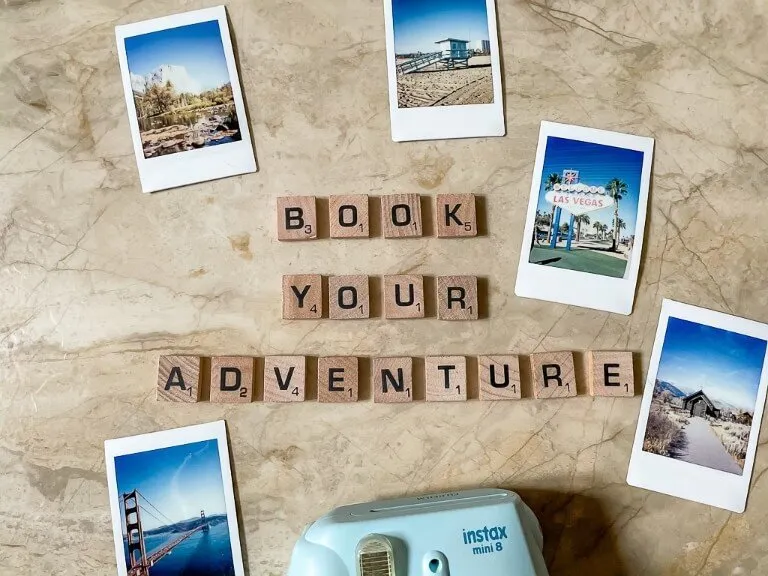
We can all daydream about vacations or backpacking the world for a year. Or imagine ourselves lounging on a beautiful powdery white sand beach in Thailand and hiking into the Grand Canyon .
But until you bite the bullet, until you commit by clicking the buy now button on flights and hotels, a dream is all it will be.
Once you take that giant leap, it becomes tangible.
How many times have you planned a travel route mentally and thought about how amazing it would be and all the things you would do on your trip only to snap back to reality in the office?
Be brave and courageous. Take the plunge and book the important elements of your travel plan. Does this sound like a good story?
“Well, I was going to book a life changing 3 month backpacking trip through South America, but didn’t bother in the end.” That sounds like missed opportunity to us!
Myths About Booking In Advance
Like many other things in life, travel planning gets easier with experience. You learn which aspects of the way you planned and booked your trip worked and which aspects caused problems or lost you money.
However, one thing even the most savvy or accomplished traveler doesn’t always get right is how much of the trip to book in advance.
Here’s the problem travelers face on every trip:
If you book in advance, you plan ahead, book all hotels, buses, trains, activities and flights on your trip.
But what happens? You have no flexibility. If you love a place, you can’t stay longer. If you hate a place, you can’t leave immediately.
And if you don’t book in advance, you plan nothing and have complete flexibility. But you spend all of your travel days booking the next place to stay that night or your flight the next day.
Last minute flights and hotels will have far fewer options and may have seriously inflated prices.
How To Successfully Book A Trip
Here are a few tips to help you book your next trip:
- Find the perfect balance between being organized and flexible.
- Book all of your major trans-continental long haul flights before you leave home.
- Book any hotel splurges you have identified.
- Book any bucket list activities (such as W Trek in Chile) in advance.
- Leave the rest of your trip open ended.
We meet travelers with binders full of confirmation documents who prefer to plan the entire trip down to the ground, even dinner reservations.
Then there are those who prefer to book nothing more than a one way flight and decide everything on the fly (pun intended).
There is no one size fits all best practice or answer to this relentless travel quandary. It depends entirely on your own preferred travel style.
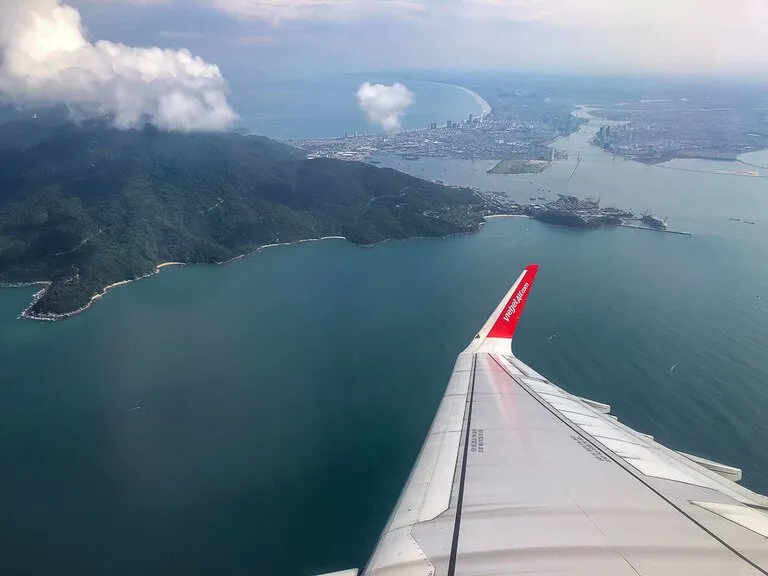
7. Book Your Major Flights To Seal The Deal
Now the real work can begin.
Booking your first flight is the single most exciting and nerve racking moment of travel planning. In one single moment of commitment, you turn your daydream into a reality.
There are numerous flight searching platforms and you can use any you prefer. We personally use – every time we fly and recommend to our friends and family: Skyscanner .
We’ve used each of the major flight search engines and we find Skyscanner to offer the easiest user experience, have the most flight options and consistently lowest prices.
But our favorite aspects of Skyscanner are having the ability (and flexibility) to search for flights by whole month and whole country.
Example: Let’s say you want to fly New York to London.
Instead of selecting an exact date with +/- 3 days (which is what most flight searches offer) you can select by whole month of May for example.
A flight calendar will show the prices of flights on every day that month and between all airports in New York / London.
Check flights with Skyscanner here and start searching for your next flight.
Avoid Flight Price Myths
Booking flights can go one of two ways:
- You prefer to search for a flight, find one at a price you feel is fair and book it.
- You are the type who prefers flight price roulette, playing the algorithm game.
But the thing is you can save money on flights if you put in some research and effort. That being said, there are a lot of myths and legends about booking flights.
Booking International flights on a Tuesday or domestic flights on a Sunday will save big money. Not necessarily true. Prices fluctuate many times a day, week and month.
Clearing cookies and searching incognito will save money. Unfortunately not, no evidence to support that.
Quick Tips On Booking Flights
Our number one tip for booking flights is to be flexible. That’s the way you will save big money.
Look at prices around the dates you want to fly using Skyscanner, you will see how drastically different they can be.
Book your long haul flights as far in advance as possible. The last thing you want is a mammoth cost on your flight home.
Keep an eye on prices 9 months in advance, 6 months 3 months in advance, 1 month in advance and last minute. Watch how much they fluctuate over time.
Research thoroughly, search regularly and build up patterns of prices.
Put flight alerts on specific flights of interest to you. You will receive notifications of changes.
If you see a flight you want and it’s cheap, book it! Don’t wait for it drop by US$ 5 because you’ll find it will go up by US$ 50 instead. Know the right time to pull the trigger.
Flight booking search engines are built on algorithms like everything else online. The key is not to outsmart them, just work them to your advantage.
READ MORE : How to book cheap flight when you travel

8. Book Ground Transport
Booking ground transport in advance depends on where in the world you are traveling, the timing of your trip, the length of your trip and how rigid and flexible you plan to travel.
Example : When we traveled 3 months in South America, we booked a 24 hour bus from Bariloche to El Chalten in Argentina before we left the UK. But we did not book any sleeper buses or trains in Vietnam in advance.
We visited Argentina in January, during Peak Season. Flights from Bariloche to El Calafate were expensive (and a bus to El Chalten is required) so we took the much cheaper bus.
The bus books up in advance and we wanted to guarantee seats so we booked in advance.
Conversely, we visited Northern and Central Vietnam in October and knew we would be able to jump on any bus or train we wanted. No need to sacrifice flexibility.
Most Cost Effective Transport Methods By Region
- Europe – Cheap budget flights with Ryanair, EasyJet etc between countries / Trains within countries.
- SE Asia – Cheap flights with Jetstar, VietJet, AirAsia, Scoot, LionAir, TigerAir etc between countries / Sleeper Trains & Buses within countries.
- South America – Flights hit and miss for price. We found Chile and Peru had cheaper flights than Argentina. Best way to get around is by Bus but be aware, some of them are LONG!
- North America – Road trip is the best way to explore. Buy a cheap second hand car or hire a car drive point A to B. Trains and domestic flights are expensive. Traveling by bus is a cheap option but not a great one.
The take home is to understand the region you plan to travel through.
How are public transport prices impacted by season? Variations in prices if booking in advance vs last minute?
Example : Let’s say you’re traveling Europe by train but not Interrailing. Booking trains in advance WILL save you money. Do not leave European train bookings until the last minute.
By researching and understanding these things, you can quite literally rescue your travel budget from total annihilation.
If you prefer to drive yourself around a new place to taking public transport, always check prices for hire cars with Rental Cars for most options and best value.

9. Book Accommodation
Booking accommodation can be both extremely rewarding and extremely frustrating.
Some travelers embrace the best deals hunt, whereas others despise losing time trawling through endless lists of hotel prices.
As with all other aspects of travel planning, the key is to find the right balance between how much time you invest and how much money you can save.
There are a limited amount of flights you can choose between, right?
It’s the opposite for accommodation, there are SO many options for where you will sleep at night, no matter where you travel.
If you let it, this process will overwhelm you within seconds. How do you choose between 1000 hotels? When do you stop searching for an even better deal?
The scenario of your trip will affect the benefits of booking hotels in advance.
Example : Beach vacations and resort hotel complexes can go either way. Sometimes you can pick up big money saving last minute deals. It’s a risk but it can pay off.
However, if you’re on a tight budget and backpacking for a month through Thailand in low or shoulder season, it would be worth turning up in person to negotiate a better deal.
Use Hotel Booking Search Engines
Something we find fascinating when we meet travelers on the road is the diversity of platforms everyone uses to book accommodation.
Some swear by Airbnb, others use Agoda or Hostelworld and a high proportion use Booking.com. Personally, we use Booking.com to book our hotels.
We have been using Booking for years and still to this day we are staggered by how many hotel owners pull faces at us or make comments like ‘wow, you guys must have that booking genius thing, this is the lowest price I’ve seen.
We do have Booking Genius Level 3 and you can have it too by simply creating a free account and booking your hotels with Booking.com .
The same applies to Hotels.com, Agoda, Airbnb, Priceline and many others. Find a hotel booking service you like, create an account and reap the loyalty benefits.
That’s not to say hotel search engines have the best prices period.
We ask certain hotels for a price directly and if it’s more than what we can see on our Booking.com app, we simply book a room on our app right at the check in desk.
Quick Tips For Booking Hotels
Similarly to booking ground transport at the trip planning stages, we only book certain hotels in advance before we travel.
Typically, we will book hotels as we go to allow total flexibility. However, there are three scenarios when we book hotels in advance:
- If we plan to visit a big city like London, New York City , Hong Kong or Dubai in shoulder or high season.
- When planning itineraries including rural N ational Park s with limited hotel options.
- Big splurges on a luxury hotel so our travel budget doesn’t take a huge mid-trip pounding.
When searching for hotels, always use filters and sorting to cut through the crap and display exactly what you are interested in.
Search engines by default will display hotels based on featured. So what is featured?
It is hotel search engines listing hotels in their own order, but we like to sort by user rating and review count.
If a hotel has 2,500 reviews and a guest review score of 8.7, we would add it to our shortlist.
Once we have enough hotels in a shortlist we look at their locations, nearby amenities, nearby major attractions and transport hubs etc.
READ MORE : How to book cheap hotels for travel
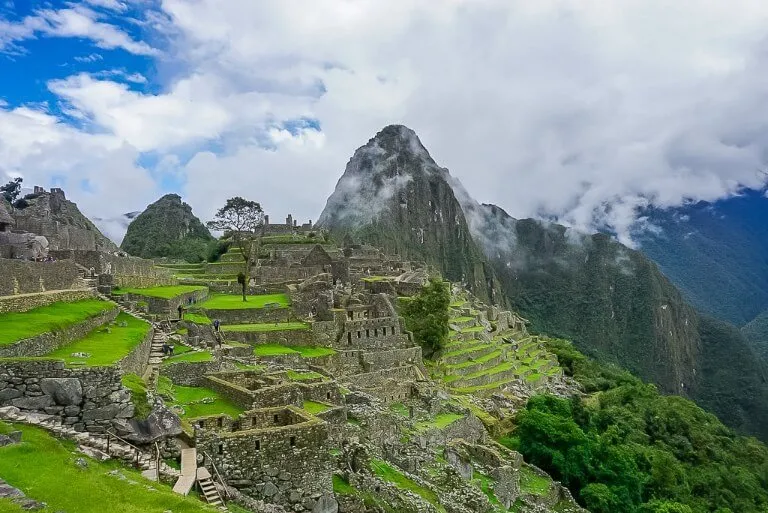
10. Book Bucket List Experiences
Your final bookings at this stage of planning your trip are reserved for any bucket list experiences.
You’ve planned a route through a country or continent, so you should know all of the bucket list places you will be visiting. However, unless you research thoroughly, there’s a small chance you might miss something.
Life is about learning from mistakes.
One of ours when traveling Europe was when we visited Interlaken and Grindelwald in Switzerland but we hadn’t researched things to do before hand.
So we didn’t know about the Jungfrau rack railway line through the Eiger to the top of Europe at 3,454m. Once we discovered it, we’d already spent our allocated budget which isn’t difficult in Switzerland.
Plan major activities ahead. Make a spreadsheet or a checklist, even book some ahead of time if you have to or prefer to plan your whole trip in advance.
The more planning you do in advance, the less you will miss on the road. There are times when you will have no choice but to plan months ahead.
A few examples are the W trek in Torres del Paine (Chile), Half Dome hike at Yosemite National Park (California) and hiking down the Narrows at Zion National Park (Utah).
Not planning ahead will result in missing something epic. If you don’t typically plan things like this in advance, now is the time to learn some new core skills.
Section 2 Complete: Major Bookings Are Made
You’re almost over the hill and it’s plain sailing from here. The hard work has paid off, now all that’s left is preparing and packing for the adventure that awaits you.
Booking flights, transport, hotels and activities is part of the travel planning experience.
Try to enjoy the process. If you feel overwhelmed at any point, step away for a few hours or days. That is a tried and tested method of successfully planning a trip.
There have been times where we’ve had to walk away from planning for a day or two.
Remember, you can book hotels anywhere at any time, you don’t always have to book your entire trip before you leave.
If there’s one particular leg of your journey where you can’t quite make transport work or there are no cheap hotels available, just go back a few steps and alter your route accordingly.
This is a common travel planning stumbling block.
It can be infuriating to have a route perfected, only for something not to work and find yourself back at the drawing board.
But consider this, would you rather be at home with this problem? Or in a foreign city with no idea where to go next, how to get there or where to sleep that night?
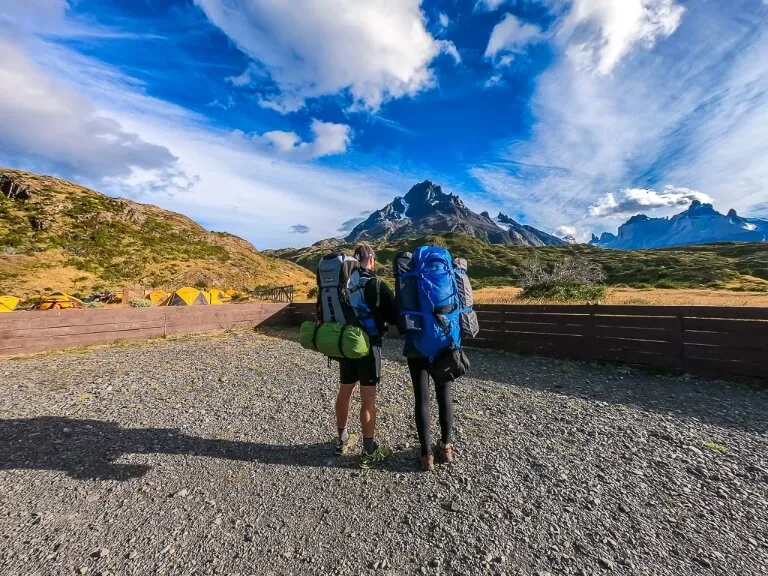
Section 3: Prepare And Pack
You’re on the home stretch. There are just a few important admin tasks to complete before you can finally say you are ready to leave on your trip.
Get stuck into these last few steps as soon as possible, tick the boxes, put your feet up and enjoy a nice cup of Yorkshire tea.
Section 3 of travel planning is about giving yourself the best return on your expenses, travel safety, insuring your property and packing the right gear for your trip.
It would be easy to switch off once you’ve secured your important bookings but you would be shooting yourself in the foot.
Instead, keep the ball rolling into this final section. Use the momentum to make the best choices possible as you complete your travel planning process.
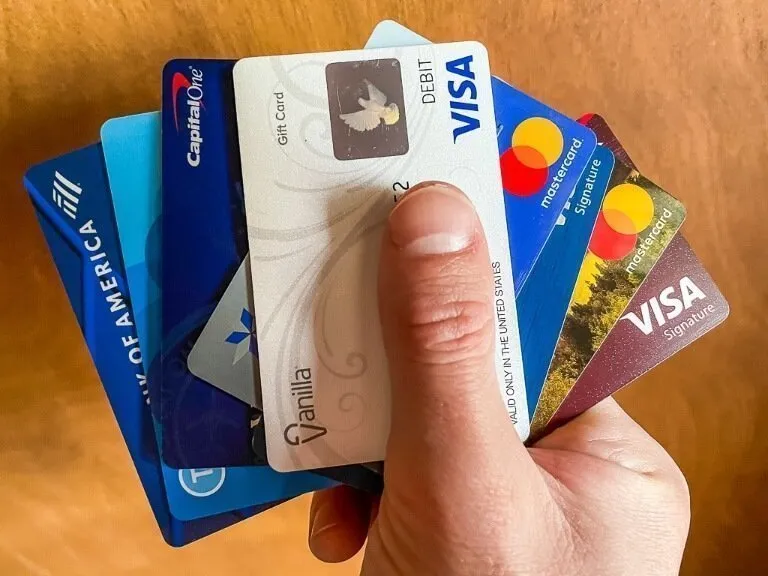

11. Travel Rewards Credit Cards
You might be from a country where paying with debit and credit cards is the norm. Heck, you probably even pay for things with your phone these days.
However, when you travel through certain regions, such as parts of South East Asia, you won’t always be able to pay for goods and services with your cards.
Cash is often king in developing countries or countries with few tourists.
Example : We spent a month traveling North/Central Vietnam and can count on 1 hand the amount of times we paid for anything using a credit card. In order to withdraw cash from ATM’s without incurring a fee, we used our travel rewards credit card.
So, aside from always carrying a handful of US dollars in cash as a safety net, here’s the best money saving advice for any trip you ever take abroad, limit the amount you use your debit card.
If you use your debit account, you can kiss goodbye to your travel budget. The local bank will charge you a fee and your bank at home will charge you a hefty fee. Double whammy. Not fun.
What To Do Before Your Trip
Sign up for a no foreign transaction fee on all withdrawals and purchases travel rewards credit card.
On longer trips you will be taking money out of ATM’s regularly. Local ATM withdrawals will yield better exchange rates than airport exchanges.
Always choose local currency when withdrawing money, not your home country currency.
Research the best travel rewards card before you leave on your trip. Residents of the US are fortunate because competition is fierce, which drives fantastic offers on travel credit cards.
At a minimum, you should be able to pick up a travel rewards credit card giving you 1.5% cash back on all purchases and withdrawals.
Some offer points instead of cash back, which can be saved and used to pay for a flight later in your trip. Look for any special points and bonuses for spending X amount of money in Y amount of time.
Choose the card that offers the best perks for your travel style.
Example : Bank A will give you 1,500 points bonus if you spend US$ 3,000 within 90 days. Those bonus points equal US$ 150 that you can put towards a flight.

12. Tell The Bank About Your Travel Plans
It would blow your mind if we told you the amount of people we meet traveling the world who have experienced blocked credit cards.
Blocked cards in turn lead to no money and expensive phone calls back home to unblock said cards.
The banks are doing it for your protection but when you’re stuck in the back of beyond and can’t pay for anything or withdraw money, you will be in trouble.
Example : You have a Bank of America checking account, a Capital One Venture travel rewards card and an American Express travel card, you need to tell every one of those banks what your rough travel plans are.
It doesn’t hurt to keep them updated as you travel because plans can change.
We will contact our banks each time we move to a new continent and give them a rough idea of the countries we intend to visit, plus an estimated duration. Remember the 7 P’s of planning.
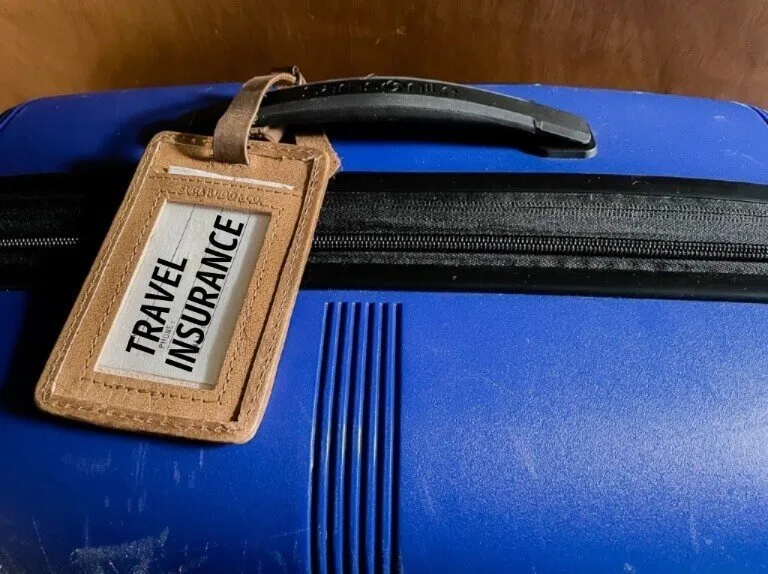
13. Get Travel Insurance
We’re not going to frighten you into buying travel insurance with gruesome tales. We’re simply going to say it is not worth the risk to travel without insurance.
You may be debating running the risk because insurance can be expensive.
We understand, it’s a bit of a blow when you think all your costs are nailed on the head and you see how much travel insurance is going to set you back.
But believe us, skipping it is not the smart move. Especially if you are backpacking for longer periods. Knock on wood, nothing serious has happened to us yet on the road.
No lost backpacks, no serious injuries, no muggings. But that could change at any moment, all it takes is being in the wrong place at the wrong time.
Travel Insurance Is Worth The Peace Of Mind
Could you imagine the cost involved in being repatriated to America with a serious illness or injury sustained on the other side of the planet? No insurance would leave you in financial despair for years.
Example : You’ve just bought a brand new Sony A7R IV mirrorless camera for US$ 3,000 for your trip and you lose it or have it stolen on your first day traveling. You don’t have insurance. Imagine the pain!
There are plenty of travel insurance providers, such as Allianz, AIG and Travelex but right now we use and highly recommend World Nomads.
The company was created by travelers for travelers and they will tailor an insurance plan to suit your trip. You can get a free quote and choose between Standard or Explorer plans.
Be sure to do your own research but use World Nomads as your reference. See if you can get better coverage.
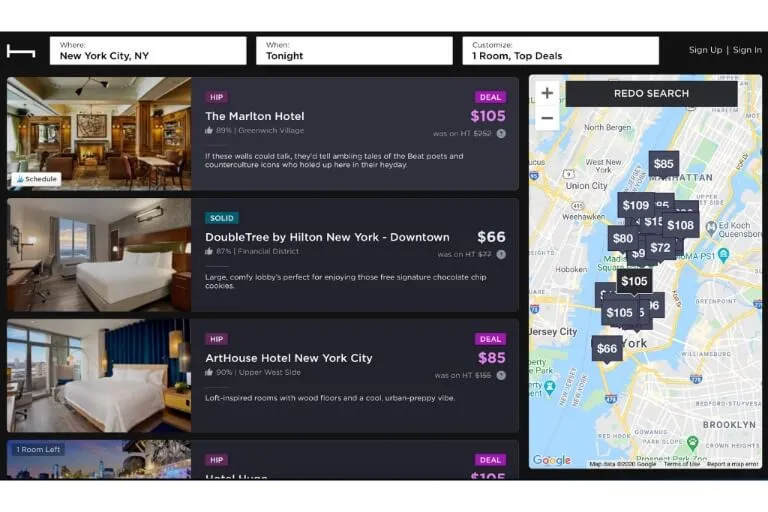
14. Check For Last Minute Travel Bargains
This is where we hope you don’t find an amazing last minute deal that’s US$ 200 cheaper than what you booked back in section 2.
Last minute deals are a gamble. Sometimes they pay off but mostly, they don’t. Never leave any of your major flight routes or bucket list activities until the last minute.
It’s always worth keeping an eye on hotel and flight prices, even for things you already booked that may include free cancellations or free changes to the booking.
If you can pick up the odd money saving last minute bargain, great. But don’t leave your entire trip to chance.
In the days leading up to your departure, check prices on (non-major) flights, trains, hotels and tours that you are interested in taking.
There are always flash sales on things, it’s often a case of being fortunate enough to stumble across them at the right time.
Here’s something important to remember if you started planning your trip months ago. High season might have moved into shoulder season or low season in a place you want to go.
But be aware that the opposite may also occur.
You could have planned on last minute deals because when you were researching the prices looked amazing, only to have unwittingly transitioned into peak season for the place you are visiting.
Last minute deals are going to cost you and your options will be greatly diminished in peak season.
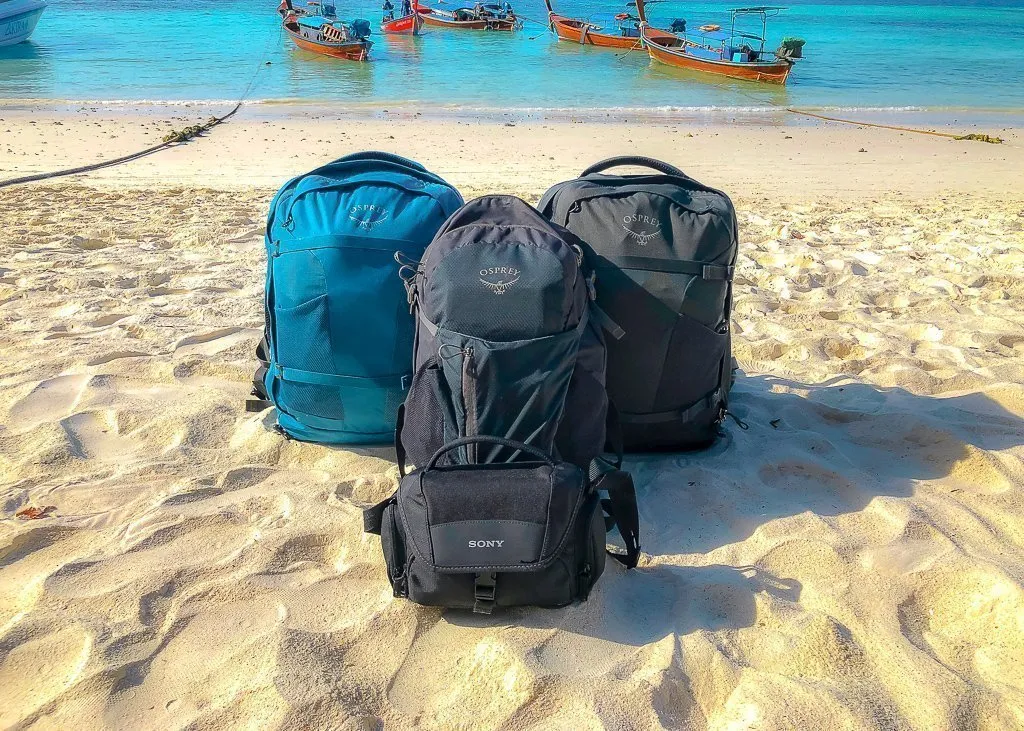
15. Pack Yours Bags It’s Time To Leave
Your travel plans are in place, you’ve booked the important things and prepared efficiently. All you need to do now is pick the perfect backpack and fill it with the right gear for your destination.
If you think you can handle traveling with just 40L of space which means you can carry on to flights, don’t miss this review of our top rated travel backpack, Osprey Farpoint 40 .
For those who will carry a larger main pack and need a second smaller backpack to carry on, read our review of the innovative and versatile backpack perfect for travel photographers: Peak Design Everyday Backpack .
We won’t go into a huge amount of detail with this planning step. Instead, you can find all you need to know about packing for your trips in our detailed Travel Packing resource.
Here are a few addition packing tips for your trip:
- Be sure to pack according to where you’re going. If there are varying climates on your itinerary, pack for warm and cold weather conditions, even if that means taking a bigger backpack.
- Pack carefully, make sure every single item is fit for multi-purpose use. Do not pack fancy shirts and jeans if you will only use them once, you will end up throwing them out half way through your trip.
- We all have our own dress styles and preferences but our best advice for packing is to take plenty of comfortable gear.
Just remember, the most successful travel planners are the ones who can accept when they need to take a few steps back in order to take many steps forward.
More Travel Resources
- E-Books – Shop our travel guidebooks
- Packing List – The ultimate travel packing list
- Gifts – The best gifts for a traveler
Want more travel content? Head to our Travel Blog to discover new destinations around the world.
We hope these 15 steps help you plan the perfect trip!
Please let us know if you have any questions about this trip planning guide in the comments below.
Happy Travels ,
Mark and Kristen
Enjoy This Trip Planning Guide? Pin It For Later!
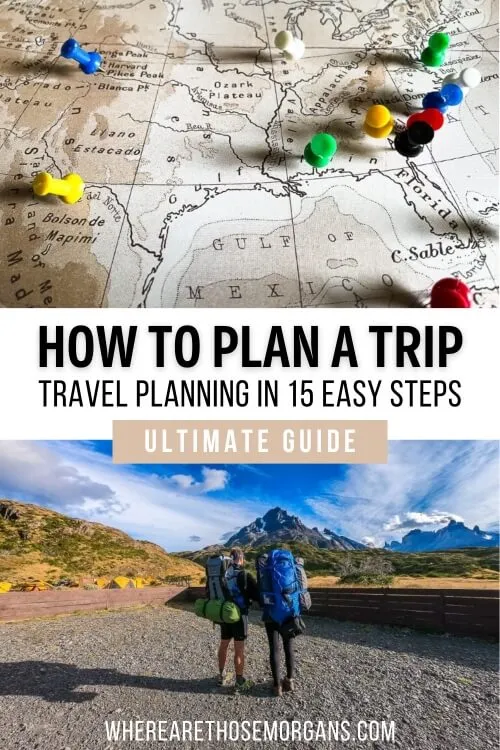
Note : This article contains affiliate links. When you make a purchase using one of these affiliate links, we may earn a small commission at no extra cost to you.
All Rights Reserved © Where Are Those Morgans, LLC. Republishing this article and/or any of its contents (text, photography, maps, graphics, etc.) in whole or in part is strictly prohibited.
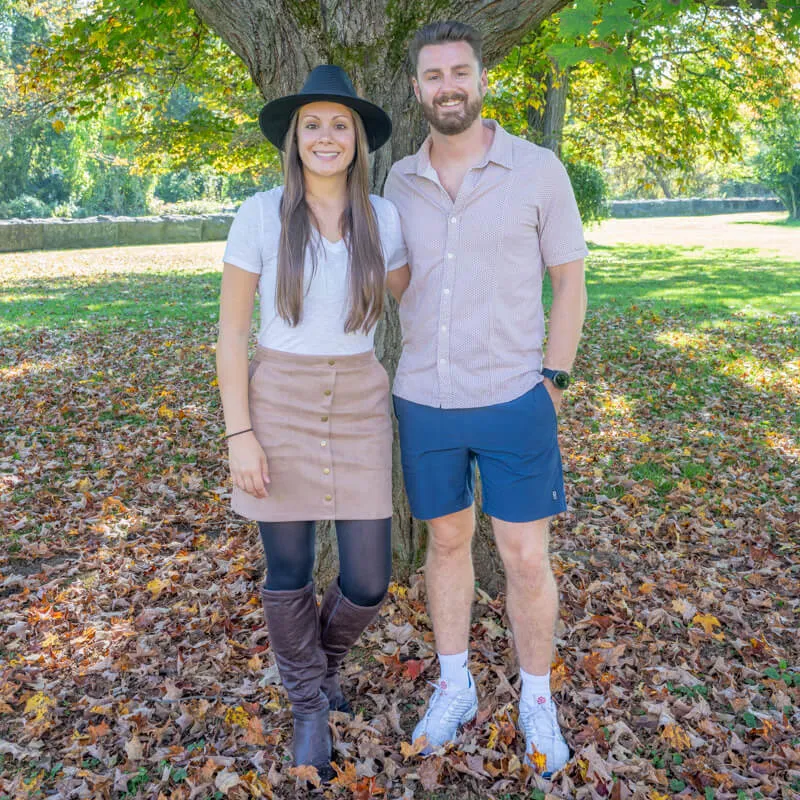
Mark and Kristen Morgan are travel, hiking and photography experts. Over the last 6 years traveling full time, they have explored more than 40 countries and 30 US states.
Where Are Those Morgans has been featured in USA Today, Gestalten, Get Your Guide, CityPASS and Condé Nast Traveler along with various other publications. Read more about us .
Leave a Comment Cancel reply
Subscribe to our newsletter
Get the latest in travel straight to your inbox
Click here to subscribe

Travel Planning – How to Plan a Perfect Trip

Are you about to plan a trip? This can seem like a challenging and overwhelming task.
Maybe you don’t know where to start, or maybe you wonder how proper travel planning can make the most of your trip.
Whatever the case may be, planning a trip doesn’t have to be difficult at all !
Traveling has been an important part of my life for as long as I can remember. From planning short weekend getaways to trips to remote destinations that lasted many months.
I love travel planning and the anticipation of going somewhere new.
In this article I want to help you with your travel planning. No matter where you are going, who with, or for how long, this guide will share the tips I use when I plan a trip.
How to Plan a Trip
1. choose your destination.

Logically, this is the first part of travel planning. It all starts here.
If you haven’t decided on the exact destination(s) of your next trip, let’s plan this out first.
Ask yourself: what kind of trip do I want to go on? Do I want to go to a sunny destination? Discover new cultures? Backpack? Stay in luxury hotels? Travel on a budget? Learn a new skill? How long do I want to travel?
Take a look at your finances and decide how much money you want to spend on this trip. Once you know your budget and how many days you have, research the average cost per day in your favorite destinations.
When you’ve got all of that clear, it will be a lot easier to choose your destination.
- Bucket List Destinations for a Once in a Lifetime Trip
- The Best Caribbean Islands to Visit & Why
- The Most Beautiful Cities in the USA
2. Find the Best Flights and Dates

When we’re planning a trip, we want to find the best deals, right?
You’ve probably heard hundreds of different tips and tricks, but the ones that really work are: traveling off-season, being flexible with your dates, and doing a lot of research.
I’ve found the best and cheapest flights on Skyscanner.com . You can search for multiple destinations at the same time or set your destination to everywhere (this might come in handy if you haven’t made up your mind yet), you’ll then get an overview of all the cheap flights around the world.
If you do know your destination but your dates are flexible, select “whole month” and then “cheapest month” to check the best time to travel.
Of course most of the time when you plan a trip you both know your destination and your exact dates. Then as well Skyscanner is my go-to website because it compares prices for almost all airlines anywhere in the world.
I go into much more detail about finding flights in this article: How to Find the Cheapest and Best Flights .
Traveling by Bus, Train, or Car Instead?
If you’re going on a road trip with your own car, please check your car before leaving. The last thing you want is to end up with car trouble during your trip!
And if you decide to plan a trip by train or bus, make sure you book your tickets early. Depending on where you are going, I’ve seen train and bus tickets for longer distances book out weeks or even months in advance.
It might also be worth signing up for the newsletter of the train or bus company you plan to use, as they will often email special discounts.
3. Choose Suitable Accommodation

So you’ve chosen your destination and you’ve found a good flight or other modes of transport. What’s next? Booking a place to stay.
Whether you’re planning to go on a short or a long trip, you’ll need to choose suitable accommodation, at least for the first few nights.
A few questions to ask yourself here:
- Do you prefer to stay in a hotel or would you rather have your own kitchen and more space?
- Are you on a limited budget or are you looking for some luxury for this trip?
- Is a good location the most important or is a unique or beautiful property more important for this trip?
Once you know what type of accommodation you’d like to book it’s time to search the web again.
These are my go-to websites whenever I’m looking for accommodation:
- Booking.com . This is the first place I look for hotels, anywhere in the world. And these days they also offer apartments and houses for rent, plus a number of hostels and smaller guesthouses.
- Hotels.com . Although Booking.com is my go-to website, I often use Hotels.com to compare their options. Sometimes they have a good deal or offer a few different hotels.
- Airbnb and VRBO . If you know you want to rent an apartment, house, or just a room, then these websites are the best option. And if you are looking for a unique place to stay, a treehouse or a stay on a boat for example, these websites can offer some great options.
- Hostelworld . If you are traveling on a budget or just like the social aspect of hostels, Hostelworld is the best website to find a hostel anywhere in the world.
- Pros & Cons of Staying in a Hostel
- Important Things to Look For When Booking a Hotel
- Cool Hotels in Amsterdam
- Where to Stay in Valencia, Spain
- The Best Hotels in St Maarten, Caribbean
4. Find Out How to Get to Your Accommodation

Some airports offer great public transport, others do not.
And even if they do, public transport might not take you anywhere close to the place you are staying.
After a flight, while lugging around your bag or suitcase, the last thing you want is having to figure out how to get to your destination.
So, don’t forget to make this part of your travel planning!
Find out how exactly you will get to your accommodation.
Check Google Maps first. In most places Google Maps will show you the different ways you can travel from the airport.
Second, ask your hotel/hostel/Airbnb what modes of transport they recommend and if they perhaps offer any transportation themselves.
It’s a small thing, but knowing how to get to your accommodation will make the start of your trip a lot more stress-free.
Tip: if you plan to rent a car, book it online long before you arrive. Prices often go up close to the travel date and if you wait too long there might not be any cars available anymore.
5. Explore Your Transportation Options

How will you get around during your trip?
It’s nice to know what your options are before you arrive.
You could research the following things:
- Is there good public transportation? If so, what’s the best option, and how does it work?
- Is it possible to walk most places or rent a bicycle? More and more cities have bike share systems these days.
- Would it be better to rent a car and can you do so online?
- Can you easily find a taxi or Uber? Some countries have a local version of it – for example, when traveling to Spain , Cabify and Blablacar are popular options.
Google Maps is a good tool to figure out what’s available at your chosen destination. And a simple Google search for ‘how to get around in [your destination]’ will also generally answer all your questions.
If you’re traveling in Asia, 12go.asia is the best website to find out how to get around and book bus, train, and ferry tickets, plus some flights.
Also Read: Tips for Driving Abroad for the First Time
6. Plan Your Activities

Now that you’ve planned the logistics of your trip, it’s time for some fun!
But where do you start? What are the best things to do?
If you want to plan and book tours and activities, I’d recommend you to use the following websites, they’re all really useful:
- Get Your Guide . This is generally the first website I check for activities in any place I visit because of their wide offer.
- Viator . I find Viator slightly better in the USA so if I travel in the US I check Viator before Get Your Guide. But, Viator also offers activities all over the world.
- Klook . Klook is expanding quickly. I used them a lot for activities in Asia, and they would still be my first choice there. But these days they also offer activities in many other parts of the world so it might be worth having a look no matter where you travel to. And in some places they offer nice hotel deals as well.
7. Find Places to Eat & Drink

Unless you’ve booked an all-inclusive stay you’ll have to find places to eat.
And if you’re anything like me, trying local food, local restaurants and popular cafés is one of the things that makes traveling great.
To find out about local favorites I love asking my Airbnb host or the hotel staff for their tips.
But reviews on Google Maps are also very helpful. And before I travel I often read other blogs about the best places to eat, hidden gems, and, a personal favorite when I travel to cities, nice rooftop bars with views of the city.
- The Best Rooftop Bars in San Diego, California
- The Best Rooftop Bars in Medellin, Colombia
- Paella Restaurants in Valencia for an Authentic Paella Experience
- Where to Eat in Vilnius, Lithuania
- The Best Cafes to Work From in Amsterdam
8. Get Travel Insurance

This is definitely one of the least fun aspects of travel planning, but please don’t skip it.
Of course we’re gonna assume nothing will go wrong, but it does happen. I’ve lost my luggage, had my laptop stolen and even ended up in an Indonesian hospital with dengue fever .
Believe me, when anything like that happens you’ll be happy you have travel insurance!
I’ve written a separate article about what to look for in travel insurance , because it depends on how you travel, where you are going to and even where you are coming from.
9. Find Out if You Need a Visa & Check Travel Advice

Do you need a visa to travel to your destination?
Depending on your passport, there are many countries that will allow you to visit without a visa. But, not all.
If you aren’t sure whether or not you need a visa, check it directly with the embassy in your home country . And do so long before you travel , because if you do need to apply for a visa it might take time.
An embarrassing personal story about that: a few weeks ago I traveled to Canada . I don’t know why, but I just assumed I could fly there on a European passport without a visa. It wasn’t until I was checking in for my flight online, 24 hours before the flight, that I found out I did need a visa! Thankfully Canada’s visa process is very quick, but that was stressful!
Apart from checking if you need a visa, I’d also recommend you visit your government’s website for more information about the country you are visiting. This would be information on security, local laws, natural disasters, mandatory and recommended vaccinations, and how to find help once you’re abroad.
Keep in mind that if your government gives out negative travel advice, your travel insurance might not cover you.
- Things to Know Before Traveling to Europe as an American
- Things to Know Before Traveling to New Zealand
- 12 Things to Know Before Traveling to Colombia
- Important Travel Tips for Mexico
10. Make Sure Your Passport Is Valid

Sometimes we’ve been so busy planning our trip and focusing on other things, that we totally forget to check our passports. If you’re traveling abroad, do double-check if your passport is still valid!
And, more annoyingly, some countries want your passport to be valid for at least another six months. If your passport isn’t then make sure this won’t cause issues when entering the country you are visiting.
11. Decide What to Pack

This can be a challenge in itself, don’t we all know it?
Luckily, there are lots of useful packing lists for different destinations online. Although I hardly ever stick to everything these packing lists suggest, they are a great help. Simply Googling ”what to pack for [your destination or type of trip]” should give you plenty of good results.
Tip: whether you travel with a suitcase or a backpack, use travel cubes ! I’ve only recently started using them and they’ve made it SO MUCH easier to organize things and to keep them organized during the trip.
And remember: don’t pack too much! You always need less than you think.
Also Read: Essential Things to Pack for a Trip to Europe
12. Enjoy and Leave Some Room to Get Lost

As much as I believe planning a trip is important, a big part of the fun is leaving some room to get lost.
If you plan every minute of your trip you risk trying to fit in too much and will end up stressed and annoyed when things don’t go according to plan.
Relax, take in your surroundings, enjoy spontaneous encounters, and dive into the unknown!
Travel Planning – Conclusions
Travel planning doesn’t have to be difficult, boring, or challenging – in fact, it’s all about the joy of anticipation.
I hope this guide helped you find ease in planning your perfect trip. And wherever your next trip is taking you, have a great time!
- 5 Practical Tips to Make Travel Planning Easier
- Things to Do Before Traveling – Checklist of Things to Do Before Any Trip
- Tips for Traveling Alone – Planning a Solo Trip
- How to Stay Safe While Traveling
- How to Meet People While Traveling
- How to Take Good Travel Photos
- The Benefits of Traveling With Family
Like this article about how to plan a trip? Pin it!

This article about travel planning contains affiliate links. I may receive a commission for purchases made through these links, at no additional cost to you. As an Amazon Associate I earn from qualifying purchases.
Leave a Comment Cancel reply
Contact: [email protected]
Created by Mar y San Design
- Credit cards
- View all credit cards
- Banking guide
- Loans guide
- Insurance guide
- Personal finance
- View all personal finance
- Small business
- Small business guide
- View all taxes
You’re our first priority. Every time.
We believe everyone should be able to make financial decisions with confidence. And while our site doesn’t feature every company or financial product available on the market, we’re proud that the guidance we offer, the information we provide and the tools we create are objective, independent, straightforward — and free.
So how do we make money? Our partners compensate us. This may influence which products we review and write about (and where those products appear on the site), but it in no way affects our recommendations or advice, which are grounded in thousands of hours of research. Our partners cannot pay us to guarantee favorable reviews of their products or services. Here is a list of our partners .
How to Plan a Trip

Many or all of the products featured here are from our partners who compensate us. This influences which products we write about and where and how the product appears on a page. However, this does not influence our evaluations. Our opinions are our own. Here is a list of our partners and here's how we make money .
Have you avoided traveling during the pandemic? Travelers who’ve stuck close to home for the past two years are now looking to resume their wandering ways — maybe you are too.
But where to begin? Perhaps you haven’t planned a trip in a while and need a refresher. Or maybe you just got a new passport and don’t know where to start. We’re here to offer some helpful advice on how to plan your next trip, from choosing dates and accommodations to earning rewards points toward your next big vacation .
Be flexible with your destination and travel dates
Many want to travel to a specific place, and there’s nothing wrong with that. Japan in March, Greece in August, and Turks and Caicos in December all sound lovely, but be aware that high-demand destinations come with a high price tag, especially if you have specific travel dates in mind.
We’re not saying to throw a dart at a map to choose your next vacation, but we do recommend being open to a variety of destinations. Let a fare deal guide your travels.
» Learn more: How to shop for flights
For example, summer is a popular time to visit Europe. However, the autumn and winter months are when you’ll find some of the best flight deals to the continent. It’s also when accommodations are more affordable. So, take the opportunity to explore the world by following the price instead of the destination.
Additionally, be flexible with travel dates. Yes, a nine-day trip can help you include weekends and use less paid time off, but often flights cost more when your dates are nonnegotiable. We recommend being open to flying midweek to take advantage of the lowest fares.
If you want to redeem frequent flyer miles for an award flight, follow a similar strategy but book as soon as you find dates with low-level redemption rates. They can disappear quickly if others are shopping for flights using miles too.
» Learn more: Plan your next redemption with our airline points tool
Research what to do at your destination
If you’re visiting for the first time and are unfamiliar with your destination, it might be difficult to decide what to do once you get there. Cappadocia, a region in Turkey, is famous for hot air balloon rides. Australia’s Great Barrier Reef is known for some of the best scuba diving. Finland offers reindeer safaris.
Unless someone you know has been to these places and shared details about their trip, you wouldn’t know this information without first doing some research.
So, if you’ve already booked your flights and know how long you’ll be at your destination, it’s time to learn more about the place. For example, if you have two weeks and are flying to Istanbul, search online for “two-week Turkey itinerary” and read through several travel blogs for ideas.
You’ll likely find out about the relaxing hammams in Istanbul, the magical hot air balloon rides in Cappadocia, the ruins in the ancient city of Ephesus and the beautiful beach towns of Bodrum Peninsula. Put together an itinerary based on your interests and decide how many nights you want to spend in each city.
» Learn more: How to find cheap things to do in any city
Book accommodations
Unless you’re going on a short trip to one city, book your hotels after you create an itinerary. For a multi-city trip, decide how many nights you want to stay in each place and book your accommodations accordingly.
If you have hotel loyalty points , look up which hotel chains are present in each location and determine whether a redemption offers good value or if it’s better to pay cash instead.
» Learn more: The most valuable hotel rewards programs this year
If you’d rather stay in a boutique hotel or a guesthouse, look up your options on a site such as Booking.com. The website is a travel agency for lodging, where you can find anything from hostels to five-star hotels. If you sign up for its loyalty program and reserve many stays through the site, you can get discounts on hotel bookings, complimentary breakfast and upgrades at participating properties.
Learn how to get around in your destination
If you’re going on a road trip across the United States, this doesn’t apply to you as your choice of transportation has already been decided.
However, if you’re headed abroad and have multiple cities on the agenda, learn how to best travel around the country. For example, train travel is well-established in Germany, and you shouldn’t have problems traveling between Frankfurt, Stuttgart and Munich. However, visiting the Greek islands requires either flying or taking a ferry.
Rome2rio is a helpful website for planning transport in any geographical location. Enter two cities and find out the best ways to travel between them, including by bus, train and rideshare.
Open a travel rewards card
Signing up for a travel rewards card before a trip is a great idea. You can pay for everything with one card and meet the minimum-spending requirement faster than you would at home.
We recommend applying for a card that earns bonus rewards on travel and dining. For example, the American Express® Green Card earns 3 points per dollar spent on travel, transit and at restaurants. Use it to pay for lodging, public transport and dining out and earn triple points on most of the spending you do while traveling. Terms apply.
The Citi Premier® Card earns 3 points per dollar on air travel and hotels, at restaurants and in supermarkets, so again, many relevant bonus categories are covered. If you book a hotel totaling at least $500 through the Citi ThankYou Rewards portal and use the Citi Premier® Card to pay for it, you’ll receive a $100 credit back, once per calendar year.
The Chase Sapphire Preferred® Card is another great card to use on a trip and earn bonus points. With this card, you’ll earn 3 points per dollar on dining and 2 points per dollar on travel. You can also get an annual $50 credit when booking a hotel through Chase's travel portal.
» Learn more: The best travel card welcome bonuses right now
Set up lounge access
Many premium travel cards offer airport lounge access. After you book your flights, find out which airports have lounges and how many guests you can bring. Plan your lounge visits based on your layovers.
For example, the Chase Sapphire Reserve® and the Capital One Venture X Rewards Credit Card come with Priority Pass Select membership that includes restaurant credits (though the Capital One Venture X Rewards Credit Card will lose its restaurant benefit Jan. 1, 2023). You have to enroll in the benefit prior to traveling to get your membership activated before your trip.
If you hold The Platinum Card® from American Express , you have many lounge options. Cardmembers receive access to the following lounges:
Delta Sky Club (when flying Delta Air Lines).
Escape Lounge.
Lufthansa Business Lounge (when flying any class with Austrian Airlines, Lufthansa or Swiss International Air Lines).
Lufthansa Senator Lounge (when flying business class with Austrian Airlines, Lufthansa or Swiss International Air Lines).
Plaza Premium.
Priority Pass (no restaurant credit). Enrollment required.
The Centurion Lounge.
Terms apply.
Buy travel insurance
Although many travel credit cards come with built-in travel protection benefits, such as trip delay, baggage loss and auto rental collision damage waiver, you'll get more protection and higher coverage limits if you buy a separate travel insurance plan.
To compare rates, you can use a travel insurance aggregator, such as Squaremouth (a NerdWallet partner), that helps travelers find plans from multiple insurance providers. Enter your trip parameters and some personal details to find the right coverage for you.
When you’re ready to plan a trip
Planning a trip can be intimidating, but putting all the puzzle pieces together to create a beautiful travel picture feels great. Be open to nontraditional destinations and offseason travel dates to get the best deals. Become familiar with your credit card’s perks, or get another card for travel spending while on vacation. Finally, buy a travel insurance policy and have fun.
All information about the American Express® Green Card has been collected independently by NerdWallet. The American Express® Green Card is no longer available through NerdWallet. To view rates and fees of The Platinum Card® from American Express , see this page .
How to maximize your rewards
You want a travel credit card that prioritizes what’s important to you. Here are our picks for the best travel credit cards of 2024 , including those best for:
Flexibility, point transfers and a large bonus: Chase Sapphire Preferred® Card
No annual fee: Bank of America® Travel Rewards credit card
Flat-rate travel rewards: Capital One Venture Rewards Credit Card
Bonus travel rewards and high-end perks: Chase Sapphire Reserve®
Luxury perks: The Platinum Card® from American Express
Business travelers: Ink Business Preferred® Credit Card

on Chase's website
1x-5x 5x on travel purchased through Chase Travel℠, 3x on dining, select streaming services and online groceries, 2x on all other travel purchases, 1x on all other purchases.
60,000 Earn 60,000 bonus points after you spend $4,000 on purchases in the first 3 months from account opening. That's $750 when you redeem through Chase Travel℠.

1.5%-6.5% Enjoy 6.5% cash back on travel purchased through Chase Travel; 4.5% cash back on drugstore purchases and dining at restaurants, including takeout and eligible delivery service, and 3% on all other purchases (on up to $20,000 spent in the first year). After your first year or $20,000 spent, enjoy 5% cash back on travel purchased through Chase Travel, 3% cash back on drugstore purchases and dining at restaurants, including takeout and eligible delivery service, and unlimited 1.5% cash back on all other purchases.
$300 Earn an additional 1.5% cash back on everything you buy (on up to $20,000 spent in the first year) - worth up to $300 cash back!

on Capital One's website
2x-5x Earn unlimited 2X miles on every purchase, every day. Earn 5X miles on hotels and rental cars booked through Capital One Travel, where you'll get Capital One's best prices on thousands of trip options.
75,000 Enjoy a one-time bonus of 75,000 miles once you spend $4,000 on purchases within 3 months from account opening, equal to $750 in travel.

There's an easier way to plan and organize your trips—here's how
May 14, 2019
[[read-time]] min read

Travel planning is complicated. The number of tools and amount of information you need to sift through when deciding where to go, where to stay and what flight to take can be time consuming and overwhelming. That’s why today, we’re simplifying the way we help travelers plan trips with Google across devices.
When you’re planning a trip—whether you’re on desktop or mobile—we want to help you find the information you need, fast. Last year , we simplified trip planning by making navigation between Google Flights, Hotels, and Trips easier on smartphones. We’re now rolling this out on desktop as well. You can either go to google.com/travel or search for something like “hotels in Tokyo” or “Vancouver” to find travel information from a variety of sources in one place.
As you plan a trip, your research and reservations will be organized for you in Trips. As we continue to evolve Google Trips, we’re making this information more accessible at google.com/travel, and in Google Search and Google Maps. We’re also adding a few new features to make planning and organizing your trips easier.
One place for all of your trip details
Last year , we started adding your trip reservations for things like hotels and flights to a trip timeline for your upcoming trips, when you’re signed into your Google account and you’ve received a confirmation in Gmail. When you go to google.com/travel, you can now make edits directly to your trips timeline, and in a few weeks you’ll be able to manually add new reservations as well.
Whether you’re packing your bags or finalizing your travel dates, the weather is an important part of every trip. You’ll now see the weather for any upcoming or potential trips at google.com/travel—so you can make sure you’re prepared, rain or shine.
Keep track of research and keep planning
It often takes days or weeks to plan a trip. When you need to pick up planning again, we’ll keep track of your trip research across Google. Recent searches, saved places and flights you’re tracking are added automatically to your trips when you’re signed into your Google Account. Soon, we’ll add viewed things to do and saved and viewed hotels to your trips. When you want to continue planning, all of your research will be waiting for you at google.com/travel. If you don’t want to see private results, you can opt out by adjusting your results and web & app activity settings.
When you’re ready to continue researching other parts of your trip, scroll down to see travel articles and find out more about a destination like suggested day plans, popular restaurants around your hotel and events happening during your dates.
Continue planning on-the-go
When you’re on-the-go or visiting a new place, we’ll do more to highlight things to do, restaurants and more with Google Maps. For instance, last year we made it easier to find the best places to see and things to do when using Google Maps to explore a new place. Now, we’ll also help you get the lay of the land when you’re traveling by pointing out popular neighborhoods nearby and what they’re known for.
And in the next few months, your trips—including reservations for things like hotels and restaurants—will be accessible in Google Maps, too.
Our goal is to simplify trip planning by helping you quickly find the most useful information and pick up where you left off on any device. We’ll continue to make planning and taking trips easier with Google Maps, Google Search and google.com/travel —so you can get out and enjoy the world.
Related stories

3 ways to find a great deal with Google Flights
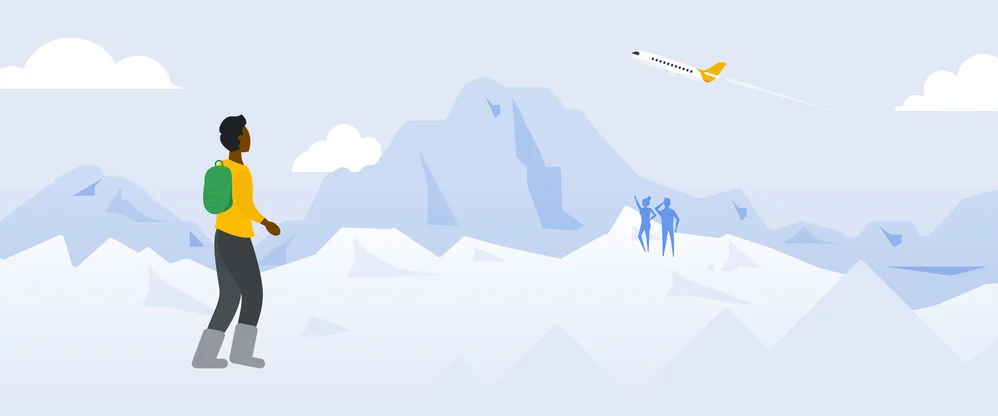
A new advisory committee to improve flight emission estimates

Three tools for stress-free travel around Asia Pacific
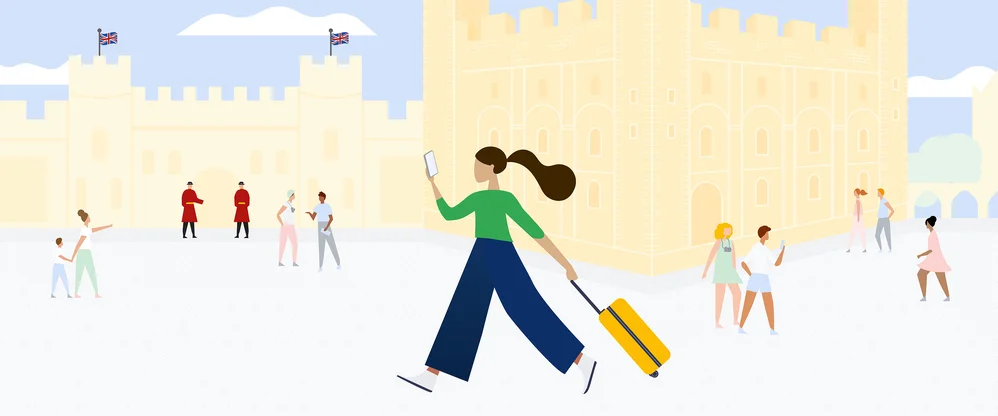
New ways to browse hotels and save money on flights — plus other tools for summer travel
New ways to drive hotel bookings and reach travelers.

5 sustainability updates from 2022 that are good for you — and the Earth
Let’s stay in touch. Get the latest news from Google in your inbox.
Expedia Rewards is now One Key™
Simplify your travel plans with trip planner.
Get started now
Plan with ease
Save and compare travel plans in a seamless experience.
Stay organized
Keep all of your bookings and saved travel plans in one place.
Decide together
Collaborate with family and friends to plan your dream trip together.
Easily save, collaborate and book - all your travel plans in one place
Make your travel plans easier with Expedia's Trip Planner. From saving favorites and organizing, to deciding with your group and booking your ideal trip, everything is together all in one place. You can select your favorite stays and activities while you search, and then find them later in your account. Avoid the hassle of sending multiple links to a group chat by inviting your family and friends to collaborate on a group trip where they can share ideas and see everything at once. After you've settled on your itinerary, you can make the bookings you need and keep them organized all in one place. Its ease of use makes it one of the best trip planning tools around.

How Trip Planner works
Sign into your Expedia account to save and compare your favorites to a new trip, work together with your friends and family on your group vacation, and keep all of your bookings in one itinerary planner. It just takes a few clicks to get the ball rolling.
.png )
Invite friends and family to create a group trip
Open your trip and invite your fellow travelers to collaborate in the Trip Planner. Once they accept the invitation sent to their email, they’ll be able to view, save more items, comment, and like their favorite options to help decide on the best ones to book.

Book and manage your trip itinerary in the same place
Make all the bookings you need by tapping the three dots on your saved options. You can also change and cancel bookings in the same place.
Scan the QR code and download our app

Scan the QR code
FAQ: Learn more about Trip Planner
What should I do to plan my trip?
Get started with our Trip Planner in one of two easy ways:
1. Sign into your account, search for places to stay or things to do, and tap the heart icon on the image of a listing that you want to save. You'll be asked to create a new trip by giving it a name and saving it to your trip planner.
2. Head to the Expedia homepage, click on Trips in the top right corner (on desktop) or in the bottom menu bar (in the app), and then select "Create a trip".
How do I create a trip plan?
Once you've signed into your account and created your trip, you can save accommodations and activities to your trip. Soon you will also be able to save your preferred flights in our Trip Planner.
Why is trip planning important?
Saving items in a travel planner online helps you stay organized by keeping all your favorite stays and activities saved in one place. Instead of switching between multiple browser tabs, just open our Trip Planner.
When you're ready to book, it's easy to compare options , see all your locations on a map, and book directly from your saved items.
When should you start planning a trip?
Any time is a good time to start planning travels, and our Trip Planner can be used for everything from last-minute weekend getaways to a summer vacation planned over the winter. Just click on Trips on our homepage to get started.
How to plan a successful trip?
Saving your stay and activities to a trip helps Expedia better understand your preferences, so we can recommend more places to go and things to do to fill out your travel plans and make your trip unforgettable. Take advantage of our vast inventory and useful filters to make sure you get the accommodations and activities for your ideal trip.
Where can I find the items that I saved to a trip?
Head to the Expedia homepage and click on Trips in the top right (on desktop) or in the bottom menu bar (in the app). Select the trip that you want to view and look for "Saved items" to see all the items you've selected for that trip that haven't been booked yet.
With our trip planner, your booked and saved items are all in one place, which makes it easier to book your trip piece by piece.
Where can I find my booked items?
On the Expedia homepage, click on Trips in the top right (on desktop) or in the bottom menu bar (in the app). Select the trip that you want to view and head to "Bookings" to see all the items booked for that trip.
When you plan a trip online with us, you can keep your booked and saved items all in one place, making it easier to manage and build your trip.
Can I move a booked or saved item to a different trip?
Yes, we've made it easy to move items, because we know that planning your trip can mean adding more places to see or splitting favorite destinations up into multiple trips.
First, select the trip that already has the items you want to move. For booked items, tap the three dots on the top right corner of the item and select "move to another trip". For saved items, follow the same process and select "save to another trip" instead.
How can my friends and family help me plan a trip online?
Friends and family invited to collaborate on a trip with you will be able to view, save, and book items in your trip planner itinerary. All they need to do to start collaborating is accept the trip invite sent to their email.
- The Best Tech Gifts Under $100
- Traveling? Get These Gadgets!
The 9 Best Travel Planner Apps of 2024
Proper planning prevents poor purchasing. Get ready for your trip the right way!
:max_bytes(150000):strip_icc():format(webp)/ScottOrgera-f7aca23cc84a4ea9a3f9e2ebd93bd690.jpg)
- Saint Mary-of-the-Woods College
- Payment Services
Planning the perfect trip can be almost overwhelming enough to take the fun out of what should be an exciting experience. Thankfully, many travel planning apps are available to help you organize your next getaway, right down to the smallest detail.
Best for Predicting Lowest Flight and Hotel Prices: Hopper
The Watch feature sends push notifications about good deals when it's time to commit.
Some fairly large airlines aren't included in Hopper's analysis.
Hopper's proprietary algorithm tries to predict where flight and lodging prices are headed shortly, letting you wait until the right moment to spring into action and book your trip at the lowest price. The app analyzes billions of prices per day and claims to predict what the cheapest one will be with a 95% accuracy rate.
Download For:
Best for Helping You Remember the Essentials: Packing Pro
An impressive group of sample packing lists provides a good starting point if you don't want to make your own.
In-app purchases are inappropriate for an app you purchased.
Packing Pro is well worth the $2.99 if stuffing your suitcases isn't your favorite pre-trip activity. The app creates customizable packing lists considering essential factors like the trip duration, destination, expected weather conditions, food preferences, and more. Packing Pro's robust item catalog ensures that even the most unique dietary or religious restrictions are satisfied.
Best for Car or RV Trips: Roadtrippers
The hidden gems that can be discovered with this app.
GPS coordination isn't as good as it is in apps like Waze.
If dealing with long lines at the airport isn't your idea of fun, then Roadtrippers may be the app for you. Whether you're hitting the highway or off-roading, enter your starting and destination points and let Roadtrippers provide everything you need.
From campsites and outdoor attractions to unique adventures that are off the beaten path, this app is the perfect companion for planning an excursion, no matter if your mode of transportation is a small-sized rental car or a giant RV.
An optional yearly subscription unlocks advanced features, including live traffic monitoring and different map styles.
Best for Finding Bargain Flights: Skiplagged
Frequent travelers can save a significant amount of money.
Airline baggage fee policies can be murky, so read the fine print before booking.
By showing fares to connecting cities that are sometimes cheaper than a direct flight to that city, Skiplagged lets you book flights where you stay at the layover location (your destination) rather than continuing with the connecting flight. When it works, you spend less to reach your desired destination. Skiplagged also lets you book last-minute hotel deals.
Best Overall Trip Planner: Kayak
The Explore feature helps you decide on a destination, suggesting getaways all over the globe based on your maximum budget.
Doesn't always show all available flights on a specific route, potentially causing you to miss out on the best deal.
One of the top all-in-one apps for setting up a trip, Kayak searches hundreds of travel sites instantly to provide multiple deals on a flight, hotel, or rental car in the same location. Kayak also organizes everything in one place and includes up-to-date details on security wait times, along with airport terminal maps.
The app also measures your luggage using your phone's camera, informing you of potential fees and carry-on rules for most airlines.
Best for Avoiding Hidden Fees: Skyscanner
Offers protection to ensure car rental providers don't overcharge for fuel.
In rare instances, flight prices shown in the app are outdated.
Skyscanner should be included in some of the bigger all-in-one planning and booking apps. Offering reliable price alerts, integrated frequent flyer miles, and no additional or hidden fees like you might find elsewhere, Skyscanner usually follows through on its promises and is easy to navigate.
Best Itinerary Planner: Sygic Travel
If you don't want a planned itinerary, Sygic is useful for finding nearby attractions on-the-fly.
Access to Sygic's offline maps requires a paid upgrade to the Premium version.
Sygic Travel lets you plan a detailed itinerary for each day of your trip before you leave home, down to the last detail, like walking distances between attractions.
With over 50 million places included, many with 360-degree videos that make you feel like you're there, the app's smart search filters help you narrow things down to the perfect daily schedule. Collaborative city guides provide an easy-to-use snapshot of the most popular locales around the globe.
Best for Customer Reviews: TripAdvisor
The forums are a great resource for getting specific travel-related questions answered quickly.
Default rankings don't always correlate with customer reviews, so you often need to take a deeper dive to discover the best value.
A stalwart in the travel industry, TripAdvisor isn't unique in providing a one-stop-shop for booking good deals on flights, hotels, and restaurants for your upcoming trip, though it does a dependable job of each. The app sets itself apart with its customer feedback on airlines, lodging, food, and activities. By offering over 500 million opinions from real travelers who've been there and done that, TripAdvisor helps you make informed planning decisions based on others' past experiences.
Best for Organizing Confirmations and Reservations: TripIt
Send information manually, forward confirmation emails, or have the app automatically fetch itineraries from your inbox.
The default notification setting is for an annoying number of alerts.
When you plan a trip, it's not uncommon to receive multiple confirmation emails and itineraries from airlines, hotels, rental car companies, or other sources. Keeping all these details organized can be a hassle.
TripIt solves this problem by taking all your scattered information and organizing it into an easy-to-use main itinerary. This basic functionality is free of charge, while an annual subscription provides the ability to upgrade your seat on upcoming flights and track reward miles, among other perks.
Get the Latest Tech News Delivered Every Day
- The 10 Best Road Trip Planner Apps for 2024
- 17 Best Travel Gadgets for Long Flights
- The 9 Best Travel Apps for 2024
- The 9 Best Astrology Apps for 2024
- The 9 Best Summer Apps of 2024
- The 9 Best Android Video Editor Apps of 2024
- The 10 Best Car Apps of 2024
- The 9 Best Book Reading Apps of 2024
- The Best Tech to Travel With in 2024
- The 17 Best Android Tablet Apps of 2024
- The 9 Best Workout and Exercise Apps of 2024
- The 7 Best Google Maps Alternatives of 2024
- The 6 Best Mileage Tracker Apps for 2024
- The 9 Best Running Apps for iPhone in 2024
- The 13 Best Android Auto Apps of 2024
- The 20 Best Free iPhone Apps of 2024
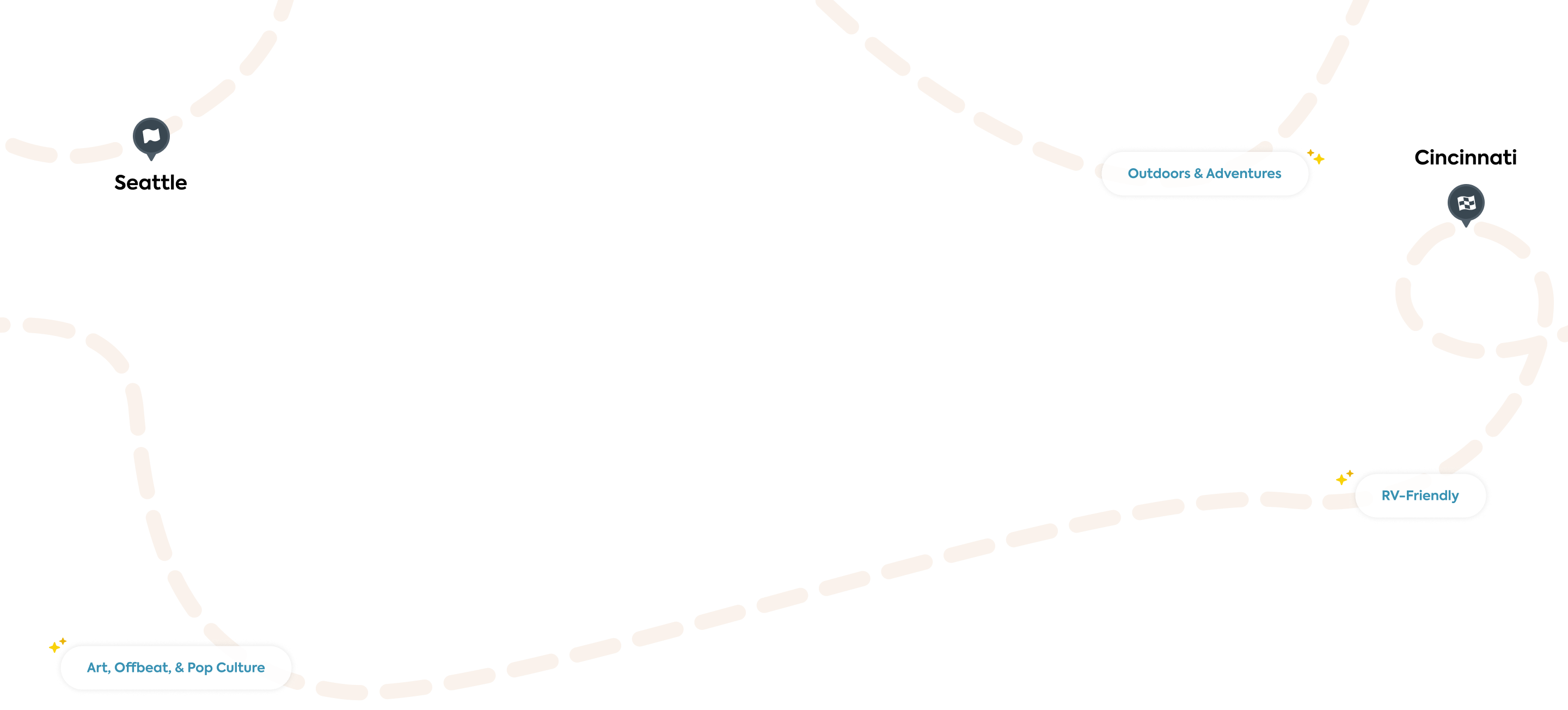
Let us plan your trip for you
Roadtrippers Autopilot™ creates your itinerary based on what we’ve learned from over 38 million trips. You’re never more than a few clicks away from your next great adventure.

- Auto Travel

Let Autopilot take the wheel planning your next road trip, scenic drive, RV journey and everything in between. Then enjoy the ride while uncovering hidden gems along the way.
Get real-time traffic updates and access to wildfire smoke maps to stay informed and connected throughout your journey.
Collaborate
Share your itinerary with your copilots so they can help with the finishing touches.
Let Roadtrippers be your guide, navigating the twists and turns as you roam the open roads with confidence and ease.

Exclusive Access To Autopilot
Let us do the planning for you! Enter in a few key details and we’ll craft a custom tailored trip just for you.

Choose the right plan for you—and try it free for 7 days
Premium planning.

RV-Friendly Tools

Overnight RV Parking

Start free for 7 days
Then $35.99 (that's only $2.99/month), then $49.99 (that's only $4.17/month), then $59.99 (that's only $4.99/month).
† RV-Friendly routing features (including routing warnings for vehicle hazards and propane restrictions) are available in the U.S. only.
Free 7-day trial
Test drive the best features of Roadtrippers Premium for free! Eligible users will get exclusive access to all the tools needed to plan the perfect road trip.
Create a Roadtrippers account to start your 7-day free trial.
Already have a Roadtrippers account?
We need your email address
Before we can sign you up for Roadtrippers, we need your email address. Click the button below to go to your profile.
Plan your next adventure with a Roadtrippers Premium account
Due after 7-day free trial
Thank you for signing up for a Roadtrippers Subscription
Get started planning your next trip now!

Good news...you already have Roadtrippers!
Thanks for being one of our most dedicated users.
- Trip guides
- Trip Planner
- Sign up Log in Sign out
- Log in Sign out
- ROADTRIPPERS MEMBERSHIP
- RV RESOURCES
Plan your journey, find amazing places, and take fascinating detours with our app.
We couldn't find an existing Roadtrippers account using that service. Please try signing in with another option or create a new account with Roadpass.
We need your email address to send you trip itineraries and other updates.
How To Plan a Trip: Clark’s Best Travel Tips To Save Money
Most of us have to book travel at some point or another, whether it’s for work, to visit family and friends or just to get away from it all on vacation.
Money expert Clark Howard , a former travel agent himself, has spent decades perfecting the art of planning and booking trips. In this article, we’ll share his secrets and show you how to use all of the available tools to make travel plans that suit your needs at the lowest possible price.
Booking Travel the Clark Howard Wa y
How to plan a trip, how to book flights, how to find a hotel or other lodging.
- How To Reserve a Rental Car
How To Book Bus or Rail Tickets
- How To Select a Cruise
When To Buy Travel Insurance
- Travel the Clark Howard Way
The very first thing you need to do is to make a plan. It can be as simple or as involved as you want it to be. Some people love to fly by the seat of their pants and do minimal planning, while others like to have every minute of an itinerary accounted for before they leave the house.
No matter which type of traveler you are, there are some basic steps you’ll need to take if you want to travel on a budget:
- Select your destination: In some cases, your destination will be selected for you, and there will be no decision to make. Other times, you might have some days off from work and decide you want to scratch a place off your bucket list. Or, if you’re like Clark, you might just wait for a deal to come along and let the destination pick you .
- Figure out your trip length: If you have only a few days off, this might already be decided for you. But if you have some flexibility in your schedule, being fluid with the number of days in your trip could be the key to saving money on travel expenses. And your destination can play into this part of the decision-making. For example, you might be able to do everything you want to do in a smaller city in a day or two, but taking in everything important to you in New York City might take a week or more.
- Research your destination: If you’re going somewhere for the first time, you’ll want to get the lay of the land. Figuring out what you want to accomplish on your trip can help you decide exactly where you want to stay and how you intend to get around. The research process can also help you start figuring out approximate costs of things (lodging, transportation, attractions and meals) so that you can make sure you stay within your budget.
- Know the rules: Policies and procedures can change frequently and quickly. It’s crucial to ensure you have all documents (like a driver’s license, passport and any other required information) before leaving home. Lori Silverman from Team Clark’s Consumer Action Center recommends checking Travel.State.Gov for the latest information on your destination. And also remember to check the latest health-related regulations for your destination at the CDC website .

Once you’ve got the planning part down, it’s time to figure out how you’re going to get to where you’re going. If your destination isn’t within easy driving distance or you simply don’t want to drive, an airline flight is probably going to be your best option.
Booking flights has come a long way since the days when you had to call a travel agent or the airline itself to buy tickets. Now, there are literally thousands of places to turn to book a flight. So how do you find the best price?
Conventional wisdom has held for a while that there is a “perfect” day of the week to book air travel. With the advent of dynamic pricing , that has changed. According to Team Clark’s travel expert, Clara Bosonetto, “Technology has marched on from the days of manually loading new prices. Airfares are now updated constantly and automatically using complex algorithms.”
But it’s still important to have a strategy. Flexibility is the key to landing a great deal. When you have firm travel plans, start gathering airline quotes several weeks in advance , but resist making a purchase until you’ve learned the fare patterns to your destination or until an excellent deal comes along.
We’ve found that the most robust flight search engine is Google Flights .
“Google Flights should be the first website to visit to search domestic and international airfares before you jump over to a specific airline to book a flight,” according to travel expert Clara Bosonetto. “With its many filters, it’s the best site to use when you must fly on a specific airline, must have a nonstop flight, you have a multiple city trip (flying into one city and out of another) or you want to book one-way travel.”
When you search your itinerary, Google Flights will show you options for your selected dates and let you know if the prices are higher, lower or about average for your route. The site also lets you explore fares on alternate dates with its calendar and price graph features.
Once you’ve selected a flight, the site will show you the total cost of your ticket and what’s included with that fare. You’ll also see options for upgraded tickets (if available) and what paying more will get you. If checked bags are not included in your fare, the site will let you know what that will cost you.

When you’re ready to book, Google Flights will send you directly to the airline’s website to complete your transaction.
The site will also let you track prices, which can potentially help you save big on airfare. When you toggle the “Track Prices” button (you must be signed in to your Google account), Google will send you alerts if the price on your selected route changes. It is important to note that fares on Southwest Airlines do not appear on Google Flights.
See our full guide to using Google Flights here.

When it comes to planning where you stay during your trip, there are a lot of options. The increasing popularity of Airbnb and other private accommodation booking services means more choices for travelers.
Still, some people prefer to stay in a hotel when they travel, and Clark has a three-step process for booking a great hotel room on a budget.
1. Book a Refundable Room
“If I’m flying somewhere — you usually book your airfare pretty well in advance — I also book a hotel room at the same time,” Clark says. “I book the best deal I can find for where I’m going but always a refundable room.”
Doing this leaves you the option to cancel the room if you find a better deal in the days leading up to your trip.
2. Search for Better Deals Before Your Trip
That’s where the next step comes in: really doing the research to find the best deal.
“I already know I have a room if I need it,” Clark says. “But I want a deal! So what I do is heavily concentrate on Hotwire and Priceline , two sources where you don’t know where you’re staying until you book nonrefundable.”
Clark understands that some people might be uncomfortable not knowing the name of their hotel before they book. That’s why we published our guide to finding out which Hotwire or Priceline hotel you’re getting before you book .
As for when you’re likely to find the best deals on those sites, Clark has a strategy: “I’ll check throughout the time period leading up to my travel, but I especially concentrate one week out and less,” he says. “A lot of times, the best deals are the last few days before you travel.”
Clark also checks other hotel booking sources to compare prices to what he finds on Priceline and Hotwire, including:
- Trivago : a handy hotel comparison site for travelers
- Hotels.com : site that offers a price guarantee and often offers discount codes for room bookings
- Roomer : a hotel site that lets you buy beds from motivated sellers who bought nonrefundable rooms
3. Cancel the Original Booking
The last thing you need to do, assuming you’ve found a better deal, is to cancel your original refundable booking.
“Occasionally that room you booked when you booked your airline deal will be the best hotel deal you’ll find,” Clark says. “But if you do it my way, most of the time you’re going to save big bucks.”
See Clark talk about his three-step hotel booking process in the video below.
If you’re looking for a more unique travel experience, Airbnb , VRB O or the vacation rentals offered through major travel sites such as Tripadvisor or Expedia , might be the way to go. This also applies if you need a larger space, prefer to have your own cooking facilities or if you plan to stay for more than a couple of nights in a destination.
You’ll sometimes get a much better deal by renting a home or condo from a private owner. But take care to know the all-in price before you hit that “Reserve Now” button. In a recent podcast , Clark pointed out that more and more vacation rentals are tacking on fees that end up making the total much higher than you’d expect when you look at the nightly rate.
See our guide for how to book the best — and safest — Airbnbs here.
How To Book a Rental Car

So, you’ve taken care of your flight and lodging plans, but you might need some way to get around on your trip. Some destinations are totally walkable. Others have great public transportation. But if you need a car, there is a strategy to booking a cheap rental.
Here are Team Clark’s six steps to getting a great deal on a rental car.
1. Figure Out What Kind of Vehicle You Need
Whether you get a sedan, SUV or van, you need to make sure the vehicle you rent makes sense for you. Important questions to ask yourself include:
- How many people will be traveling?
- How much, if any, luggage will I need to stow?
- Do I need more than two doors to accommodate car seats or special needs?
- Will I need a vehicle that can handle rough terrain?
- Do I care if the vehicle is a basic model, or do I want something more luxurious?
2. Start Your Research With AutoSlash
The first part of your search for a rental car is a secret to a lot of people, but one that Team Clark has found can save you a lot of money: a site called AutoSlash .

One of the great things about AutoSlash is that the site will monitor the vehicle you select and email you if the price on the rental drops between the time you book and the time you pick it up, allowing you to re-book at the lower price. Read our full review of saving money on rental car bookings with AutoSlash here.
3. Check the Other Aggregator Sites
Once you’ve established the lowest price you can get on your desired vehicle through AutoSlash, it’s time to compare prices on the other sites that aggregate rental car rates. Some of the most popular and trustworthy are:
- Travelocity
4. See if You Can Get a Better Deal Directly From the Rental Car Company
Once you’ve established the best deal available between AutoSlash and the major travel booking sites, head directly to the rental agency to see if it can match or beat the price you’ve already found, either on the agency’s website or by calling on the phone.
5. Book the Best Deal
Generally, with car rentals, you’re just reserving the car and not paying upfront. That means you won’t even have to give up a credit card number to lock in your reservation. It also means that, unlike most airline tickets and hotel reservations, you won’t be penalized if you need to cancel or change your reservation later.
6. Check Back a Week Before Your Trip To See if Prices Have Dropped
Finally, since you’re not locked into your reservation with a credit card, you have one more trick up your sleeve, and it’s one of Clark’s favorite travel tips.
“When I book my flight weeks or months before the actual date of travel, I also book my car rental at the same time,” he says. “Then a week before my travel date, I re-shop the car rental rate. At least 90% of the time, I find that I can book a new car cheaper at the last minute, so I just let my old reservation go.”
READ MORE: 6 Steps To Getting the Best Car Rental Deal
Whether you don’t like flying or you want to enjoy the landscape, you might decide to travel by bus or train. If that’s your plan, here’s how to find the best deals.
Bus Tickets

There are a number of internet resources for booking bus tickets. Go online to the following bus travel sites:
- Wanderu : This transit website and app specialize in affordable bus and train fares (but also offers flights and hotels) in North America and Europe.
- Gotobus.com : This lists ticket prices for bus rides, bus rentals and hotels. The Deals tab has some of the most affordable bus tickets around.
- CheckMyBus : CheckMyBus is a travel portal that claims it can save you up to 70% on average and offers the most bus routes worldwide.
- Busbud : Busbud is well-regarded for its comprehensive search results and mobile app. The site, which shows routes in more than 63 countries, also has user-submitted travel reviews for every route. If you search online, you may even be able to find a discount code, which could save you up to 20% on selected travel routes.
Read more about how to find cheap bus fares here.
Train Tickets

When it comes to domestic train travel, Amtrak is pretty much your only interstate choice. The rail carrier covers more than 21,000 miles across 46 states.
If you want to purchase train tickets at the lowest possible price, keep these things in mind:
- Look for discount Saver and SmartFares: Saver Fares are usually web-only specials that require the advance purchase of tickets. SmartFares are weekly discounts that are typically used to fill up trains. The tickets are nonrefundable and subject to availability.
- Seek out discounts: Amtrak offers 50% discounts for children , 10% for seniors , 10% for military personnel and their families and 10% for disabled adults and their companions.
- Check out Amtrak’s Deals page: Amtrak’s Deals page often features buy-one-get-one-free specials and special prices on select routes.
- Sign up for the rewards program: Join Amtrak’s Guest Rewards program , and not only will you get deals sent straight to your inbox, but you earn two points per dollar spent on Amtrak. You can redeem those points for upgrades and free travel.
- Look for special offers at RailServe.com : It has an Amtrak coupons section .
Read more about how to save on domestic train tickets here.
For booking international rail travel, it’s hard to beat UK-based International Rail . Bookings can be made for 66,000 point-to-point routes in Europe, including on Eurostar, French TGV, German ICE, InterCity, EuroCity and Spanish high-speed trains. Rail bookings for other regions include Australia, New Zealand, Asia and South Africa.
How To Book a Cruise

During an episode of his podcast early this year , Clark warned about booking a cruise in 2022 because of still-changing conditions related to the COVID-19 pandemic. He cited the fact that, depending on COVID restrictions, some ports on your cruise might not allow passengers to disembark. He also pointed out that COVID protocols on some ships can make for a less than optimal cruising experience.
As the pandemic waxes and wanes, so does the availability of cruises and deals. “Now you have to do a lot more picking and choosing,” Clark says, adding that before you can find a good cruise deal, you need to make a couple of adjustments regarding your mindset and travel plans.
“You have to adjust to today’s reality and adjust how you book with the flexibility of the ship you go on, and particularly when you sail to get the best deal,” he says.
It is important to check on current guidelines from the CDC and the policies of individual cruise lines before you book.
Keeping in mind all those caveats, Clark has three primary rules to follow when it comes to booking cruises.
1. Let the Calendar Save You Money
“There are certain cycles through the year when cruise lines have trouble filling all their cabins, and that’s when you steal the great deals,” he says.
So when is typically the best time to book?
“After Thanksgiving but before Christmas kicks off is a bargain time for any kind of travel — and cruises are right in the midst of that,” he says.
Comparison shopping will give you a better understanding of what prices should look like at certain times of the year.
One of Team Clark’s favorite sites for finding last-minute cruise deals is VacationstoGo.com . (Note: We do not recommend that you book on this site , but it’s a good place to do research.) If you want to compare prices from multiple travel agencies, CruiseCompete.com can also be a good source.
2. Don’t Let Cruise Brand Loyalty Cost You More
Some people are really loyal to cruise line brands, but that can absolutely kill your budget.
Clark’s advice is when planning your trip, venture away from what you know and explore other companies and what they’re about: “Look at things like experimenting with cruise lines you’re not that familiar with.”
Clark does offer this one caution though: “Never book a deal on a cruise just because it’s a deal. You need to really be comfortable that that ship is going to fit your lifestyle, the things that you’re interested in.”
The price won’t matter much if you find yourself on a cruise ship that doesn’t mesh with your expectations. Do the research.
3. Read the Reviews
You should try to get a balanced view of the cruise lines and particular ships you’re interested in, so it’s best to read some reviews.
Clark recommends a site where you can take a deep dive into cruise ship specs as well as deals and booking tips.
“I’d love for you to spend time on CruiseCritic.com , reading about a ship before you book on that ship,” he says. “Additionally, you can look closely at the various individual cabins to make sure you don’t get in a cabin that’s going to be a problem because it’s in a noisy area of the ship, for example.”
Another really helpful tip is to ask family, friends and coworkers if they have any recommendations. And travel agents who specialize in cruises sometimes have the inside scoop on particular ships and itineraries.
Now more than ever, it is important to consider purchasing travel insurance because of the still-changing travel conditions related to COVID-19. There are many different types of travel policies available, but there are two types we recommend that will likely cover most of your needs.
The best policy is one that allows you to cancel for any reason. It happens to be called Cancel For Any Reason (CFAR) insurance, and Clark says it’s great because it can you get at least most of your money back no matter why you decide not to make the trip.
Even before the pandemic, Clark recommended getting CFAR insurance for these four types of travel:
- Embarking on a cruise
- Booking a tour as part of your trip
- Traveling on an itinerary that requires prepayment of thousands of dollars
- Purchasing a trip that is non-refundable
“If you book a tour or you book a cruise — those two in particular — if you’re going to lose all your money regardless of why you can’t come, then you need to get insurance,” Clark says.
Clark recommends that you comparison shop for travel insurance that suits your needs at InsureMyTrip . It’s an aggregator site that helps you analyze all of the different choices available.
In addition to a CFAR policy, you may also want to consider travel medical insurance.
“The thing with international travel, which almost nobody knows until it’s a big problem, is that your health insurance usually doesn’t cover you outside the United States,” says Clark.
Read our full article on travel medical insurance here .
Travel the Clark Howard Way: Let the Destination Pick You
Over the years, Clark has used a trip-planning strategy that has allowed him to visit 49 states and almost every corner of the globe without spending a lot of money. His secret is surprisingly simple.
“My #1 rule of travel is buy the deal first and then figure out why you want to go there. By following that simple rule, I’ve been able to visit every continent except Antarctica and every state except North Dakota. And I’ve done it all on a dime.”
In order to accomplish this, Clark does three things that you can do, too.
1. Don’t Pick a Destination
How do you figure out where the deals are? Kayak Explore is a tool that lets you find great airfare deals that fit your budget.
You simply select how much you’re willing to pay and available destinations in your price range pop up on a world map. You can drill down further by season and month of travel.
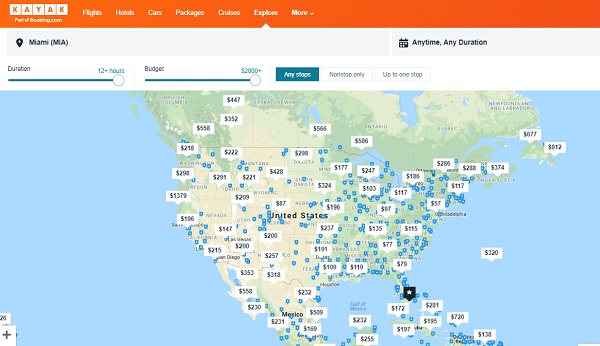
2. Sign Up for Cheap Flight Services
Another way to approach the question of how to travel on the cheap is to sign up for any of a variety of cheap flight services. Clark likes and subscribes to all three of these to get the early word about the best airfare sales:
- Going (formerly Scott’s Cheap Flights )
- Dollar Flight Club
Going and Dollar Flight Club both operate on a freemium model. You can use a basic version of their services for free, but you have to pay to upgrade in order to access a more robust version of the service. Clark says the upgrade is worth it if you really love to travel.
3. Set Up Fare Alerts
Not everybody can be flexible and let the deal drive their travel plans all the time. If you have a place you know you need to go — maybe a wedding or a family reunion — your best bet is to set up fare alerts.
Fare alerts will let you know when the price on a particular route drops and by how much. This kind of pricing perspective can save you a lot of money.
“They’ll be able to give you historical averages, telling you this fare is lower than normal by X number of dollars,” Clark says.
Try setting up fare alerts on both Google Flights and Kayak to ensure you find the best deal.
Read more about how Clark Howard books travel here.
Final Thoughts
Now that you have Clark’s advice for planning and booking a trip on a budget, you should be ready to pack your bags.
We know the process can be intimidating, especially when you’re going somewhere you’ve never been before. In fact, there are times when we recommend you consult a travel agent for help .
But for the majority of cases, if you follow the steps outlined above, you’ll be on your way to your next adventure without breaking the bank.
All set to go? Find your next vacation destination at a great price over on Clark Deals!

- 8-night Switzerland, Germany & Austria escape from $1,659
- Delta nonstop flights to the Caribbean & Mexico from the $300s
- Brightline Rail Orlando: Fares from $39 one-way
- 31-night San Francisco to Sydney cruise with Hawaii from $1,878
Our Daily Newsletter
Join more than 330,000 people who get our must-have money tips every day
Watch / Listen
Check out our top-rated money podcast.

Need money help? Call us for free advice . You can also email us .
Winter is here! Check out the winter wonderlands at these 5 amazing winter destinations in Montana
- Travel Tips
How To Plan A Trip: An Easy Travel Planning Guide
Published: November 16, 2023
Modified: December 28, 2023
by Rodi Kindle
- Plan Your Trip
Introduction
Planning a trip can be both exciting and overwhelming. Whether you’re embarking on a solo adventure, a romantic getaway, or a family vacation, careful planning is crucial to ensure a smooth and enjoyable experience. From choosing the perfect destination to booking flights and accommodations, travel planning requires careful consideration of various factors. In this easy travel planning guide, we’ll walk you through the essential steps to plan your trip effectively.
Travel planning allows you to make the most of your time and resources, ensuring that you don’t miss out on any must-visit attractions or experiences. By following these recommendations and tips, you’ll be well-prepared to create a memorable and stress-free travel itinerary.
Whether you’re a seasoned traveler or this is your first time planning a trip, this guide will provide you with valuable insights and practical advice to help you make the most out of your travel experience. So, let’s dive into the essential steps of travel planning and get ready for your next adventure!
Step 1: Determine your destination
The first step in planning any trip is deciding on the destination. Consider your interests, preferences, and the type of experience you’re seeking. Do you want to relax on a tropical beach, explore historic landmarks, immerse yourself in a different culture, or embark on an outdoor adventure? Research various destinations and make a list of places that align with your interests.
Factors to consider when choosing a destination include the time of year, weather conditions, and your budget. If you’re traveling during peak tourist season, popular destinations may be crowded and prices for flights and accommodations could be higher. Alternatively, visiting during the off-peak season may offer more affordable options and fewer crowds.
Think about the distance you’re willing to travel and the transportation options available to reach your chosen destination. Consider whether you prefer a domestic or international trip, and take into account any visa requirements or travel restrictions.
Furthermore, take the time to research the safety and political situation of your potential destinations. Check for any travel advisories or warnings issued by your government, and read reviews from other travelers to gain insight into the current state of your desired location.
Ultimately, the choice of your destination should align with your interests, budget, and the kind of experience you’re looking for. Once you have narrowed down your options, you can move on to the next step of the planning process.
Step 2: Set a budget
Setting a budget is an essential step in travel planning as it helps you determine how much you can realistically spend on your trip. Consider your financial situation and allocate funds for transportation, accommodations, meals, activities, and any other expenses that may arise during your journey.
Start by determining how much you are willing to spend overall on your trip. This will give you a rough estimate of how much you can allocate to each aspect of your travel, such as flights, accommodation, and daily expenses.
Research the average costs of your chosen destination to get an idea of how much you need to budget. Take into account the cost of living, transportation, attractions, and dining options in the area. Consider whether you prefer a luxurious or budget-friendly experience, and adjust your budget accordingly.
Be sure to factor in any additional expenses such as travel insurance, visa fees, and transportation to and from the airport. It’s also important to set aside some extra funds for unexpected expenses or emergencies that may arise during your trip.
Consider ways to save money during your trip. Look for deals on flights and accommodations, consider alternative modes of transportation such as buses or trains, and opt for budget-friendly dining options like street food or local eateries.
Keep track of your expenses as you plan and throughout your journey. This will help you stay within your budget and make adjustments if necessary. Use online travel budget calculators or mobile apps to assist you in managing your finances effectively.
Remember, setting a budget allows you to plan your trip within your means and ensures that you can fully enjoy your travel experience without financial stress. So, take the time to assess your expenses and allocate your funds wisely before moving on to the next step of travel planning.
Step 3: Decide on the duration of your trip
Deciding on the duration of your trip is an important step in travel planning as it helps you determine how much time you can allocate to each destination and activity. Consider your schedule, budget, and the attractions you want to explore.
Start by assessing the amount of time you can take off from work or other commitments. Take into account any travel restrictions or visa limitations that may affect the duration of your trip.
If you have a specific destination in mind, research the recommended duration for visiting that location. Some places may require a longer stay to fully experience their culture, attractions, and activities, while others can be explored in a shorter timeframe.
Consider your travel pace and personal preferences. Do you prefer a leisurely trip with plenty of downtime, or do you prefer a fast-paced adventure packed with sightseeing? Factor in travel time and any jet lag that may affect your energy levels upon arrival.
If you plan to visit multiple destinations, allocate sufficient time for each location based on your interests and the activities you wish to engage in. Remember to account for travel time between destinations and consider the feasibility of fitting everything into your desired timeframe.
Keep in mind that a longer trip may require a larger budget due to increased accommodation, dining, and transportation costs. Balance your desire to spend more time in certain locations with the overall cost of your trip.
Once you have determined the duration of your trip, you can move on to the next steps of travel planning, such as researching and gathering information about your chosen destinations and booking flights or transportation.
Remember, the duration of your trip should align with your interests, budget, and available time off. So, take the time to carefully consider these factors to ensure a well-balanced travel experience.
Step 4: Research and gather information about your destination
Researching and gathering information about your destination is a crucial step in travel planning. It allows you to familiarize yourself with the local culture, attractions, customs, and practical information essential for a smooth and enriching travel experience.
Start by reading travel guides, online resources, and blogs to gather insights about your chosen destination. Look for information about popular tourist sites, local customs, transportation options, safety precautions, and visa requirements.
Check out travel forums and social media groups to connect with fellow travelers who have been to your destination. Seek their advice, recommendations, and firsthand experiences to gain valuable insights and tips.
Research the best time to visit your destination. Consider factors such as weather conditions, peak tourist seasons, and any festivals or events that may be happening during your trip. This information will help you plan your itinerary and determine which attractions or activities to prioritize.
Learn about the local culture and customs. Familiarize yourself with local greetings, etiquette, clothing norms, and any specific cultural practices or taboos. This will help you show respect to the local community and avoid any cultural misunderstandings.
Research transportation options within your destination. Find out about public transportation systems, availability of rental cars, and the cost of taxis or ridesharing services. Knowing how to get around will help you save time and money during your trip.
Look for recommendations on accommodations, dining options, and local cuisines. Read reviews and compare prices to find the best options that fit your preferences and budget. Consider the proximity of your accommodation to major attractions and amenities.
Make a list of the top attractions and activities you want to experience. Prioritize them based on your interests and available time. Research entry fees, operating hours, and any restrictions or reservations required for certain attractions.
By conducting thorough research and gathering information about your destination, you’ll be well-prepared to create an itinerary, make informed decisions, and make the most out of your travel experience.
So take the time to delve into the details and immerse yourself in the charm and wonders your chosen destination has to offer.
Step 5: Book flights or transportation
Once you have determined your destination and gathered information about it, it’s time to book your flights or transportation. This step is crucial, as it often affects your budget and can impact the overall logistics of your trip.
If you’re planning to travel by air, start by researching flights to your destination. Use flight comparison websites or online travel agencies to find the best deals and compare prices. Consider factors such as flight duration, layovers, and airline reputation.
Flexibility in your travel dates can help you find cheaper flights. Consider flying during off-peak seasons or on weekdays, as prices tend to be lower during these times. Be sure to book your flights well in advance to secure the best rates.
If you’re traveling by other means of transportation, such as trains, buses, or ferries, research the schedules, fares, and availability. Look for reliable booking platforms or official websites of transportation providers to make your reservations.
Consider the proximity of your accommodation to the airport or transportation hubs. It’s convenient to choose accommodations that offer easy access to public transportation or provide shuttle services to and from the airport.
When booking your flights or transportation, it’s essential to consider travel insurance. Travel insurance provides coverage for unexpected events such as flight cancellations, delays, or medical emergencies. Consider purchasing travel insurance to protect yourself and your investment.
Before finalizing your bookings, double-check the details to ensure accuracy. Verify the departure and arrival dates, times, and terminals. Make note of any luggage restrictions or additional fees that may apply.
Once your flights or transportation are booked, it’s a good idea to set up travel alerts or notifications to stay updated with any changes or delays. Save electronic copies of your itineraries, e-tickets, or reservation confirmations for easy access during your trip.
Booking your flights or transportation early ensures that you have the best options available and allows you to focus on other aspects of your travel planning.
So, take the time to research and make your bookings, ensuring a smooth and seamless journey to your destination.
Step 6: Find accommodation
Finding suitable accommodation is a crucial step in travel planning as it directly impacts your comfort and overall experience during your trip. Here are some steps to help you find the perfect accommodation.
1. Determine your budget: Set a budget for your accommodation. Consider how much you are willing to spend per night and allocate a portion of your overall trip budget to accommodations.
2. Research the options: Use online travel platforms and booking websites to explore various types of accommodations. Consider factors such as location, amenities, and reviews from previous guests.
3. Consider your preferences: Determine the type of accommodation that suits your needs. Options include hotels, hostels, guesthouses, vacation rentals, or even unconventional options such as homestays or house swaps.
4. Location: Consider the location of the accommodation in relation to your planned activities and attractions. It’s convenient to stay in a central location or near public transportation for easy access to the places you want to visit.
5. Read reviews: Take the time to read reviews from previous guests to get an understanding of the quality and service provided by the accommodation. Look out for any common issues or concerns mentioned in the reviews.
6. Compare prices: Compare prices of different accommodations that fit your criteria. Consider any added charges or fees, such as resort fees or taxes, when comparing prices to ensure you are getting the best value for your money.
7. Book in advance: Once you have found the perfect accommodation, book it as soon as possible to secure your reservation. Popular accommodations can fill up quickly, especially during peak seasons.
8. Check the cancellation policy: Before making your reservation, carefully read and understand the cancellation policy of the accommodation. This will help you navigate any potential changes or cancellations in your travel plans.
9. Contact the accommodation: If you have any specific requests or questions, reach out to the accommodation directly. This could include inquiries about special amenities, room preferences, or any other concerns you may have.
10. Confirm your booking: After making your reservation, double-check your booking confirmation for accuracy. Take note of any important information, such as check-in and check-out times or any special instructions given by the accommodation.
By following these steps, you can find the perfect accommodation that meets your needs, budget, and preferences, ensuring a comfortable and enjoyable stay during your trip.
So take the time to explore your options and secure your ideal accommodation in advance.
Step 7: Create an itinerary
Creating an itinerary is an essential step in travel planning as it helps you organize your time, prioritize your activities, and make the most out of your trip. Here’s how to create an effective itinerary:
1. Identify your must-see attractions: Make a list of the top attractions or activities you don’t want to miss in your chosen destination. Research their opening hours, ticket prices, and any specific requirements.
2. Consider time and logistics: Take into account the duration of your trip and the time it takes to travel between attractions. Be realistic about how many activities you can fit into each day, allowing for breaks and downtime.
3. Prioritize your interests: Determine your main areas of interest – whether it’s historical sites, museums, outdoor activities, or cultural experiences. Allocate more time for the activities or attractions that align with your interests.
4. Plan for flexibility: While it’s important to have a schedule, leave room for spontaneity and unexpected discoveries. It’s impossible to predict everything, so allow yourself time to explore and embrace new experiences.
5. Group activities by proximity: Cluster activities or attractions that are located close to each other. This will help you maximize your time and reduce travel time between destinations.
6. Consider the local culture: Take into account any cultural or religious practices that may affect the opening hours or availability of certain attractions. Plan your itinerary accordingly to make the most of your visit.
7. Explore local cuisine: Include time for trying local dishes and exploring different dining options. Research popular local foods or restaurants in each area you plan to visit and add them to your itinerary.
8. Pace yourself: Avoid overloading your itinerary with too many activities in a short amount of time. Give yourself time to relax and enjoy the surroundings. Remember, quality experiences are better than rushing through a long list of attractions.
9. Utilize travel apps and resources: Make use of travel apps or websites that offer itinerary planning tools or suggestions for your destination. These resources can help you create a well-structured and efficient itinerary.
10. Be mindful of your energy levels: Take into consideration your own energy levels and travel preferences. Avoid cramming too many strenuous activities in a row, and allow for rest or leisurely exploration.
Remember that an itinerary is a tool to guide you, but it’s okay to deviate from the plan if you discover new opportunities or if unexpected circumstances arise. Flexibility and spontaneity can lead to unexpected joy and memorable experiences.
So, take the time to create a thoughtful and well-balanced itinerary that allows you to fully enjoy your trip and make the most out of your chosen destination.
Step 8: Pack your bags
Packing your bags is a crucial step in travel planning, ensuring that you have everything you need for a comfortable and enjoyable trip. Here’s how to pack efficiently:
1. Make a packing list: Create a comprehensive packing list to ensure you don’t forget any essentials. Include clothing, toiletries, travel documents, electronics, and any other items you may need.
2. Check the weather: Research the weather conditions of your destination during the time of your visit. Pack appropriate clothing and accessories, such as jackets, hats, or sunscreen, to suit the climate.
3. Pack versatile clothing: Opt for clothing items that can be mixed and matched easily. Choose neutral colors and versatile pieces that can be dressed up or down to maximize outfit options while minimizing luggage weight.
4. Consider local customs: Take into account the cultural or dress norms of your destination. Pack appropriate clothing that respects local customs, especially if you plan to visit religious sites or conservative areas.
5. Pack travel-sized toiletries: To save space and comply with carry-on restrictions, transfer your toiletries into travel-sized containers. Remember to adhere to airline regulations regarding liquid quantities.
6. Organize your belongings: Use packing cubes or separate bags to categorize and organize your clothes and belongings. This will not only keep your suitcase tidy but also make it easier to find what you need during your trip.
7. Keep important documents together: Gather all your travel documents, including passports, tickets, accommodation reservations, and any necessary visas. Keep them in a secure and easily accessible place.
8. Pack essential electronics: Bring along the necessary electronics for your trip, such as smartphones, cameras, chargers, and adapters. Consider the voltage requirements of your destination and pack the appropriate adapters.
9. Don’t forget medication and first aid: If you take any prescription medications, ensure that you have an ample supply for the duration of your trip. Pack a basic first aid kit with essentials like band-aids, pain relievers, and any necessary medications.
10. Travel with essential valuables: Keep your valuable items, such as cash, credit cards, and jewelry, in a secure bag or pouch that you can carry with you at all times. Consider using a money belt or a hidden travel wallet for added security.
Remember to pack light and avoid overpacking, as it can be cumbersome and may incur additional luggage fees. Consider doing a trial pack beforehand to ensure that everything fits and that your luggage is within weight restrictions.
By following these packing tips, you’ll be well-prepared for your trip, ensuring that you have everything you need while avoiding the stress of overpacking. So, pack smart and travel with convenience and peace of mind.
Step 9: Plan your meals and dining options
Planning your meals and dining options is an important step in travel planning, especially if you’re a food lover or have specific dietary requirements. Here’s how to make the most of your culinary experiences during your trip:
1. Research local cuisine: Familiarize yourself with the local cuisine of your destination. Look for signature dishes, traditional specialties, and popular food markets or street food scenes. Researching local cuisine beforehand allows you to anticipate and embrace the flavors of your chosen destination.
2. Make a dining wish list: Create a list of restaurants, cafes, or food stalls that you’re interested in trying. Read reviews, consult travel guides, or seek recommendations from locals and fellow travelers. Prioritize your list based on your preferences and budget.
3. Consider dietary restrictions: If you have specific dietary restrictions or allergies, research restaurants or eateries that cater to your needs. Look for places with gluten-free, vegetarian, or vegan options, and ensure that you communicate your dietary requirements clearly when ordering.
4. Explore local markets: Visit local markets or supermarkets to immerse yourself in the food culture of your destination. Purchase fresh ingredients, local produce, or unique snacks to enjoy during your trip. It’s a great way to experience the local lifestyle and culinary offerings.
5. Learn basic phrases: If you’re traveling to a destination with a different language, learn basic phrases related to dining, such as “hello,” “thank you,” and “menu.” This will help you communicate your preferences and dietary needs to restaurant staff.
6. Embrace street food: Street food can offer some of the most authentic and delicious culinary experiences. Research popular street food markets or vendors in your destination. Follow local recommendations and observe cleanliness and hygiene practices when selecting street food options.
7. Be open to culinary adventures: Don’t be afraid to try new dishes or flavors. Push yourself outside your comfort zone and embrace new culinary experiences. You may discover unexpected favorites and create memorable food memories.
8. Consider meal timings: Take into account local dining customs and meal timings. Some cultures have specific meal times, such as a siesta or late-night dining. Adjust your plans accordingly to ensure you don’t miss out on local dining experiences.
9. Allow for spontaneity: While it’s good to have a plan, allow room for spontaneous dining experiences. Leave a few empty meal slots or explore local recommendations from friendly locals or fellow travelers you meet along the way.
10. Stay hydrated and practice food safety: Drink plenty of water, especially in warmer climates, and be mindful of food safety practices. Wash your hands regularly, opt for bottled water in areas with unsafe tap water, and choose restaurants or street food vendors with a good reputation for cleanliness.
By planning your meals and dining options in advance, you can truly savor the flavors and culinary delights of your destination. So, research, embrace, and indulge in the local food scene during your trip.
Step 10: Prepare necessary travel documents
Preparing the necessary travel documents is a crucial step in ensuring a smooth and hassle-free trip. Here’s what you need to do:
1. Check your passport: Ensure that your passport is valid for at least six months beyond your planned travel dates. If it’s expiring soon, renew it well in advance to avoid any last-minute complications.
2. Apply for visas: Research the visa requirements of your destination country. Check if you need a visa and apply for it early to allow sufficient processing time. Follow the instructions provided by the consulate or embassy and submit all required documents.
3. Organize travel insurance: Travel insurance provides crucial coverage in case of medical emergencies, trip cancellations, or lost belongings. Research and purchase a travel insurance policy that suits your needs and provides adequate coverage for the duration of your trip.
4. Make copies of important documents: Make photocopies or take pictures of your passport, visa, travel insurance, and other important documents. Leave copies with a trusted person at home and keep digital copies accessible while traveling.
5. Check entry requirements: Research and familiarize yourself with the entry requirements of your destination. Check if you need to present return tickets, proof of accommodation, or other supporting documents upon arrival.
6. Research health and vaccination requirements: Check if there are any specific health requirements or vaccination recommendations for your destination. Consult your healthcare provider or a travel clinic to ensure that you are up to date on any necessary vaccinations.
7. Register with your embassy: Consider registering with your home country’s embassy or consulate at your destination. This allows them to provide assistance or contact you in case of emergencies or unexpected situations.
8. Check travel advisories: Stay updated with any travel advisories or warnings issued by your government for your destination. Adjust your travel plans accordingly and be aware of any safety or security concerns.
9. Prepare a travel wallet: Organize all your travel documents in a secure travel wallet or folder. This makes it easy to access them when needed and helps keep them safe and organized throughout your journey.
10. Share your itinerary: Inform a trusted family member or friend about your travel plans. Share your itinerary, contact details, and any important information with them. In case of emergencies, they will know how to reach you and provide necessary assistance.
By preparing and ensuring that you have all the necessary travel documents in order, you can travel with peace of mind and avoid any potential complications or delays. So, take the time to check and organize your travel documents prior to your departure.
Step 11: Make necessary reservations and bookings
Making necessary reservations and bookings is an important step in travel planning to secure accommodations, activities, and transportation during your trip. Here’s what you need to do:
1. Book accommodations: Based on your research and preferences, make reservations for your accommodations in advance. Consider factors such as location, amenities, and budget. Popular accommodations can fill up quickly, so ensure you book early to secure your desired options.
2. Reserve transportation: If you plan to use public transportation or rent a car at your destination, make any necessary reservations in advance. Look for deals or discounts and ensure your transportation arrangements align with your itinerary.
3. Purchase attraction tickets: For popular attractions, consider purchasing tickets in advance to skip the long lines and secure your entry. Many attractions offer timed entry or online ticket options that allow for a more seamless experience.
4. Arrange for guided tours: If you’re interested in guided tours or activities, book them in advance to secure your spot. This allows you to plan your itinerary more effectively and ensures availability for popular tours or experiences.
5. Reserve dining options: If you have specific restaurants or dining experiences in mind, make reservations ahead of time, especially for popular or highly sought-after establishments. Booking in advance guarantees you a table and avoids disappointment.
6. Consider transportation between locations: If you plan to visit multiple destinations during your trip, book transportation tickets or passes between locations. This could include flights, train tickets, or intercity bus passes.
7. Research and book special experiences: If you’re interested in unique experiences such as cooking classes, adventure activities, or cultural performances, research and make the necessary bookings in advance. These experiences often have limited availability.
8. Check cancellation policies: Before finalizing any bookings, make sure to review the cancellation policies. Life is unpredictable, and having flexibility in your reservations can be beneficial in case of any unforeseen changes in your travel plans.
9. Stay organized: Keep a record of all your reservations, confirmations, and receipts in a centralized place for easy reference. This helps ensure a smooth travel experience and allows you to stay organized throughout your trip.
10. Double-check details: Before your departure, double-check all your reservations and bookings to ensure accuracy. Confirm dates, times, and any specific instructions provided by the service providers.
By making necessary reservations and bookings in advance, you’ll have peace of mind knowing that your important travel components are secured, allowing you to focus on enjoying your trip to the fullest.
So take the time to plan and make your necessary reservations, ensuring a well-prepared and smooth travel experience.
Step 12: Plan for transportation at your destination
Planning for transportation at your destination is an important step in travel planning to ensure smooth and convenient travel within the area. Here’s how to navigate transportation options effectively:
1. Research transportation options: Familiarize yourself with the available transportation options at your destination. This may include public transportation systems such as buses, trains, or trams, as well as taxi services, ridesharing apps, or bike-sharing programs.
2. Learn about local public transportation: Understand the local public transportation system, including routes, schedules, and fares. Study maps of subway or bus routes and identify key stops or interchanges that will be relevant to your itinerary.
3. Consider purchasing travel passes or cards: Depending on your length of stay and anticipated usage, determine if it’s worth purchasing travel passes or cards that offer unlimited or discounted rides on public transportation. These passes can save you time and money.
4. Plan for airport transfers: If you’re arriving at an airport, research and decide on the most convenient mode of transportation to your accommodation. Options may include airport shuttles, public transit, or pre-arranged private transfers.
5. Check for ridesharing or taxi services: If you prefer more flexibility or convenience, look into ridesharing apps or taxi services available at your destination. Check if they are widely used and reliable for getting around.
6. Consider walking or cycling: Depending on the location and infrastructure, walking or cycling may be a feasible and enjoyable mode of transportation for shorter distances. Research pedestrian-friendly areas and bike rental options if applicable.
7. Navigate driving regulations: If you plan to rent a car at your destination, familiarize yourself with local driving regulations, including license requirements, traffic rules, and parking availability. Research and book car rentals in advance to secure the best rates.
8. Stay informed about disruptions or closures: Check for any planned closures or disruptions to public transportation routes or services during your travel dates. Stay updated through official transport authority websites or mobile apps to avoid any inconvenience.
9. Embrace local culture and etiquette: Be respectful of the local culture and etiquette when using public transportation. Familiarize yourself with any unwritten rules, such as offering seats to elderly or pregnant passengers, and follow local customs for purchasing tickets or validating passes.
10. Stay safe and be aware of scams: Use trusted transportation services and be cautious of potential scams. Avoid unlicensed taxis, be mindful of your belongings, and stay vigilant while using public transportation, especially in crowded areas.
By planning for transportation at your destination, you’ll be able to navigate the area efficiently and maximize your time exploring the attractions. So, research your options, consider convenience and cost-effectiveness, and choose the transportation modes that best suit your needs.
Step 13: Research local customs and etiquette
Researching the local customs and etiquette of your destination is an important step in travel planning. Understanding and respecting the cultural norms of the place you’re visiting can enhance your travel experience and help you connect with the local community. Here’s what you should do:
1. Learn basic greetings: Familiarize yourself with common greetings and phrases in the local language. Learning to say “hello,” “thank you,” and “excuse me” shows respect and can help break the ice in your interactions with locals.
2. Dress appropriately: Respect the local dress code and customs. In some cultures, modest attire is expected, especially when visiting religious sites or conservative areas. Research the clothing norms and pack accordingly to avoid any unintended cultural offense.
3. Respect religious customs: If your destination has religious traditions, familiarize yourself with the customs and practices related to them. Follow any dress codes or guidelines when visiting religious sites, and be mindful of appropriate behavior and photography restrictions.
4. Observe local customs and traditions: Familiarize yourself with local customs and traditions, such as greetings, gestures, or table manners. Understanding and respecting these cultural nuances can enrich your interactions with locals and demonstrate your appreciation for their way of life.
5. Be aware of gestures and body language: Gestures and body language can vary across cultures and may have different meanings or interpretations. Research common gestures to avoid any unintentional misunderstandings or offense. When in doubt, observe and follow the lead of locals.
6. Respect personal space: Different countries and cultures have varying concepts of personal space. Be mindful of personal boundaries and avoid unnecessary physical contact unless it’s customary or welcomed in the local culture.
7. Follow local dining etiquette: If you plan to dine at local restaurants or with locals, be aware of proper dining etiquette. Pay attention to table manners, serving customs, and any specific traditions, such as tasting a dish before adding seasoning.
8. Know appropriate tipping practices: Research the tipping customs of your destination. In some countries, tipping is expected, while in others, it may not be common practice. Understand the appropriate amount and the preferred method of giving tips.
9. Respect local customs and traditions: Be mindful of and respect local customs, festivals, and traditions. Familiarize yourself with any practices or events happening during your visit, and observe them respectfully, even if you don’t fully understand them.
10. Smile and be polite: A friendly demeanor, a smile, and basic politeness can go a long way in any culture. Approach interactions with locals with an open and respectful attitude, and be open to learning from their customs and traditions.
By researching and embracing the local customs and etiquette, you can show respect for the local culture, connect with the community, and create meaningful experiences during your trip.
So take the time to learn and appreciate the customs of your destination, and enjoy your journey with cultural sensitivity and understanding.
Step 14: Make a checklist of essentials to bring
Making a checklist of essentials to bring is a crucial step in travel planning to ensure you have everything you need for a comfortable and stress-free trip. Here’s how to create a comprehensive checklist:
1. Travel documents: Include your passport, visa, travel insurance documents, identification cards, and any necessary permits or licenses for your destination.
2. Money and cards: Bring sufficient cash in the local currency and consider carrying a mix of payment options, such as credit cards, debit cards, or a travel money card. Don’t forget to notify your bank and credit card companies of your travel plans to avoid any issues with your cards.
3. Medications and prescriptions: Pack any necessary medications, along with copies of prescriptions or doctor’s notes. If you have specific medical conditions, consider wearing a medical ID bracelet or carrying relevant medical information in case of emergencies.
4. First aid kit: Include a basic first aid kit with items such as adhesive bandages, antiseptic wipes, pain relievers, antihistamines, and any special prescriptions or medical supplies you may need.
5. Clothing and accessories: Pack clothing suitable for the climate and activities at your destination. Include underwear, socks, comfortable shoes, weather-appropriate attire, swimwear, and any specialized gear required for activities such as hiking or skiing.
6. Toiletries and personal care items: Bring travel-sized toiletries, including toothbrush and toothpaste, shampoo and conditioner, soap or body wash, moisturizer, sunscreen, and any essential personal care items you use on a daily basis.
7. Electronics and chargers: Don’t forget your essential electronics, such as phone, laptop or tablet, camera, chargers, adapters, and power banks. Consider bringing a portable Wi-Fi device or SIM card if you need internet access on the go.
8. Travel accessories: Include a travel adapter, travel pillow, lightweight towel, reusable water bottle, earplugs, eye mask, and any other accessories that enhance your comfort during the journey.
9. Entertainment and reading materials: Pack books, magazines, or e-readers to keep you entertained during travel or downtime. Don’t forget to bring headphones or earphones for listening to music or watching movies.
10. Miscellaneous items: Consider items such as a travel lock, a universal sink plug, a portable umbrella, a reusable shopping bag, a pen and notepad, and any other personal items that you find essential or useful in your day-to-day routine.
Remember to tailor your checklist based on your specific needs, the nature of your trip, and the destination you’re visiting. Keep in mind any restrictions or guidelines in place for carry-on luggage or liquids when packing.
By using a checklist, you can ensure that you have all the essentials you need for a comfortable and organized trip. So take the time to create a comprehensive checklist, double-check it before departure, and enjoy a worry-free journey.
Step 15: Ensure travel safety and security
Ensuring travel safety and security is a vital step in travel planning to protect yourself and your belongings during your trip. Here’s what you should do:
1. Research the destination: Familiarize yourself with local safety and security conditions of your destination. Check travel advisories or warnings issued by your government, stay updated on current events, and be aware of any potential risks or concerns.
2. Secure your accommodations: Choose accommodations in safe areas and research their security measures. Consider factors such as secure locks, in-room safes, and 24/7 reception or security staff.
3. Protect your belongings: Take precautions to protect your belongings from theft or loss. Use luggage locks, carry a theft-proof bag, and be mindful of your surroundings. Avoid displaying expensive items and keep your valuables secured in a hotel safe or a hidden travel wallet.
4. Use reliable transportation: Opt for licensed transportation services and be cautious when using public transportation, especially in unfamiliar areas. Research reputable taxi companies or use ridesharing apps that have a reliable track record.
5. Stay connected: Ensure you have a way to stay connected with family, friends, or emergency contacts during your trip. Share your itinerary with a trusted person and keep them updated about your whereabouts.
6. Register with your embassy: Consider registering with your home country’s embassy or consulate at your destination. By doing so, they can provide you with important updates or assistance in case of emergencies or unexpected situations.
7. Practice caution with strangers: Be cautious when interacting with strangers and avoid sharing personal information or details about your travel plans. Use common sense and trust your instincts when approached by unfamiliar individuals.
8. Use secure Wi-Fi connections: Be cautious when using public Wi-Fi networks, especially for accessing personal accounts or making financial transactions. Whenever possible, connect to secure and password-protected networks or use a trusted virtual private network (VPN) for added security.
9. Stay informed about local laws: Research and familiarize yourself with the local laws and regulations of your destination. Be respectful of local customs, traditions, and social norms to avoid unintentional offenses or legal issues.
10. Purchase travel insurance: Travel insurance is essential for protecting yourself against unforeseen events or emergencies. Make sure your insurance policy provides coverage for medical expenses, trip cancellations, and lost or stolen belongings.
Always prioritize your personal safety and security during your travels. Stay alert, be aware of your surroundings, and take necessary precautions to mitigate risks. Remember, being proactive and prepared can greatly contribute to a safe and enjoyable travel experience.
So, take the time to ensure travel safety and security, and embark on your journey with confidence and peace of mind.
Step 16: Enjoy your trip!
After all the planning and preparations, it’s finally time to embark on your much-awaited trip! Here are some tips to help you make the most of your travel experience:
1. Embrace the adventure: Approach your trip with an open mind and a spirit of adventure. Embrace new experiences, try local cuisine, and immerse yourself in the local culture.
2. Stay flexible: Despite careful planning, unexpected situations may arise. Stay flexible and adapt to any changes or detours that come your way. Sometimes, the most memorable experiences happen when plans change.
3. Engage with the locals: Interact with the locals and learn about their customs, traditions, and way of life. Engaging with the local community can provide unique insights and create meaningful connections.
4. Seek off-the-beaten-path experiences: While popular tourist attractions are worth visiting, don’t be afraid to explore lesser-known places or hidden gems. You may stumble upon hidden treasures and have a more authentic experience.
5. Take breaks and relax: Travel can be exhilarating but also exhausting. Allow yourself time to rest and relax. Take breaks from sightseeing, enjoy leisurely meals, and recharge to fully appreciate your journey.
6. Capture memories: Take photos, keep a travel journal, or create videos to capture the memories of your trip. These mementos will allow you to relive your experiences and share them with others.
7. Try new activities: Step out of your comfort zone and try new activities that are unique to your destination. Whether it’s learning to surf, taking a cooking class, or going on a thrilling adventure, these experiences can create lifelong memories.
8. Stay mindful and respectful: Remember to be respectful of the local customs, traditions, and environment. Practice responsible tourism, minimize your impact on the environment, and leave a positive impression wherever you go.
9. Stay present in the moment: Put away your devices and take time to fully experience your surroundings. Be present in the moment, savor the sights, sounds, and flavors around you, and create meaningful connections with the places you visit.
10. Embrace the unexpected: Travel is full of surprises and the unexpected. Embrace and appreciate the unexpected moments or detours that come your way, as these can often lead to the most incredible and memorable experiences.
Remember, the purpose of your trip is to enjoy, relax, and create lifelong memories. So, be open to new experiences, embrace the unknown, and allow yourself to fully enjoy the journey.
Wishing you a fantastic trip filled with exploration, adventure, and unforgettable moments!

- Privacy Overview
- Strictly Necessary Cookies
This website uses cookies so that we can provide you with the best user experience possible. Cookie information is stored in your browser and performs functions such as recognising you when you return to our website and helping our team to understand which sections of the website you find most interesting and useful.
Strictly Necessary Cookie should be enabled at all times so that we can save your preferences for cookie settings.
If you disable this cookie, we will not be able to save your preferences. This means that every time you visit this website you will need to enable or disable cookies again.
- Weird But True
- Sex & Relationships
- Viral Trends
- Human Interest
- Fashion & Beauty
- Food & Drink
trending now in Lifestyle

I'm a private investigator — these are the 5 craziest things...

Tourists slammed for posing naked in popular desert spot: 'Very...

Tattooed applicant claims she was denied TJ Maxx job over her...

I made $70K selling NYC restaurant reservations — and I don't...

Ozempic users travel 1,000 miles for weight loss drug amidst...

Do you have a 'millennial' tattoo? Artists reveal the...

Gen Z has 'email anxiety' at work, struggling to cope with 1,000s...

After J.Lo seen with $500K Birkin, here's how many Hermès bags...
Live updates, the majority of us travelers plan to do a road trip this summer: survey.
- View Author Archive
- Get author RSS feed
Thanks for contacting us. We've received your submission.
Travel experts at The Vacationer released their 2024 summer travel survey results this week, giving an overview of what travelers can expect this summer season beginning on Memorial Day weekend.
The anonymous survey asked more than 1,000 American adults if and how they plan to travel this summer. Mathematics professor Eric Jones of Rowan College, South Jersey, analyzed the results.
According to the survey, nearly 82% of Americans plan to travel this summer, which could be more than 212 million adults throughout the season.
This number is down from summer 2023, with 3% fewer people intending to travel at least once this summer.
While nearly 52%, or 132 million Americans, said they would fly this summer, air travelers are down compared to last summer, when 54% intended to fly at least once.
According to The Points Guy, airline passengers could be in for another busy summer travel season in the U.S. and internationally. Experts also don’t expect fairs to drop significantly compared to last summer.

The average domestic airfare for June will cost about $303, with round-trip routes trending lower for July and August, according to The Points Guy.
According to The Vacationer survey, the most popular method of travel is by road. Seventy-five percent of Americans intend to take at least one road trip this summer, most driving somewhere within 100 miles of their home.
Keep up with today's most important news
Stay up on the very latest with Evening Update.
Thanks for signing up!
Please provide a valid email address.
By clicking above you agree to the Terms of Use and Privacy Policy .
Never miss a story.
Less than 21% will stick to a destination within 250 miles from home, and 5.8% will drive more than 1,000 miles from home.
How much road trip travelers pay at the gas pump this summer remains to be seen.
According to AAA, the increasing gas prices may be about to stall – at least for a little while. The national average for a gallon of gas is $3.67, about two months ahead of Memorial Day weekend, when the summer travel season begins.
“The situation overseas with war in both the Middle East and Ukraine has the oil market on edge,” AAA Andrew Gross spokesperson said. “But this is also the time of year we may see a bit of a lull in gasoline demand between the end of spring breaks and ahead of Memorial Day. So the national average for gas may waffle a bit with small increases, some flat days, and even some price dips.”
Share this article:
- International edition
- Australia edition
- Europe edition

What is Labour’s plan for rail travel and will it make tickets cheaper?
Party wants to fully nationalise train network within five years of coming to power, in ‘biggest rail reform for a generation’
Labour has made one of its most radical proposals yet in the run-up to an election campaign: to fully nationalise the train network within five years of coming to power.
The party has pledged to guarantee the cheapest fares as part of “the biggest reform of our railways for a generation”, bringing all passenger rail into national ownership under the Great British Railways (GBR) body.
So, how difficult would the plan be to enact and what does it mean for passengers?
How would Labour’s plan for Great British Railways change the way the trains are run?
The headline change is nationalisation: the ambition that all passenger train operations, at least, should return to public ownership. But the wider aim is that control of trains and tracks – “wheels and steel”, as some put it – is brought back under one unified structure, at arm’s length from the government.
The actual railway infrastructure is already managed by the state-owned Network Rail, since the disastrous tenure of Railtrack in the early days of privatisation, and train operations in Scotland, Wales and a large chunk of England are in public ownership. So a fully renationalised railway (bar the rolling stock and freight) is not as big a step as it may once have sounded – and arguably the pragmatic extension of the plans drawn up by the Conservatives in 2021, to end the fragmentation and waste in the system.
How long will the changes take?
Labour said it would get the ball rolling on day one. Given the years it has taken for the Conservatives’ GBR plans to crystallise into a draft bill that has scant chance of passing before an election, supporters of the changes would be forgiven for not holding their breath for legislation. But some of the spadework has been done by the GBR transition team, and Labour will be hoping for a more stable tenancy in Downing Street to see the policy through. It is, it stresses, a long-term plan.
As far as nationalisation of the train operators goes, most of the contracts of remaining operators will expire naturally within the next term, while the government can exercise break clauses in others, such as Avanti West Coast and Cross Country.
What would the trains look like?
Eventually, they would all be GBR-branded trains rather than the individual liveries and logos of different operators. Labour hopes that this will make things simpler for passengers, avoiding confusion over ticketing, as well as cutting costs.
Would it make train travel cheaper?
Possibly, but not for a while yet. Labour says it wants to make the railway more affordable but has definitively avoided any pledges to cut or even freeze the overall level of fares.
However, it believes that its plans will eventually save £2.2bn a year by avoiding the duplication and bureaucracy brought on by the current system, where the Department for Transport tightly controls and specifies contracts for the private firms, and reams of staff are employed in back-end roles. That could give ministers some scope to use more of the billions in annual taxpayer subsidy to bring fares down long-term.
What about this best-price guarantee?
Make that an “ambition”, according to the policy document . It’s testament to the complexity, or occasional absurdity, of UK rail fares that even after years of industry focus on improving the system, renationalising looks an easier promise than telling a passenger they’ve paid the right amount.
Things can be improved, Labour says, as contactless tap-in and tap-out payments extend through more and more of the country, opening up the possibility of a Transport for London-style system, where fares are streamlined and automatically capped or refunded.
The shadow transport secretary, Louise Haigh, pointedly chose the headquarters of Trainline in central London to launch her plans on Thursday, paying tribute to the travel app firm’s “relentless focus on passengers [and] improving their experience”. Trainline shares fell 10%, even though Labour says it has no plans to replace the private firm with a single state retailer.
But given that the app’s business depends on people paying extra to cut through the railway’s confusing fares, fragmentation and lack of a decent central ticketing site, Trainline shareholder nerves might be taken as a vote of confidence that GBR will improve the industry’s own offering.
How else might passengers benefit?
Labour says it would leave the running of the railway to the experts – but the transport secretary would set strategy and take on the role of passenger-in-chief, and the industry would not be “marking its own homework”.
The plan aims to strengthen the voice of passengers by rolling together the various bodies currently meant to be standing up for them – the watchdog Transport Focus and the little-known Rail Ombudsman, as well as a few divisions of the Office of Rail and Road.
What will happen to the private operators?
Their representatives at Rail Partners warn that it will be “messy” and the railway will lose their expertise. But the people actually running train operators, right up to the managing directors, have typically stayed in post with a different coloured badge when the owning groups moved on, and passengers at say, Southeastern or LNER may not feel life is very different. Firms once regarded as pillars of privatised rail such as Stagecoach, National Express (now Mobico) and Virgin have long exited UK rail already, pursuing business elsewhere.
- Rail industry
- Rail transport
- Transport policy

British railways under Tories are symbol of national decline, says Labour

Labour promises rail nationalisation within five years of coming to power

‘He made politics human’: Birkenhead mourns beloved MP Frank Field

Tributes paid to Frank Field, former Labour minister, who has died aged 81

Lisa Nandy urges support for UN relief agency for Palestinians

Nearly 1m UK pensioners living in deprivation, official figures show

Angela Rayner handling house sale controversy ‘in right way’, says Yvette Cooper

Bambos Charalambous readmitted to Labour party after investigation

Wes Streeting defends Labour plan to use private sector to cut NHS backlog
Most viewed.
T-Mobile’s New Internet Plan Lets You Travel With It for $160

We may earn a commission when you click links to retailers and purchase goods. More info.
Frequently roadtrippin’ people with an RV or who like to camp or are stilling clinging to #vanlife, T-Mobile has a new internet plan for you. Be warned, it is not cheap if you want unlimited data.
Called “T-Mobile Away,” this is an internet plan that costs $160 per month for access to unlimited data, includes a gateway device (that needs to be plugged in), allows for up to 64 device connections at a time, will keep you connected while in-motion, and uses all of T-Mobile’s 5G and 4G network. There’s also a $110 per month version that gets you 200GB of data. Both prices require autopay.

Who really is this plan for? T-Mobile really is suggesting it’s for “frequent travelers like RVers, campers and digital nomads.” As someone who isn’t a part of that crowd today, I don’t know what it’s like to need internet on the road 24-7. In the comparison above, I can see that there are several options to choose from, but T-Mobile is saying (of course) that it’s new Away plan is the best because of its feature set. I’ll let you decide, traveling friends.
The new plan goes live May 8.
// T-Mobile
- Home Internet
Collapse Show Comments 7 Comments
Visa-free travel from South Africa may end under immigration plan
Move comes less than three years after requirement for visas for travel from south africa was abolished.
Taoiseach Simon Harris: The Government will 'do more' to reduce the number of applicants for international protection coming over the Border. Photograph: Sam Boal/Collins Photos
Ministers will discuss a possible move to end visa-free travel from South Africa , as the Government’s efforts to tighten immigration and asylum processes continue.
The expected move comes less than three years after the need for visas for travel from South Africa was abolished and results from officials’ warnings that people from Zimbabwe and the Democratic Republic of Congo are travelling on South African passports.
Figures released by the Department of Justice show that the authorities are currently processing the applications of 198 people who arrived on South African passports this year – just over 3 per cent of the total.
It is expected to be discussed at a meeting of the Cabinet committee on migration and integration next Thursday.
New laws needed to deal with asylum seekers arriving into State from North, says Taoiseach
:quality(70):focal(3907x2759:3917x2769)/cloudfront-eu-central-1.images.arcpublishing.com/irishtimes/HX6BIDUXMVDV5JIYQGVHN7JQU4.jpg)
EU’s new migration pact portrays irregular migrants as debased, undeserving and possibly criminal
:quality(70):focal(1510x817:1520x827)/cloudfront-eu-central-1.images.arcpublishing.com/irishtimes/MBPJC7WFBJC6D22TX2M4L64TQA.jpg)
Coalition nervous about getting approval for EU migration pact
:quality(70):focal(1151x755:1161x765)/cloudfront-eu-central-1.images.arcpublishing.com/irishtimes/G2FGR7L5CNFJBKDACS7UB6PBCM.jpg)
On Wednesday, Taoiseach Simon Harris told a Dáil committee the Government would “do more” to reduce the number of applicants for international protection (IP) – or asylum – who were coming over the Border with Northern Ireland.
[ Migration system may be tightened over spike in international protection applicants ]
Minister for Justice Helen McEntee told a Dáil committee on Tuesday that more than 80 per cent of IP applicants were arriving in the State via Northern Ireland.
Mr Harris told the Oireachtas Committee that oversees the Departments of the Taoiseach, Finance and Public Expenditure: “We have to do more in this space. This wasn’t always the way. And, in fact, this is a relatively recent phenomenon”.
Mr Harris said measures introduced at airports had reduced the number of asylum seekers arriving, but that greater co-operation was needed between Garda and the Police Service of Northern Ireland on the issue.
Earlier Ms McEntee told RTÉ that more than 5,000 people had applied for asylum in Ireland this year, and that half of that number were “secondary movements”, where people come from another “safe” country to claim asylum in Ireland.
Elsewhere, the Government has written to church dioceses asking them to make buildings or lands available to help accommodate asylum seekers as part of a renewed push to find beds.
In 2022, the Government sought church lands to accommodate those fleeing the war in Ukraine but has now asked dioceses for assistance in helping house asylum seekers. This comes amid ongoing pressure to house 1,600 unaccommodated single males.
[ ‘This is for our town’: Ballina locals protest against plans to house families seeking international protection ]
Minister of State Joe O’Brien wrote to the dioceses in early March as well as seeking more local authority lands or buildings from the County and City Management Association (CCMA).
However, he was told that local authority’s ability to provide additional buildings was “severely limited”.
Mr O’Brien said: “Given the grave situation in terms of the number of people unaccommodated – many of whom are forced to sleep on the streets with all the obvious danger that entails – I feel it is incumbent on me to do everything within my power to try to assist the Trojan efforts of Minister O’Gorman and our officials within the Department of Integration.
[ Over 20,000 international protection applicants could apply for asylum in Ireland during 2024 ]
“On that basis I wrote to both the CCMA and each diocese, asking them to give serious consideration to their buildings and/or land portfolio with a view to trying to identify anything at all that might help alleviate the situation – even temporarily while we move towards the medium-term plan set out by Minister O’Gorman.”
- Sign up for push alerts and have the best news, analysis and comment delivered directly to your phone
- Find The Irish Times on WhatsApp and stay up to date
- Listen to our Inside Politics podcast for the best political chat and analysis
Pat Leahy is Political Editor of The Irish Times
Jack Horgan-Jones
Jack Horgan-Jones is a Political Correspondent with The Irish Times
IN THIS SECTION
‘catastrophic decline’ in numbers of wild salmon returning to ireland, ‘tough choices’ in stormont budget below level sought by every department, td’s daughter not allowed make savings investment because of family relationship to him, taoiseach announces €100m in funding to develop student accommodation, child benefit extension to students aged 18 and teens with disability to come in from may 1st, ‘she will live on in the hearts and minds of her many family and friends’: cyclist killed in dún laoghaire crash named, gardaí investigate if mother was moved into driver’s seat after fatal crash, ‘i’m alone pretty much all the time. the older i become, the less hopeful i am this will change’, this is dublin’s coolest new place – delicious, creative food in a great room, templeogue college teacher labels principal ‘a corridor angel and an office devil’, latest stories, mcgurk’s bar massacre inquest ordered, six arrested after gardaí ‘attacked’ at site for asylum seekers in wicklow, manchester city fire title warning with phil foden on song against brighton, after a constructive start, trump yawns, sits back and surrenders control, tabloid publisher says he wrangled with trump over who should buy stories.
:quality(70)/cloudfront-eu-central-1.images.arcpublishing.com/irishtimes/MOENYACS6VA77KV7ZXJ7HWR6UM.png)
- Terms & Conditions
- Privacy Policy
- Cookie Information
- Cookie Settings
- Community Standards
- SUGGESTED TOPICS
- The Magazine
- Newsletters
- Managing Yourself
- Managing Teams
- Work-life Balance
- The Big Idea
- Data & Visuals
- Reading Lists
- Case Selections
- HBR Learning
- Topic Feeds
- Account Settings
- Email Preferences
Working Parents, Plan for the Week with This Simple Exercise
- Avni Patel Thompson

To avoid surprises and decision fatigue, take 20 minutes to preview your family’s commitments.
As work travel and hours in the office mount, work parents are feeling the logistical challenges of making every week happen — from kid pickup and dropoff and sports practice to meal planning and doctor’s appointments. The main difficulties lie in managing the firehose of information, coping with decision fatigue, and dealing with surprises like an illness or a forgotten event. The best approach for avoiding — or mitigating — these obstacles is the weekly preview: A planning session between the core adults in the family each week to go over what’s coming. The week’s plan is documented and discussed, highlighting variances from typical weeks and indicating back-up plans for particularly tricky spots.
It’s been nearly four years since we first met Amir and Ria as they were navigating the early months of Covid with two jobs and two young children at home.
- AT Avni Patel Thompson is the founder and CEO of Milo, the world’s first app to tackle the invisible load of running and raising a family. She is a third-time founder building technology solutions that make everyday parenting lighter and more connected. Previously she was the founder of YC-backed Poppy. Prior to taking the entrepreneurial plunge, she spent over a decade building consumer businesses at P&G, adidas, and Starbucks. She has an MBA (HBS ’08) and a BSc Chemistry from the University of British Columbia. She lives in Vancouver with her husband and two daughters.
Partner Center

IMAGES
VIDEO
COMMENTS
Instead, pack clothes that all go together and can be mixed and matched easily. I like to keep all the clothes I bring in the same family of colors, with a few basic templates: pants + shirt + cardigan + scarf, say, and then I bring 2 pairs of pants and 4 shirts and 2 scarves to mix and match.
Use Wanderlog to share your itinerary with tripmates, friends, and families and collaborate in real time, so everyone stays in the loop. Plan your road trip or vacation with the best itinerary and trip planner. Wanderlog travel planner allows you to create itineraries with friends, mark routes, and optimize maps — on web or mobile app.
22-Minute Listen. Playlist. Download. Embed. Sometimes you crave a vacation — but actually taking one feels out of reach. Maybe you're struggling to find the time or save up the money. Or maybe ...
Here's a breakdown of my recommended travel insurance companies so you can see what company offers the best plans for your needs and budget: SafetyWing - Super affordable plans for budget travelers. Insure My Trip - Best for senior travelers. Medjet - Provides additional evacuation coverage to ensure you get home should an emergency occur.
Our guidebooks & travel books. Whether you're interested in traveling to a new city, going on a cruise, or cooking a new dish — we're committed to inspiring you to experience travel in a whole new way. Lonely Planet's collection of 825+ travel and guidebooks is sure to inspire the traveler within. View All Books.
Your free personal travel assistant. Save your favorite results to track prices before you buy. Organize, manage and share your trip itinerary. Receive real-time flight status alerts. ... Trips lets you plan, build and manage your perfect itinerary for adventures of any length, in any location. Start planning.
Plan on the go with our free travel app. With Wanderlog's mobile travel planner on Android and iOS, access and edit your trips wherever you go — even while offline. 4.9 on App Store, 4.7 on Google Play.
Step 10: Last-minute prep. Step 1. Figure out your travel budget. Before you can even begin to plan a trip, you need to take a good look at your finances and figure out how much money you have to spend on your adventure. This will dictate a lot of the future steps including where you can travel to and for how long.
I've covered more than a dozen countries for Lonely Planet's guidebooks, and here are a few tips I've learned along the way. 1. Play with multiple searches and planning tools. When looking for transport and accommodation, I treat the internet as a giant, messy laboratory. For flights, I use a combination of Google Flights for reference ...
Step 3: Choose your Approximate Travel Dates. If you've done your due diligence and filled out your own travel planning worksheet above, you already know the best time to visit your dream destination. However, when considering the best time to travel, there's quite a few factors to think about. Weather.
Skip ahead to any step on this travel planning guide! Step 1: Choose your destination. Step 2: Make a Travel Budget. Step 3: Track and Book Flights. Step 4: Book your accommodations. Step 5: Book your transportation. Step 6: Research, Research, Research. Step 7: Google Maps.
The integration with skyscanner and booking.com, and other OTA like priceline and expedia makes it very easy to plan the whole trip along with the bookings in one place. TripHobo trip planner is the best FREE alternative in online trip Planning. Create your itinerary, organize day-to-day activities, book hotels and flights with this smart ...
Check your carrier to see their suggested booking time frame. 4. Make meal plans before you go. You don't need a restaurant reservation for every meal when you're gone, but you should think about meal plans before you go. Think about how often you want to eat out, and how you want to handle things like snacks.
Example: You will need more money to finance a 4 month trip when compared to 2 months. It sounds obvious, but the point is to ensure you get the balance right between time and travel funds. Once you establish the amount of time and any specific dates you have to play with, move onto the next planning steps. 2.
How to Plan a Trip. 1. Choose Your Destination. Travel planning starts with the destination. Logically, this is the first part of travel planning. It all starts here. If you haven't decided on the exact destination (s) of your next trip, let's plan this out first.
Book accommodations. Unless you're going on a short trip to one city, book your hotels after you create an itinerary. For a multi-city trip, decide how many nights you want to stay in each place ...
There's an easier way to plan and organize your trips—here's how Share. Twitter. Facebook. LinkedIn. Mail. Copy link. Latest stories Product updates ... When you're ready to continue researching other parts of your trip, scroll down to see travel articles and find out more about a destination like suggested day plans, popular restaurants ...
Invite friends and family to create a group trip. Open your trip and invite your fellow travelers to collaborate in the Trip Planner. Once they accept the invitation sent to their email, they'll be able to view, save more items, comment, and like their favorite options to help decide on the best ones to book.
Sygic Travel lets you plan a detailed itinerary for each day of your trip before you leave home, down to the last detail, like walking distances between attractions. With over 50 million places included, many with 360-degree videos that make you feel like you're there, the app's smart search filters help you narrow things down to the perfect ...
Step 2: Decide When & How Long You Plan to Travel - decide when you want to travel based on the season and events at your chosen destination- and when you can get time for travel. Step 3: Decide on a Travel Budget - work out how you're going to make this trip happen (more tips below). Step 4: Plan an Itinerary (Or Keep it Flexible) - start ...
Keep exploring with the Roadtrippers mobile apps. Anything you plan or save automagically syncs with the apps, ready for you when you hit the road! Download from Apple App Store Download from Google Play Store. Connect with us and hit up #roadtrippers. Plan your next trip, find amazing places, and take fascinating detours with the #1 trip planner.
Still, some people prefer to stay in a hotel when they travel, and Clark has a three-step process for booking a great hotel room on a budget. 1. Book a Refundable Room. "If I'm flying somewhere — you usually book your airfare pretty well in advance — I also book a hotel room at the same time," Clark says.
Looking for the easiest way to plan a trip? Build and book your travel itinerary online in a matter of minutes with Triptile - comprehensive vacation trip planner. Europe. Americas. Asia. Rest of the World. Tours. About ... Plan With an Expert; Show more. Firebird Tours, LLC: 401 E. Las Olas Blvd, Suite 1400 Fort Lauderdale, FL, 33301, US.
Determine your budget: Set a budget for your accommodation. Consider how much you are willing to spend per night and allocate a portion of your overall trip budget to accommodations. 2. Research the options: Use online travel platforms and booking websites to explore various types of accommodations.
According to the survey, nearly 82% of Americans plan to travel this summer, which could be more than 212 million adults throughout the season. This number is down from summer 2023, with 3% fewer ...
Jim Davis/Globe Staff. New England is full of excursions during the summer months, and two local destinations are among the July places to visit worldwide, according to Travel + Leisure. The ...
The plan aims to strengthen the voice of passengers by rolling together the various bodies currently meant to be standing up for them - the watchdog Transport Focus and the little-known Rail ...
Called "T-Mobile Away," this is an internet plan that costs $160 per month for access to unlimited data, includes a gateway device (that needs to be plugged in), allows for up to 64 device ...
Ministers will discuss a possible move to end visa-free travel from South Africa, as the Government's efforts to tighten immigration and asylum processes continue. The expected move comes less ...
As work travel and hours in the office mount, work parents are feeling the logistical challenges of making every week happen — from kid pickup and dropoff and sports practice to meal planning ...